Learn how to make quail with perfect cross-hatched char marks, simmer homemade barbecue sauce with surprising ingredients, and prepare homemade quick pickles. Edward’s grilling techniques can be applied to other proteins.
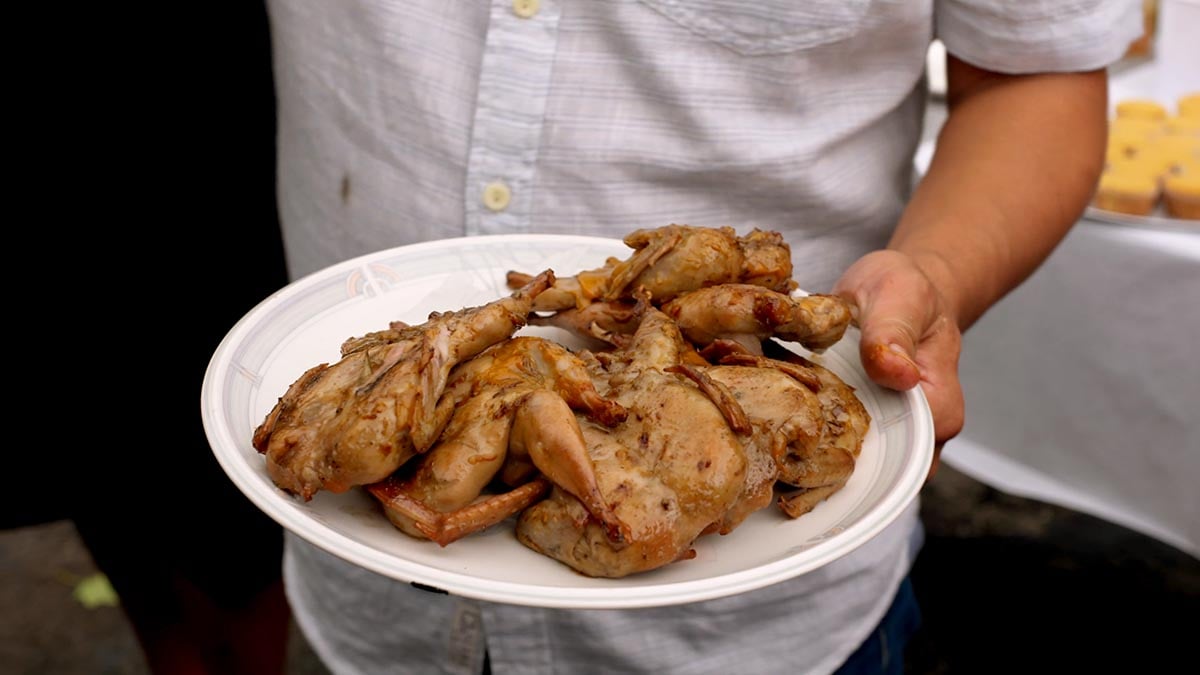
Up to 40% off + extra $30 off with code val30off
up to 40% off Ends soon

Learn how to make quail with perfect cross-hatched char marks, simmer homemade barbecue sauce with surprising ingredients, and prepare homemade quick pickles. Edward’s grilling techniques can be applied to other proteins.
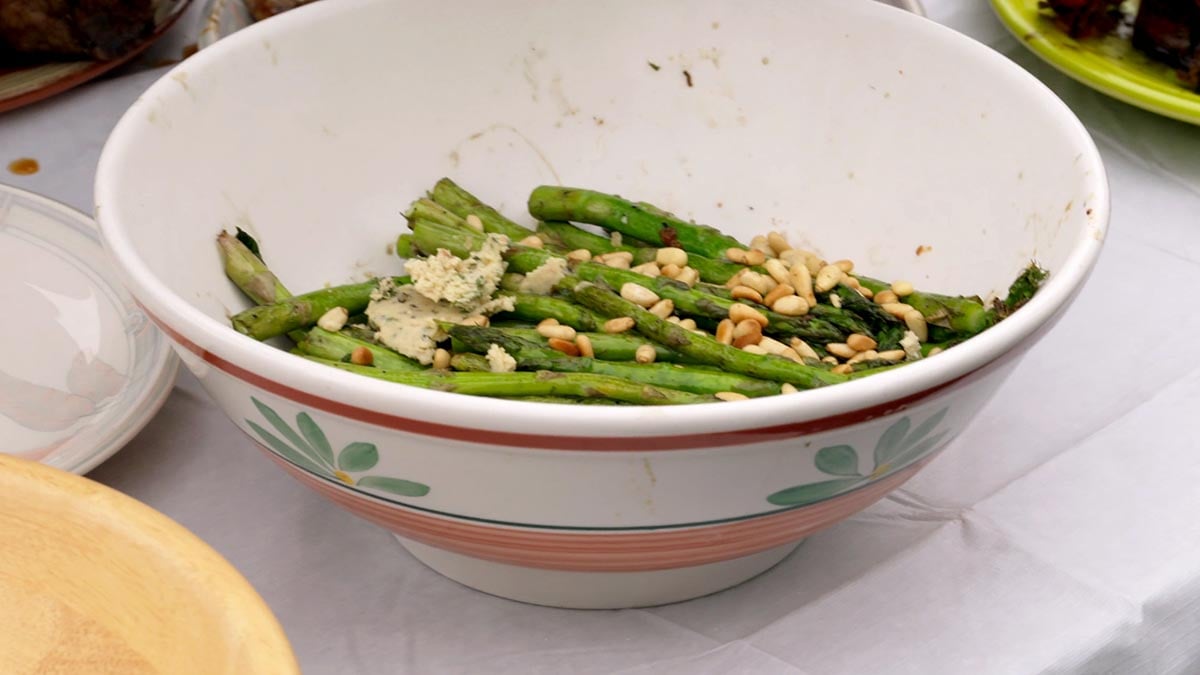
When asparagus season rolls around, throw them on the grill for a nice burnt char. The pine nuts bring an added nutty contrast.

Join Edward and Ben, home chef and community leader, as they throw a fun backyard barbecue for their friends and family. Learn Ben’s special brine, how to handle a variety of meats and vegetables on the grill, including Tomahawk pork chops, asparagus, and sweet potatoes.
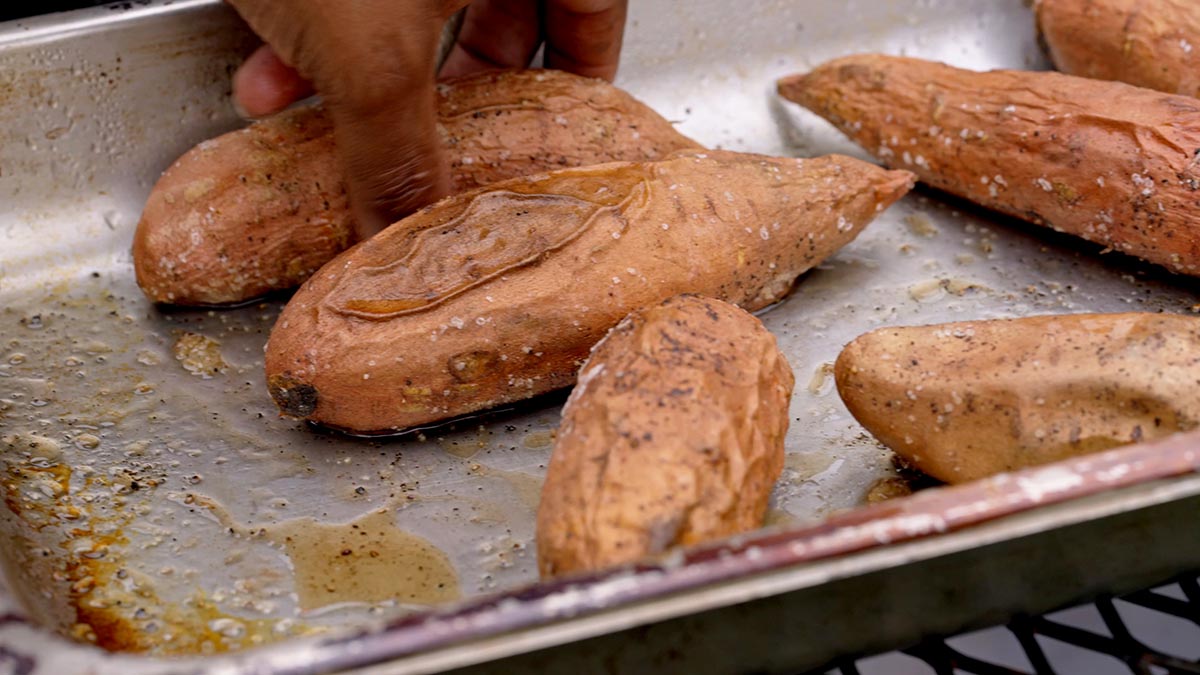
For the dreamiest grilled sweet potatoes — with creamy insides and very crispy outsides — follow this recipe.
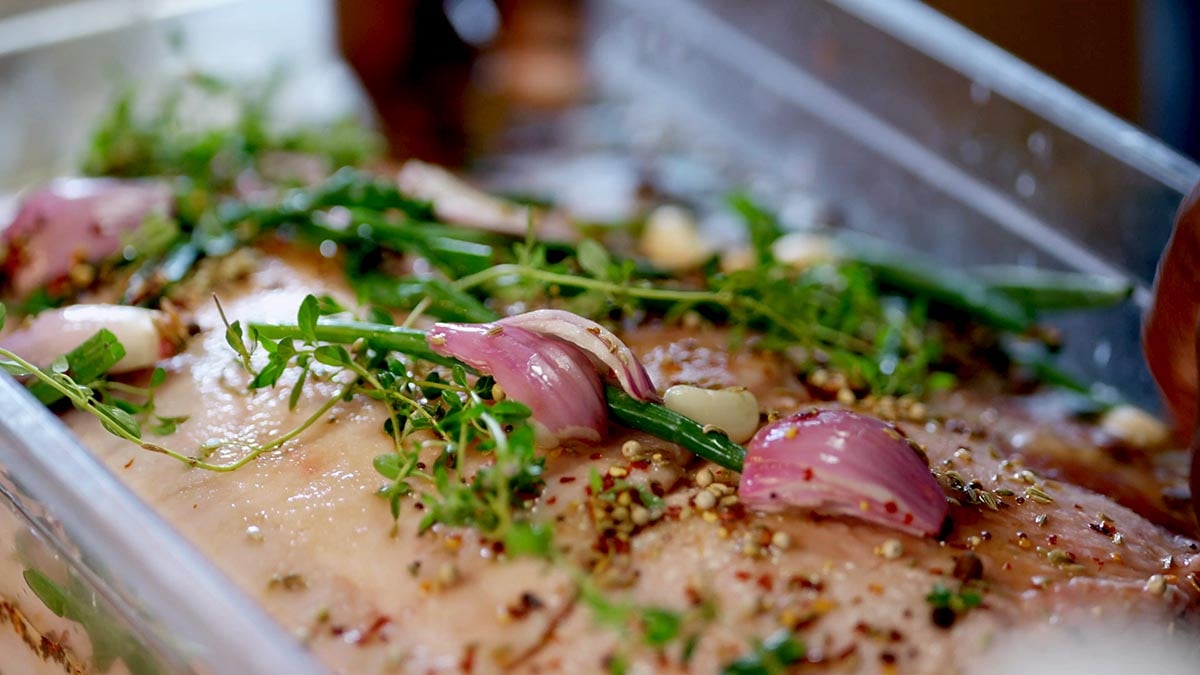
Make your barbecue better with this easy to make brine.
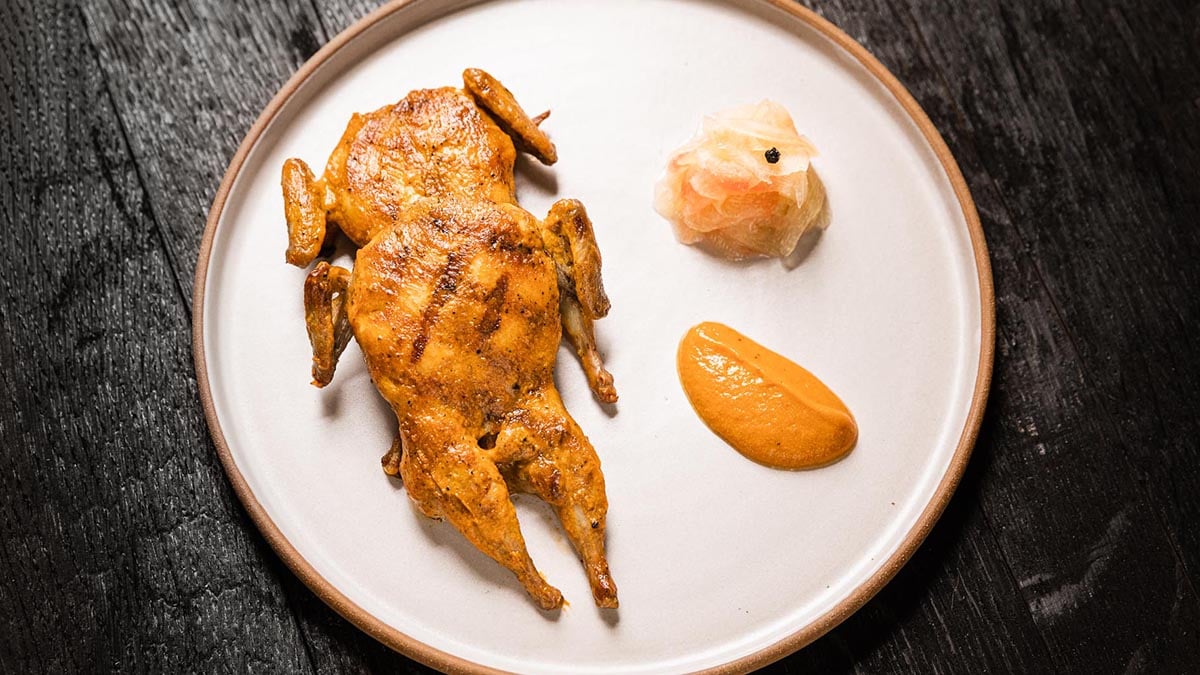
Learn how to make quail with perfect cross-hatched char marks, simmer homemade barbecue sauce with surprising ingredients, and prepare homemade quick pickles. Edward’s grilling techniques can be applied to other proteins.
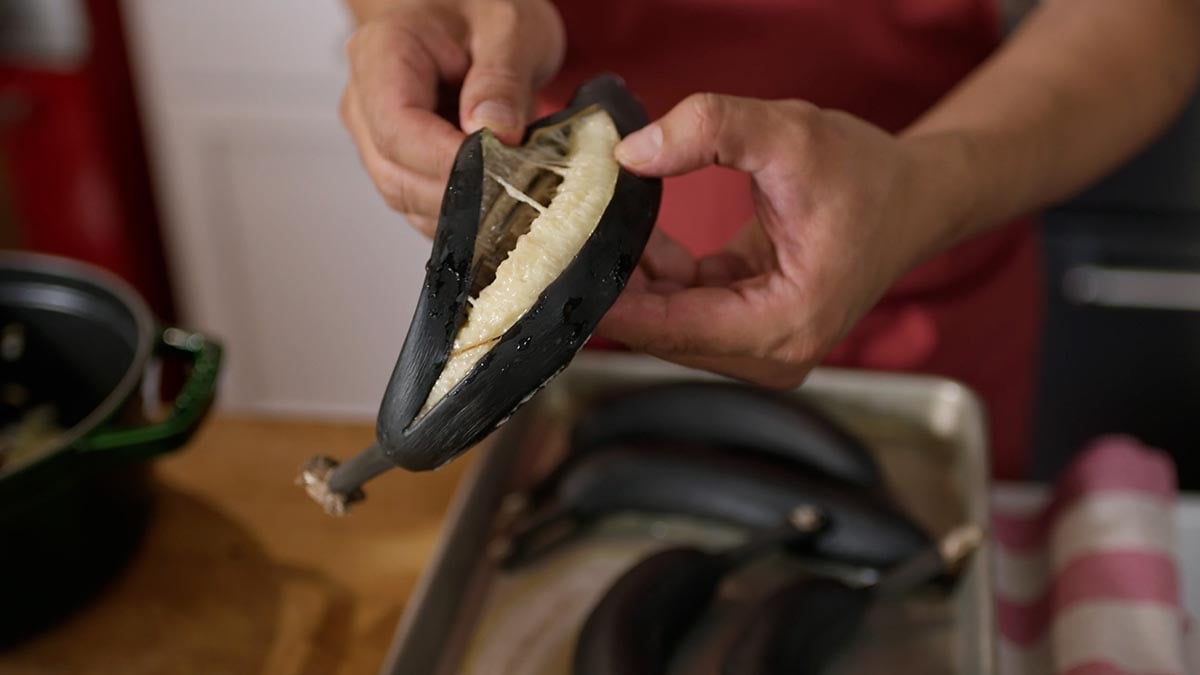
This Filipino-inspired roasted bananas shows that a barbecue sauce can go in numerous directions.
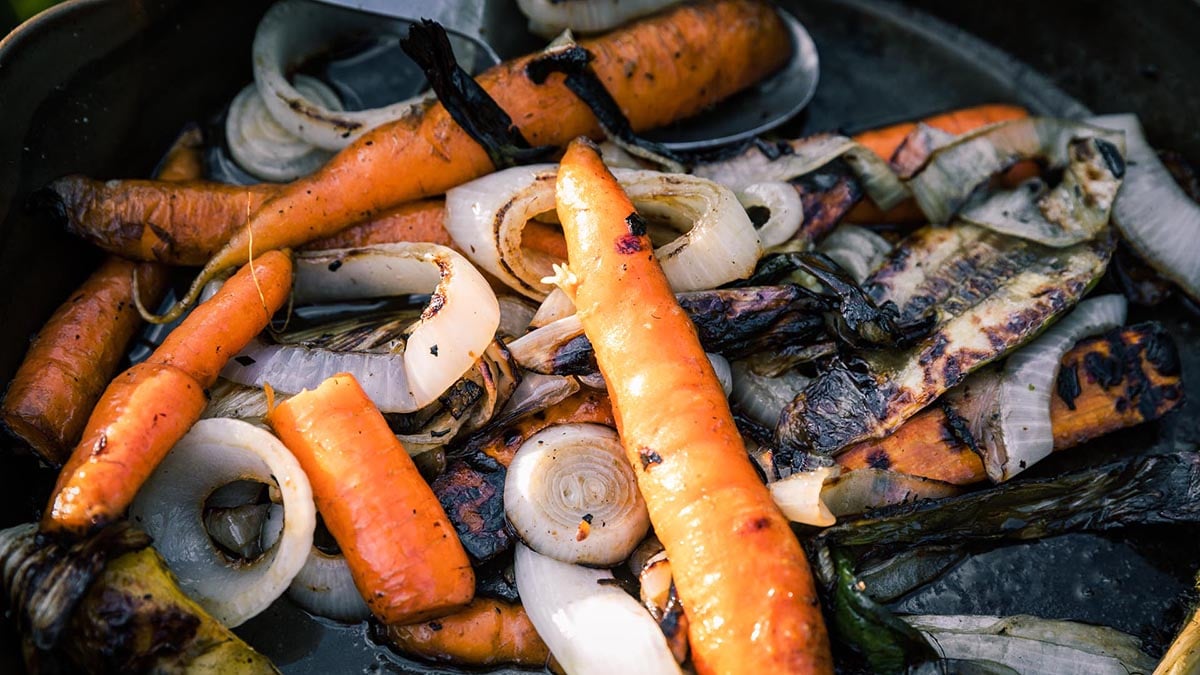
Is there a better way to eat steak than under a melty layer of Korean kalbi butter? An easy and delicious way to elevate your steak. Edward also explains how to check for doneness, manipulate the fire, and accomplish a smoky taste.
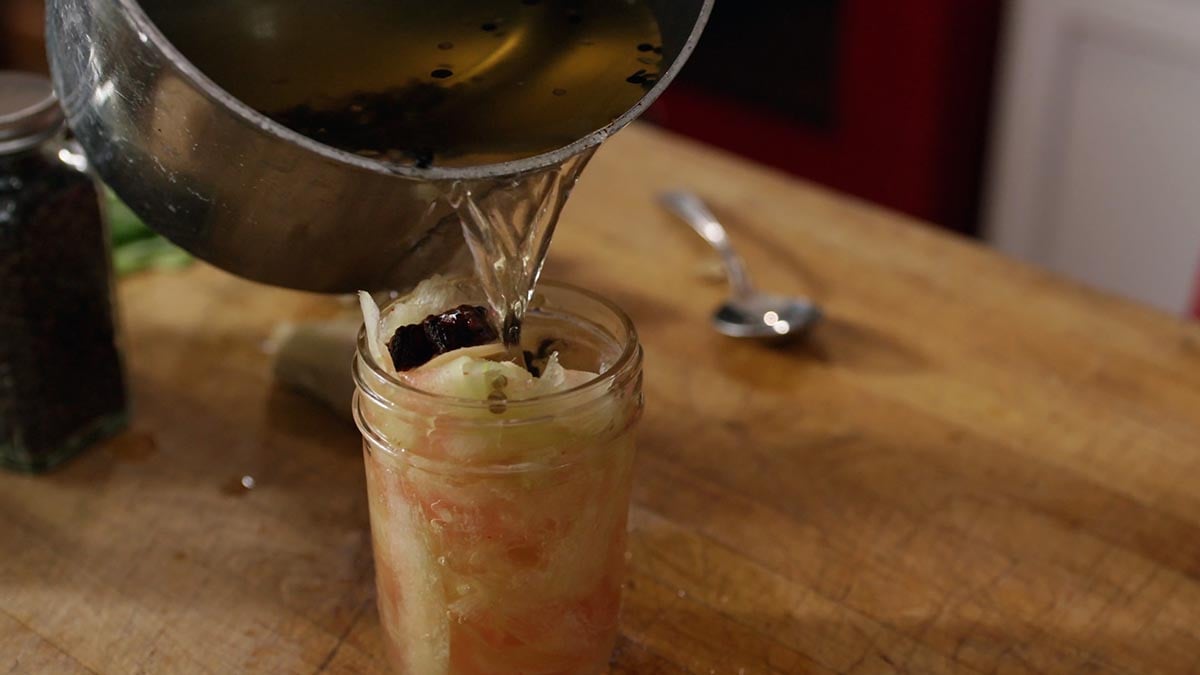
Don’t throw away watermelon rinds because you can pickle that! There’s nothing better in the summer than an ultra fresh watermelon, that’s why Edward likes to save the rinds, pickle it, and bring acidity and crunch to barbecue dishes.
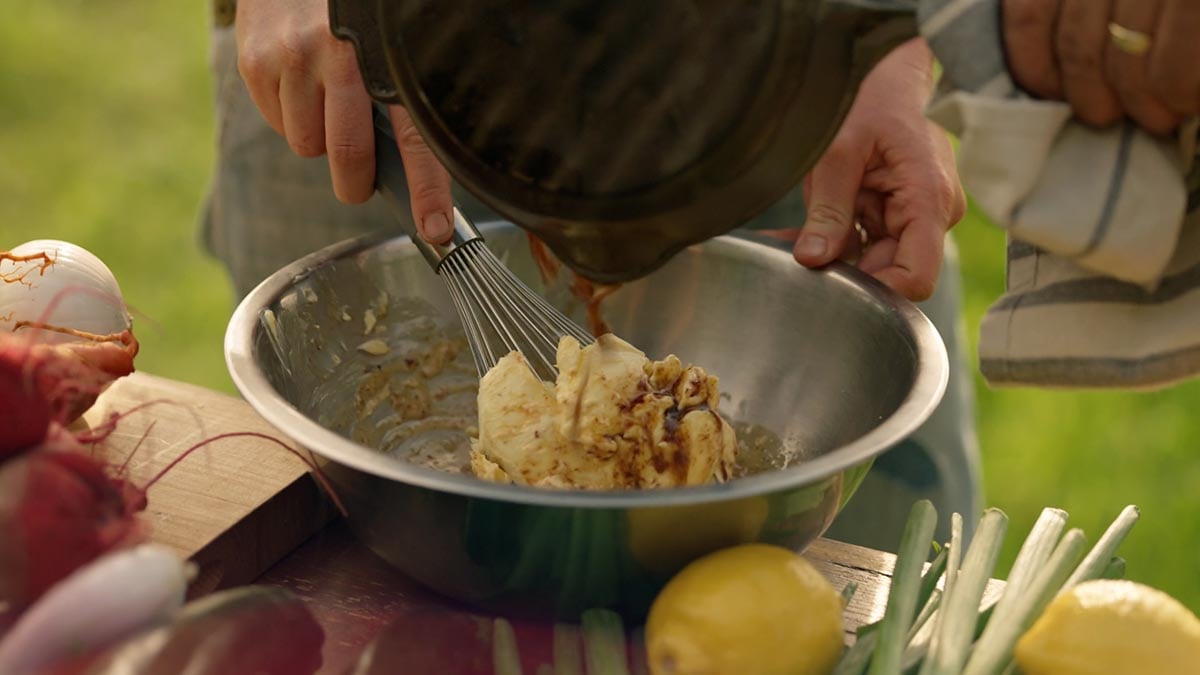
Seasoned butter is one of the most versatile things to keep on hand, especially when seasoned with Korean barbecue flavors and topped on a steak. That’s why magical things happen when soy sauce, sesame oil, and butter come together.
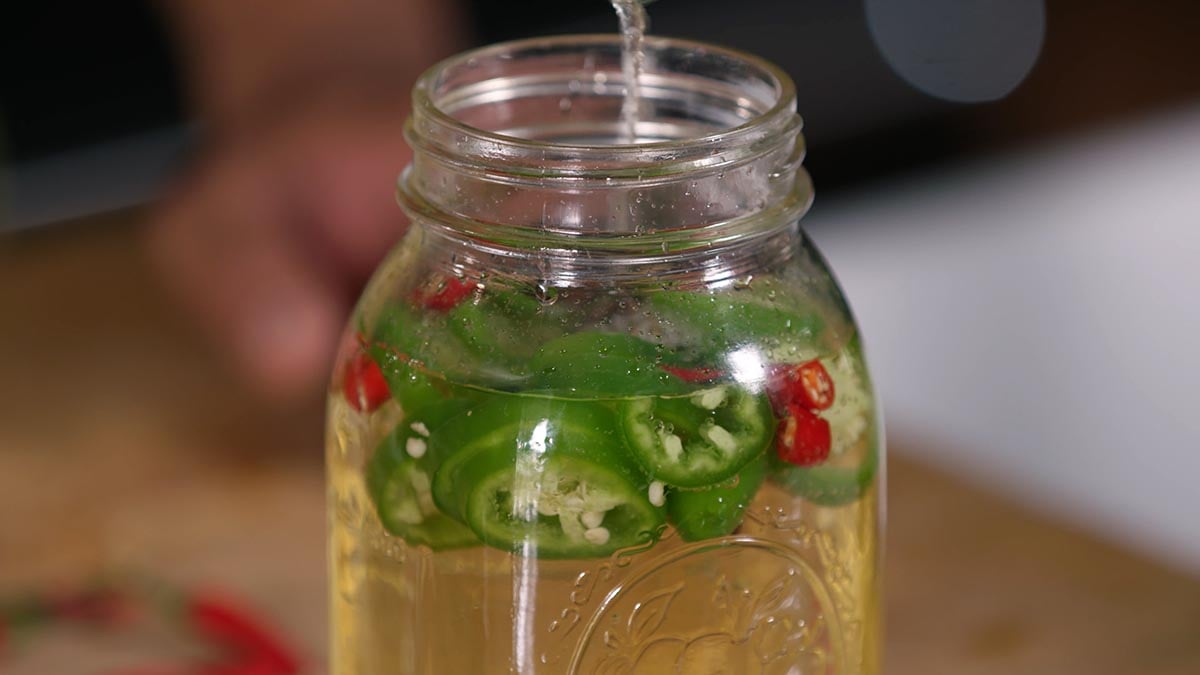
This is an essential item to have on hand in your pantry. Ingredients marinate in a jar for a month and bring tons of complexity to any dish.
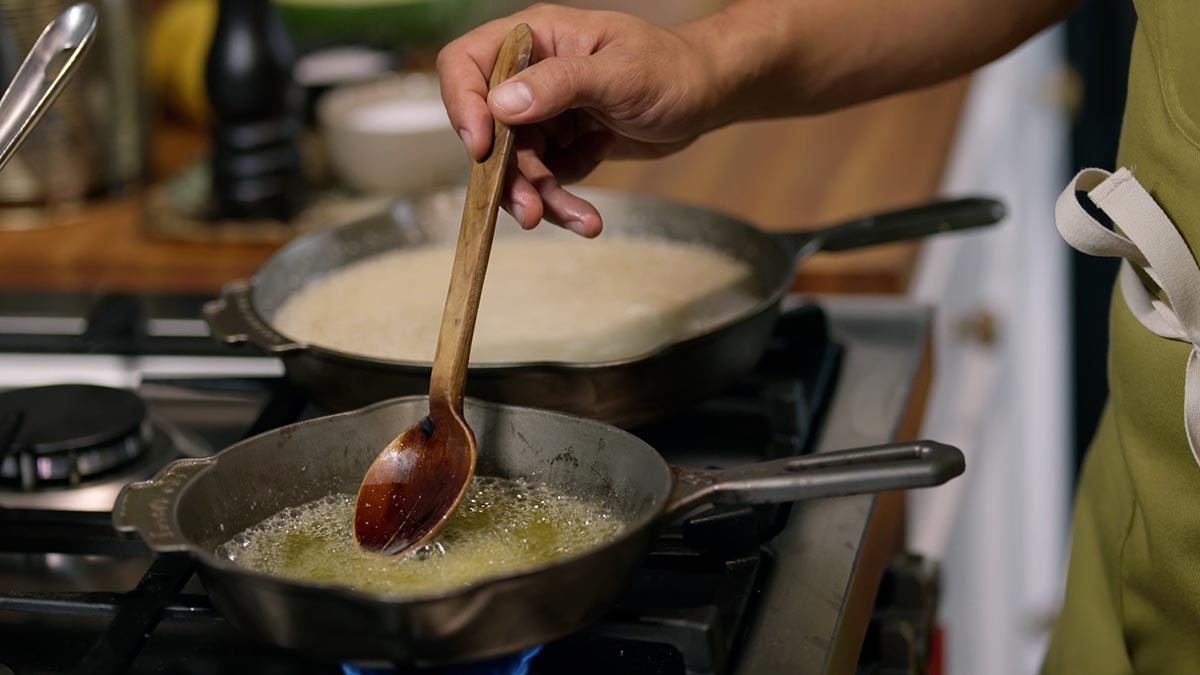
This isn’t your typical brown butter. The tantalizing bourbon and butter aromas will make you want to cook this dish again and again.
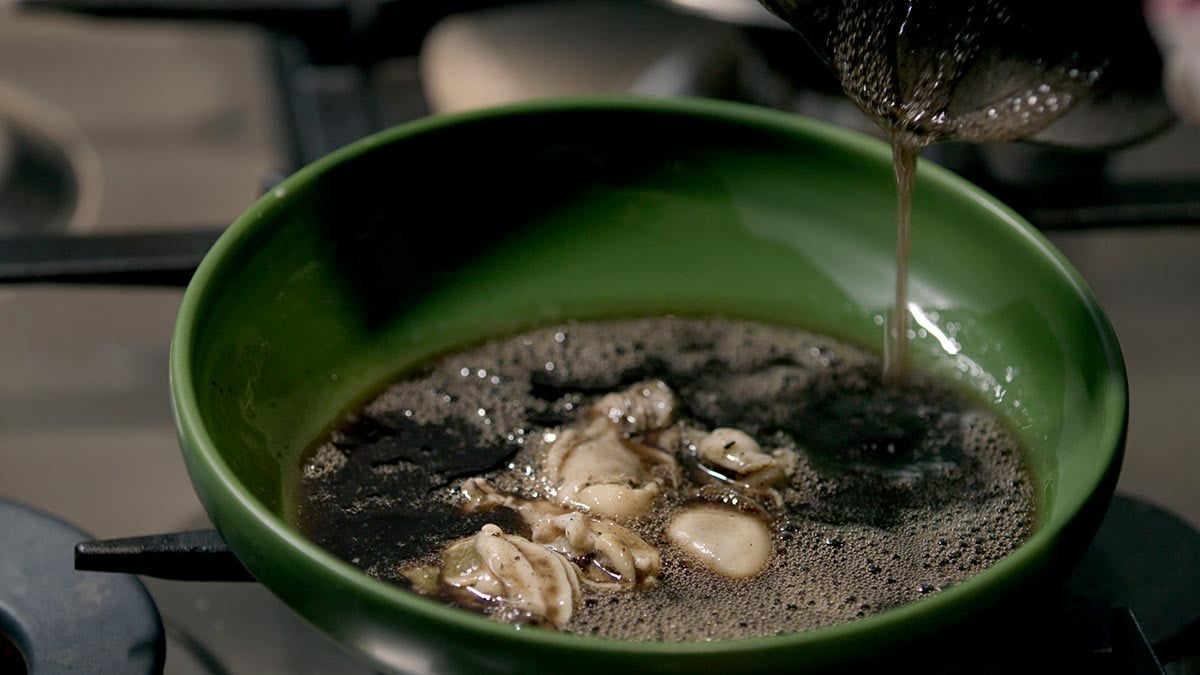
Seafood lovers, take note. Learning how to shuck an oyster is an essential skill. Watch this and you’ll never have any shucking doubts again.
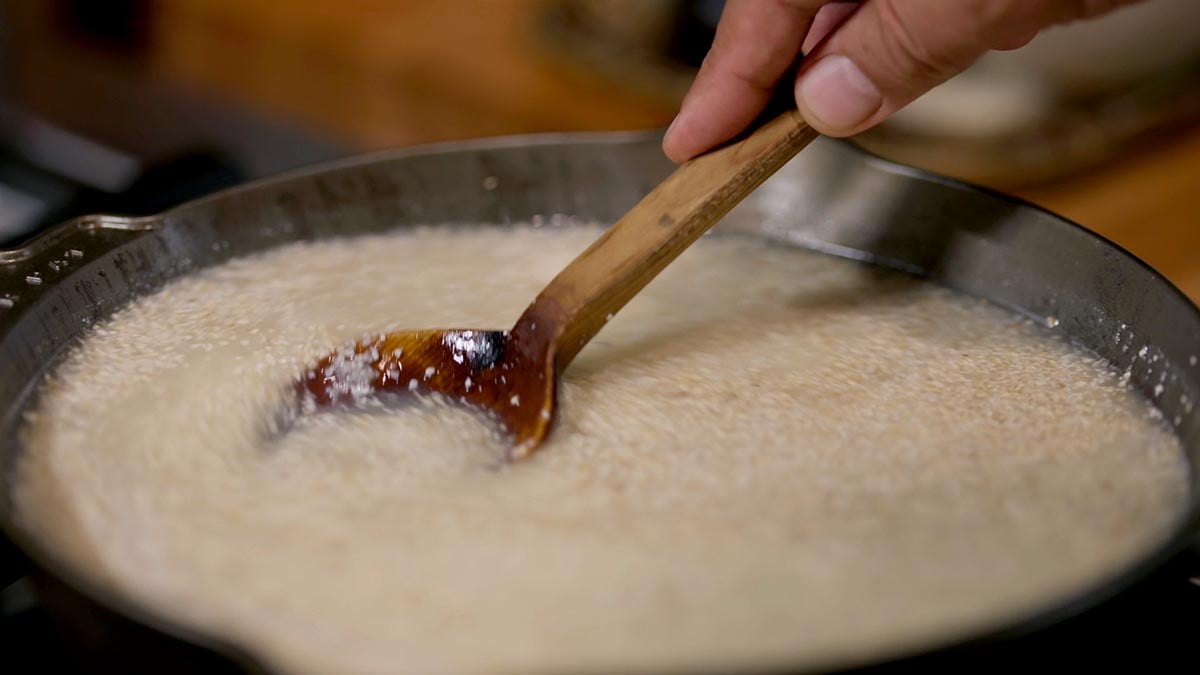
This comfort-worthy, flavor-bursting dish brings together four unique flavors and textures including oysters, bourbon brown butter, creamy grits, and hot vinegar.
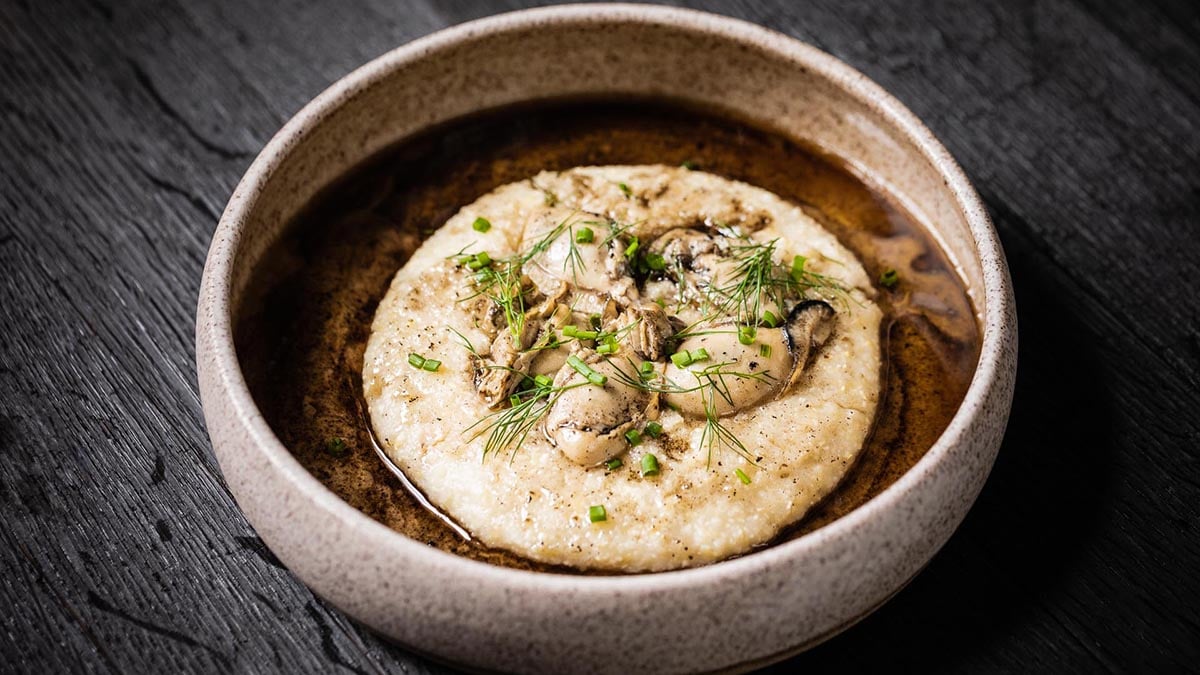
Edward revisits the Southern classic dish of shrimp and grits with his own unique take that combines his love of bourbon and oysters.
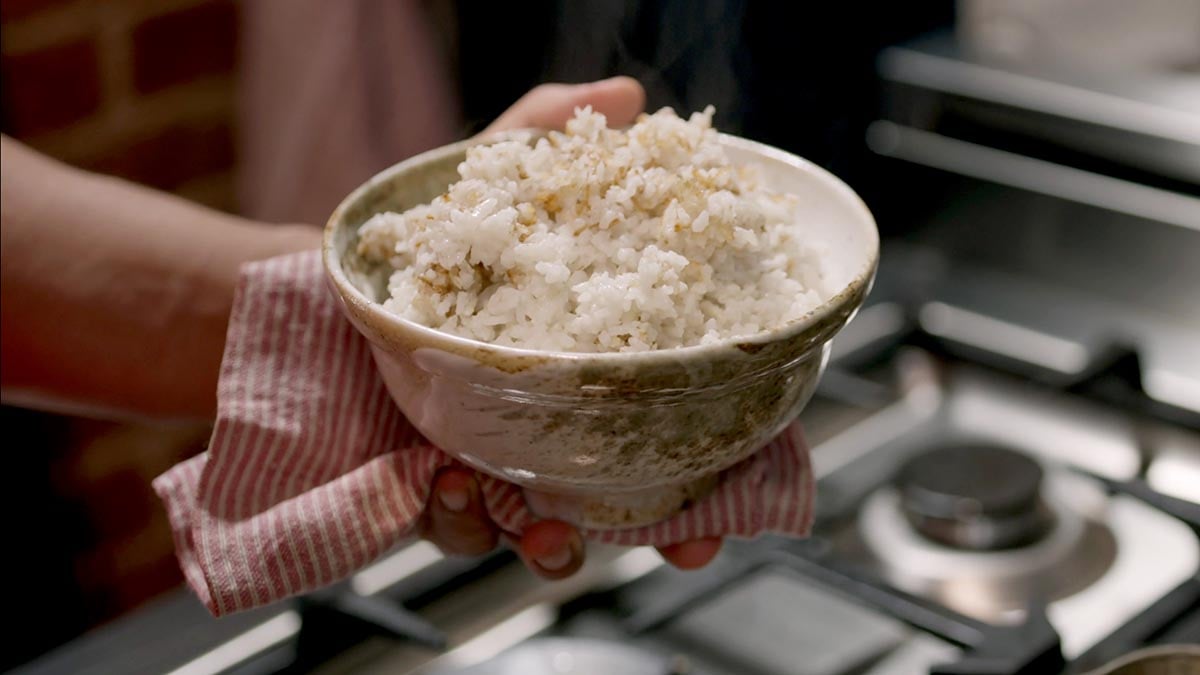
Turn simple rice into a showstopper. Simmer rice in coconut milk for a rich and sweet complexity.
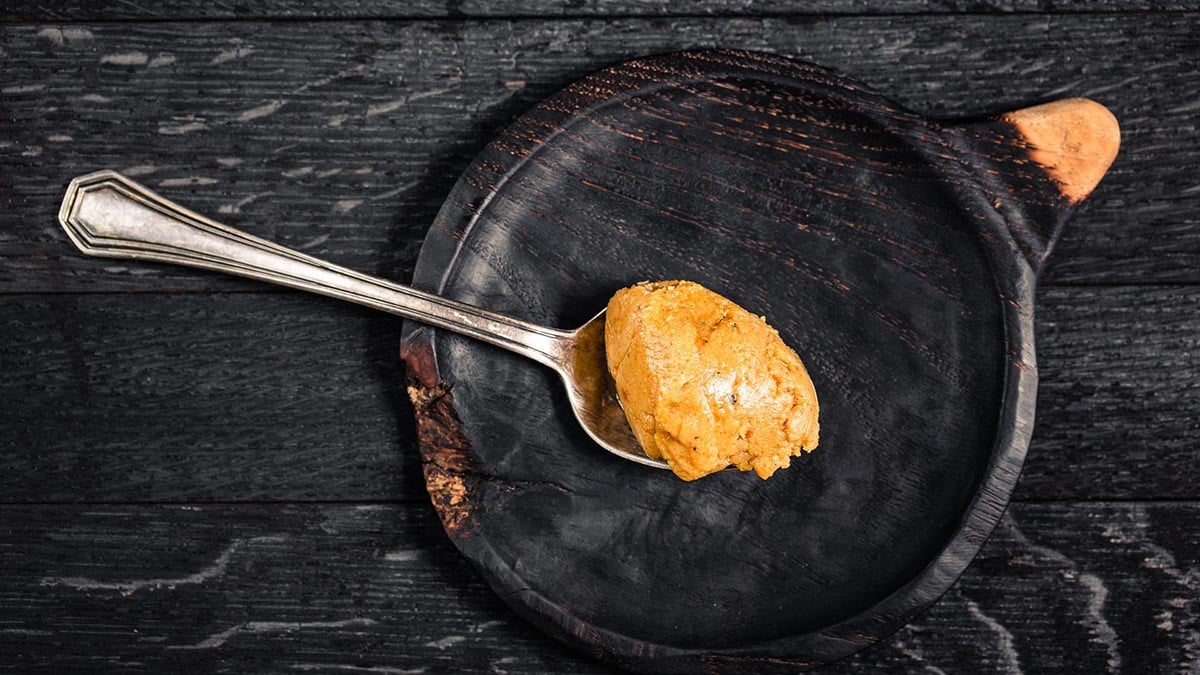
Learn the basics of making savory, creamy peanut butter. His method involves roasting peanuts and blending them with Asian ingredients like sesame oil for an umami-tasting butter that is perfect to use in cooking and not just spreading on toast.
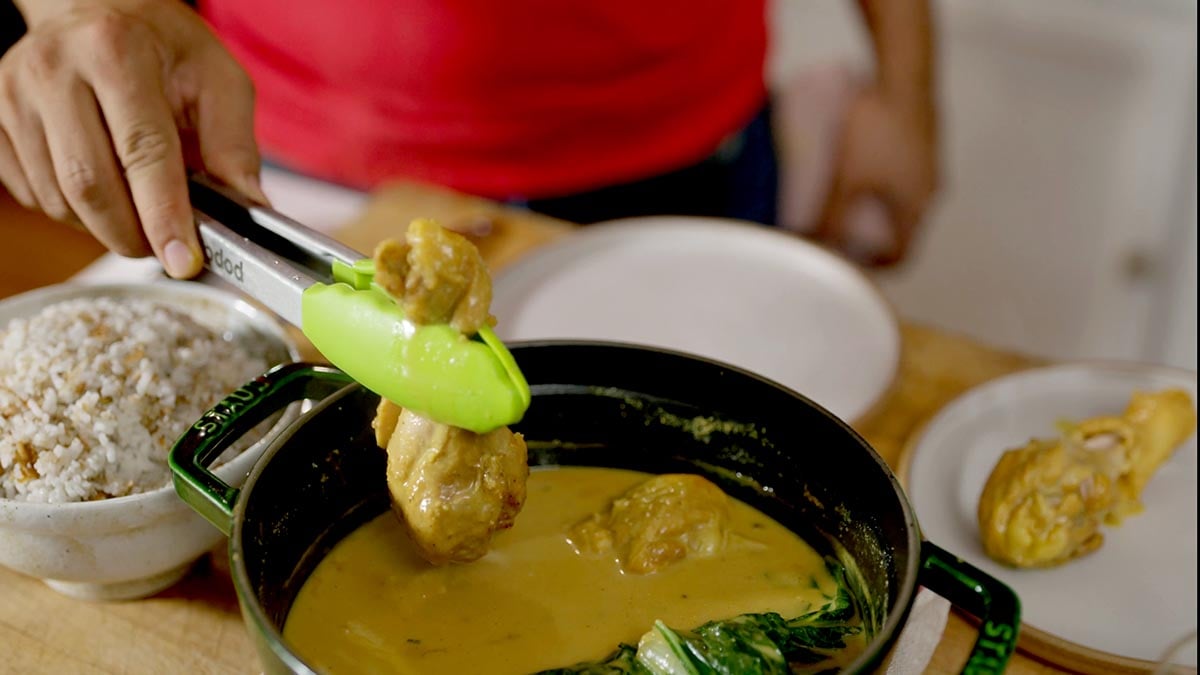
Let braised chicken drumsticks come to the rescue with this wonderful weeknight recipe. Bring excitement to your family dinner and make it faster, easier, and tastier.
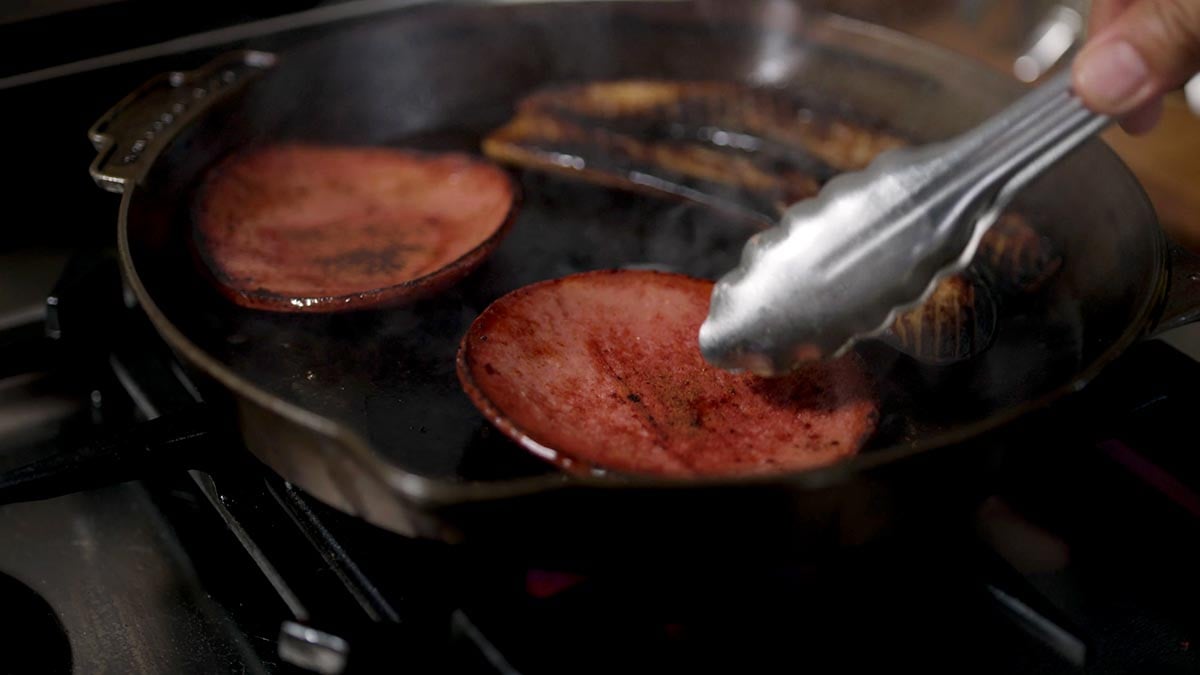
Recreate Edward’s favorite childhood sandwich. The restaurant-style reinterpretation with seared Japanese eggplant and mushroom elevates the classic dish, adding roasted garlic to enhance the mayo.
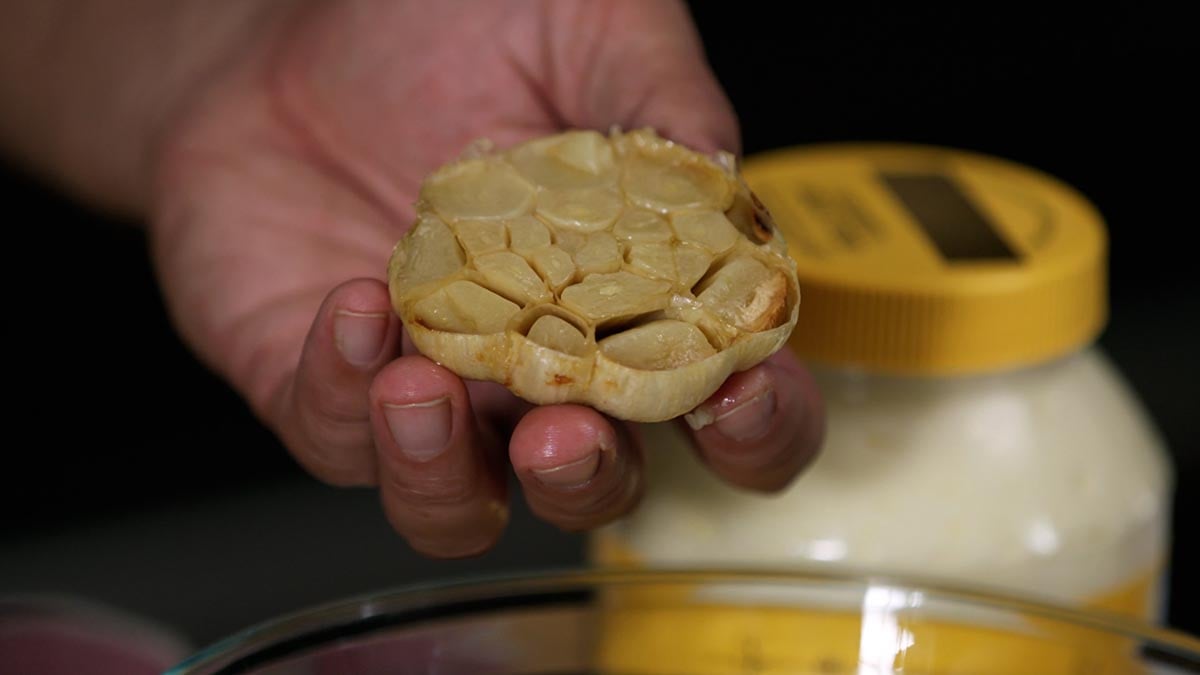
Roasting garlic in aluminum foil on the grill is the best way to roast garlic. It’s perfect to enhance the flavor of any dish.
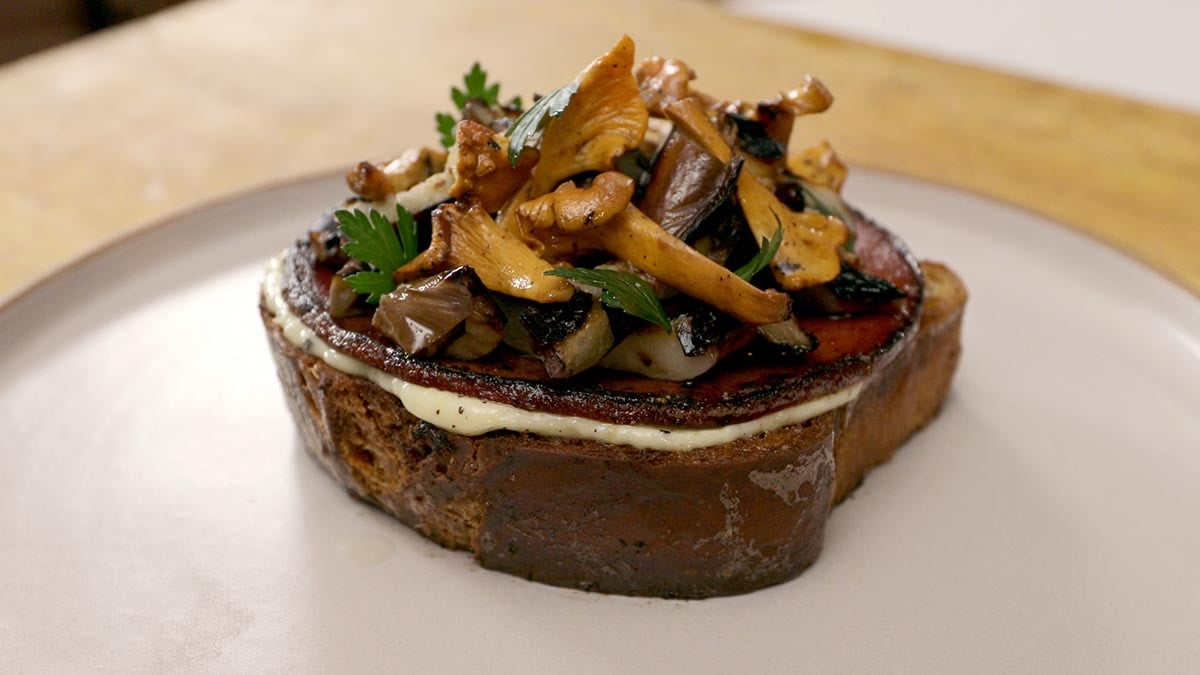
Edward teaches how to utilize one of his signature flavors: Burnt. Discover the gentle balance of burning without charring, as you learn how to master the Maillard reaction and release deliciousness from the simplest ingredients. Recreate Edward’s his favorite childhood sandwich and learn how to sear and caramelize as you elevate the gentle flavors of eggplant, mushroom and bologna, along with roasting garlic to enhance mayonnaise.
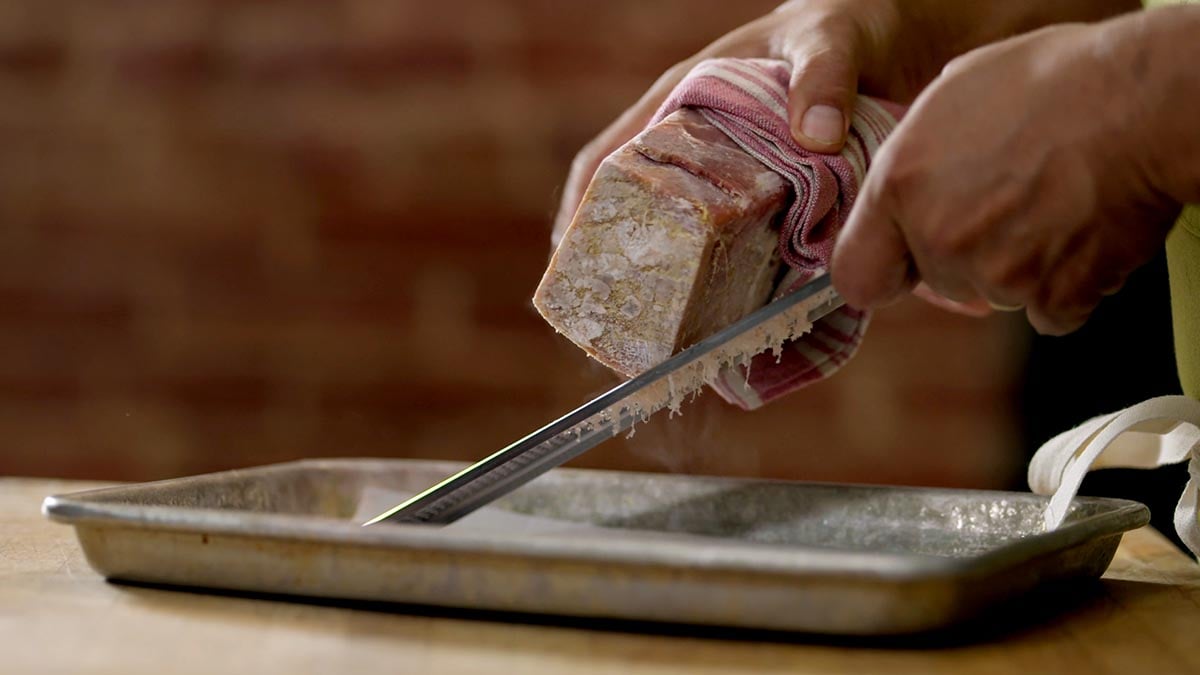
It’s always important to repurpose leftovers, that’s why yesterday’s ham is wonderful when turned into ham salt. Learn how to freeze ham, grate on micro plane, then toast in oven until dried. The result? Tons of added flavor.
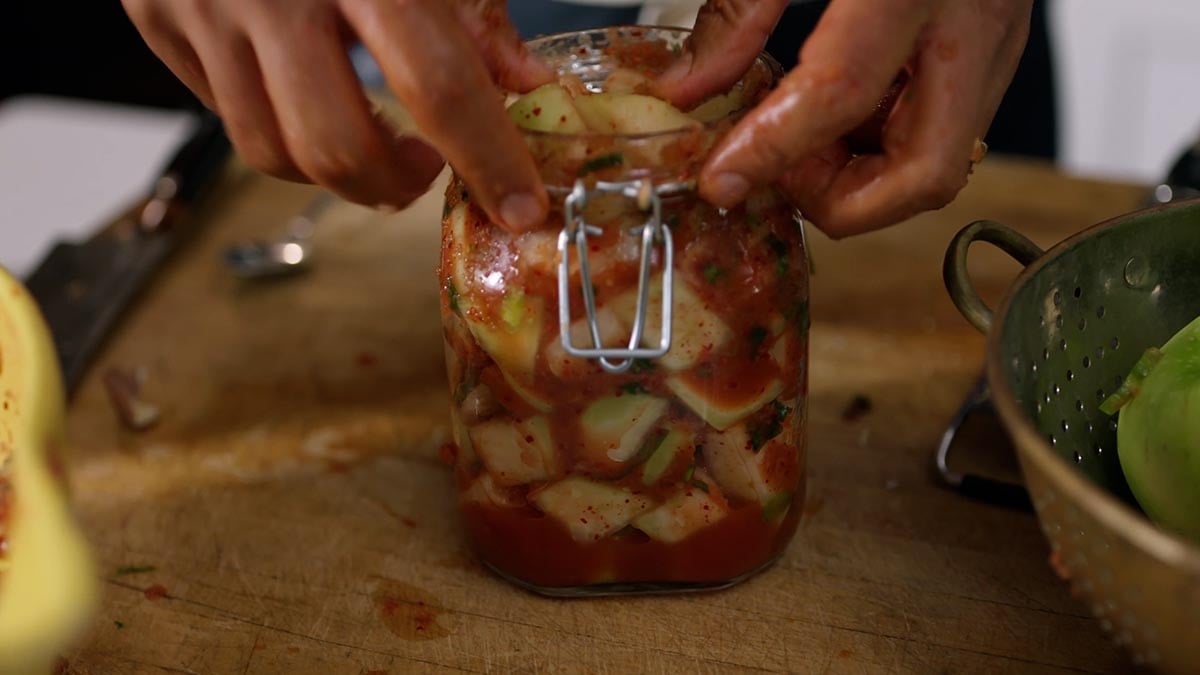
Packing kimchi in a jar is a skill of itself. Once you learn this technique, you’ll be able to turn so many vegetables into delicious kimchi.
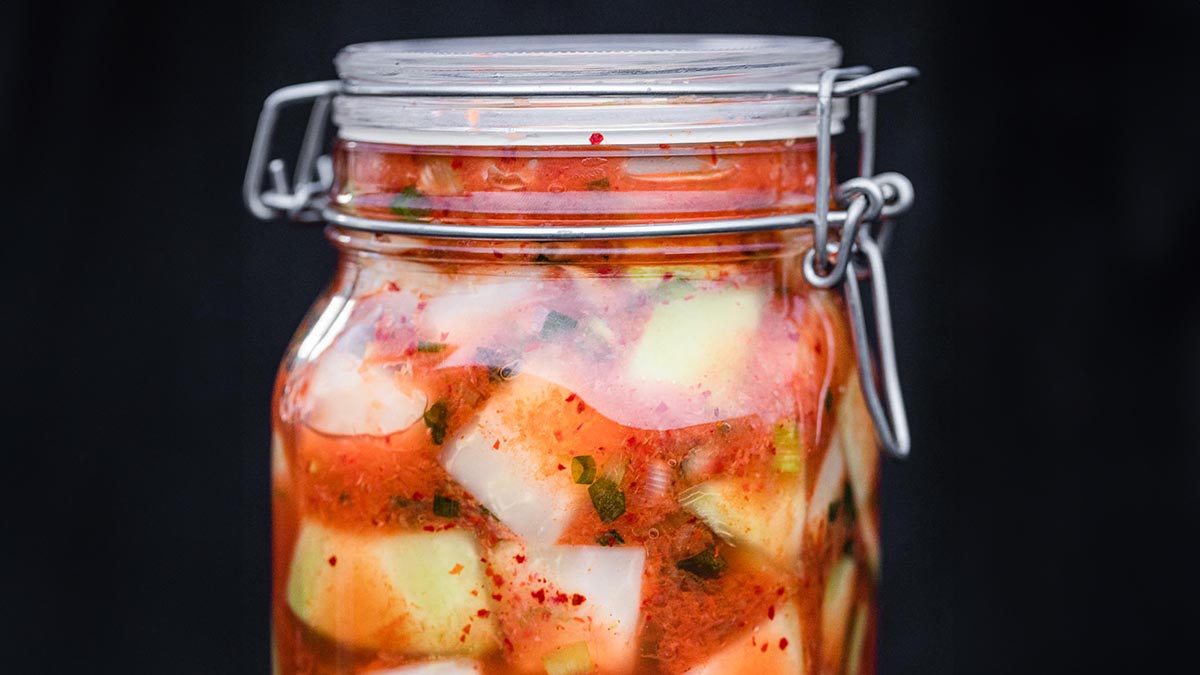
With just a few ingredients, you too can simply ferment foods at home. Edward shows how to make kimchi from kohlrabi, which is a dense vegetable that can hold up well through fermentation. While this vegetable is less traditional for kimchi, expect the usual elements like Korean chili flakes, scallions, garlic, and ginger to tantalize the taste buds.
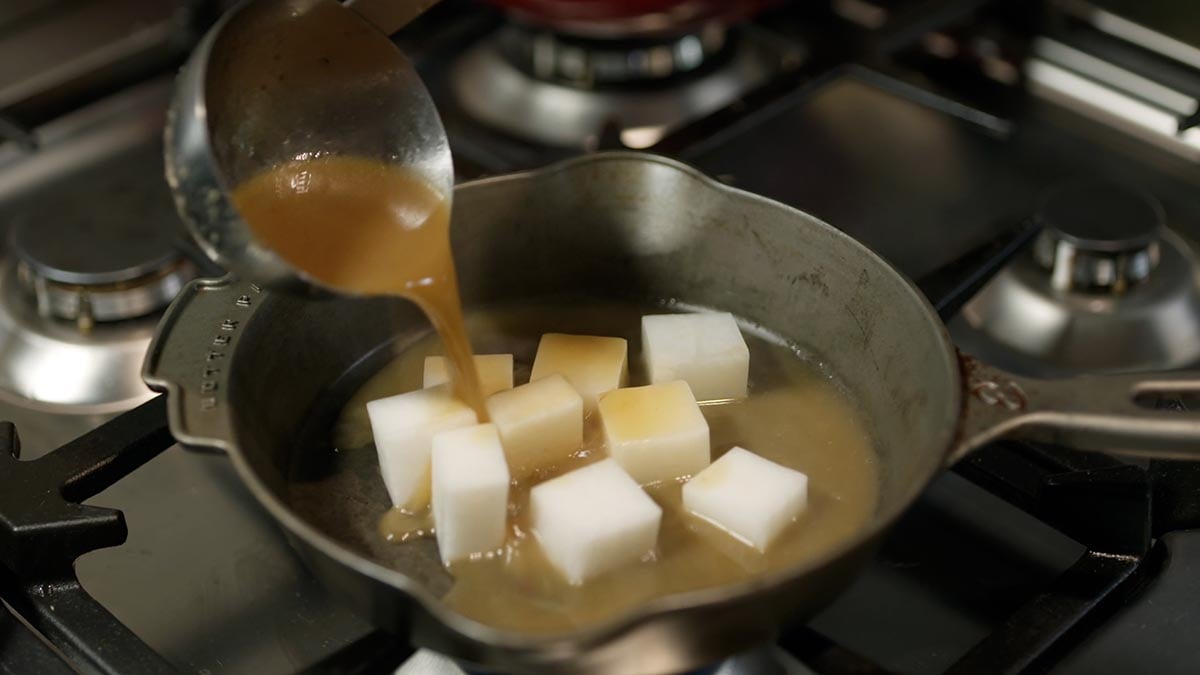
Edward highlights silken tofu in this dish of fatty broth, braised daikon and an apple-ginger puree. Beyond demonstrating how to create a rich broth, braise vegetables, and plate an elegant dish, he also emphasizes knife skills such as cutting radishes into perfect cubes and matchsticks.
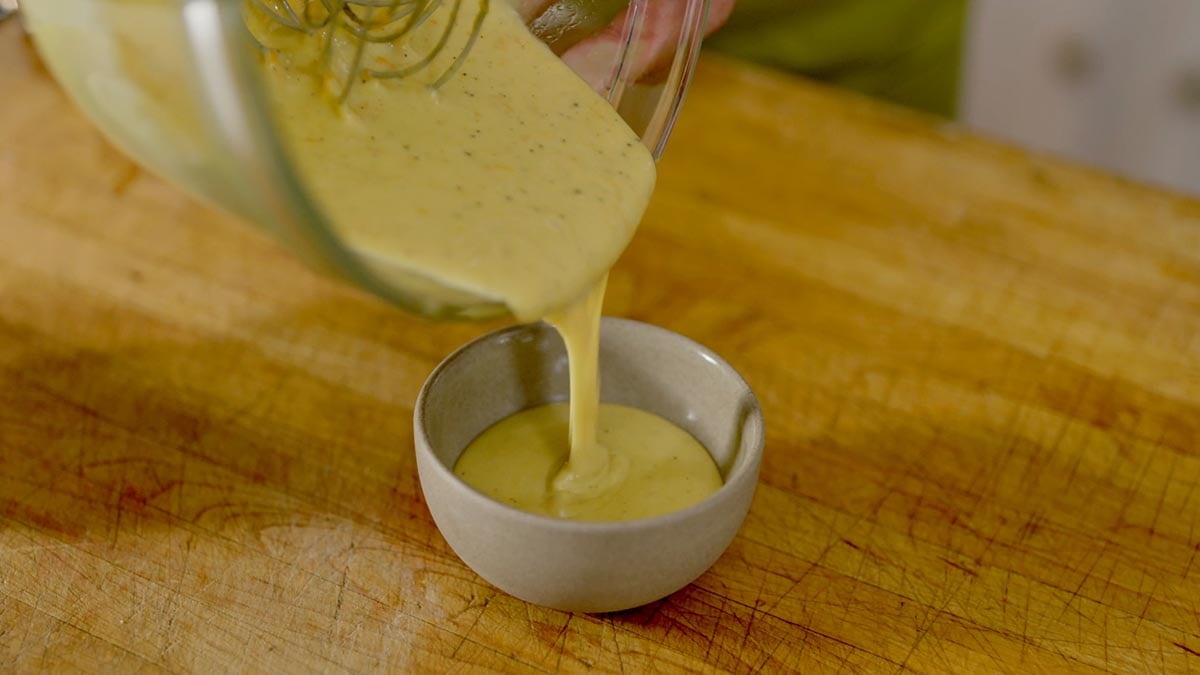
One of the most intriguing components of this dish is the creamy egg yolk sauce, a riff on the classic Hollandaise sauce with miso paste, bringing a rich and umami-packed contrast to the light tasting fish.
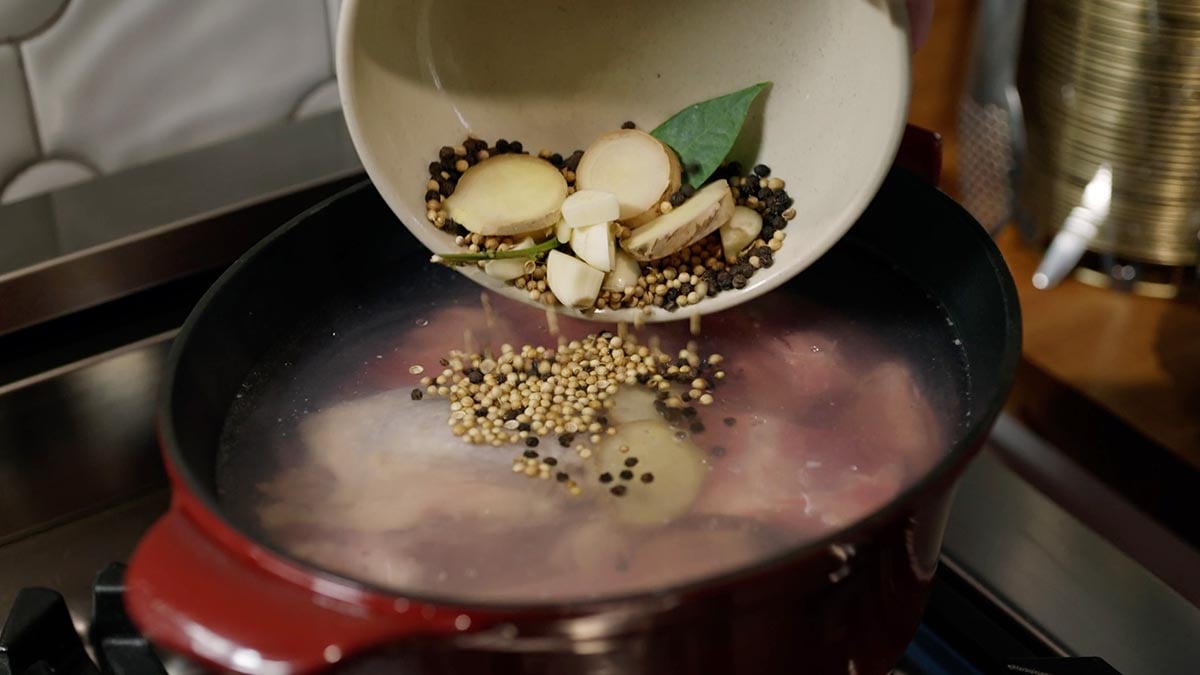
There’s no better way to stay cozy than with a fatty and elegant meat stock. Boil beef bones with aromatics for hours for a bold broth.
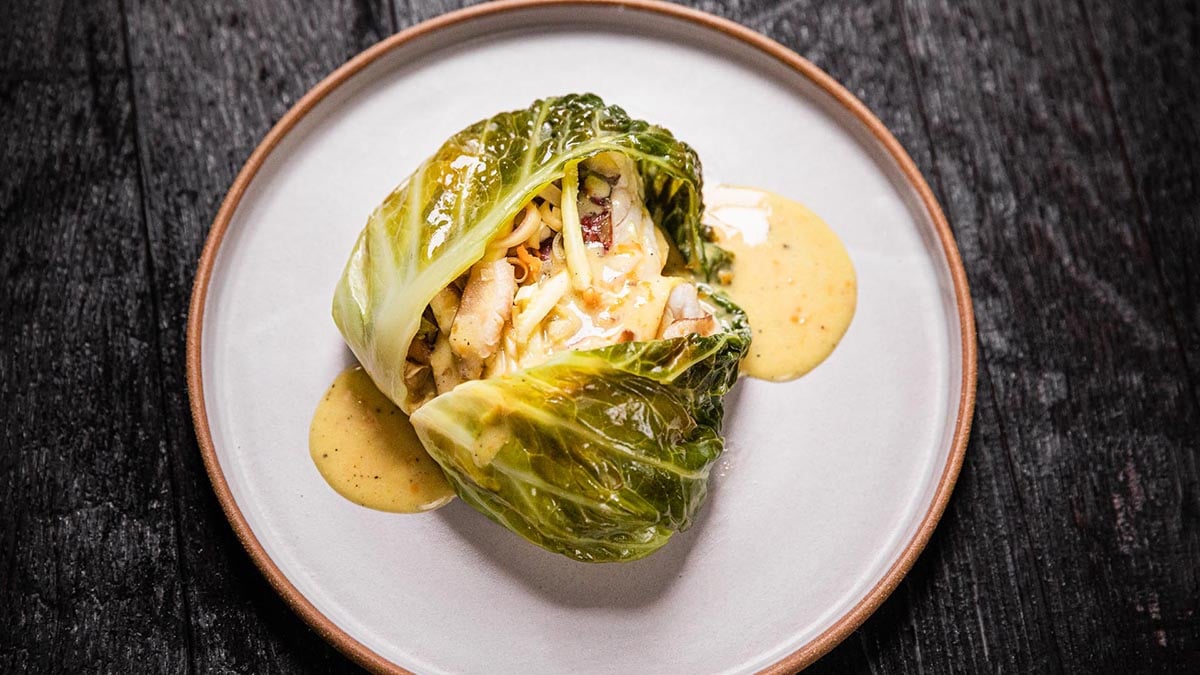
A delicious and healthy meal that’s easy to make any night of the week. Learn how to steam fish with vegetables and filled with intricate flavors. Cabbage makes the perfect vessel for a wrap. Learn how to blanch, shock, and stuff the cabbage. Healthy, gluten-free, and easy to make!
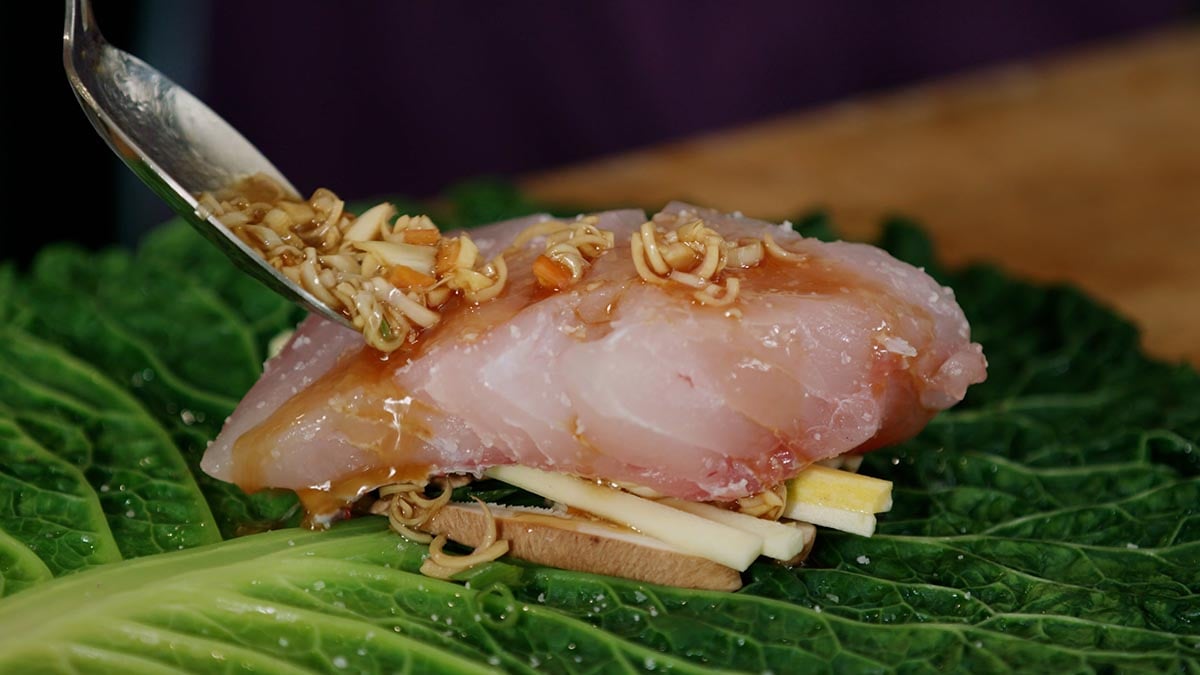
Learn the basics of making flavor-packed marinades and how to build flavors.
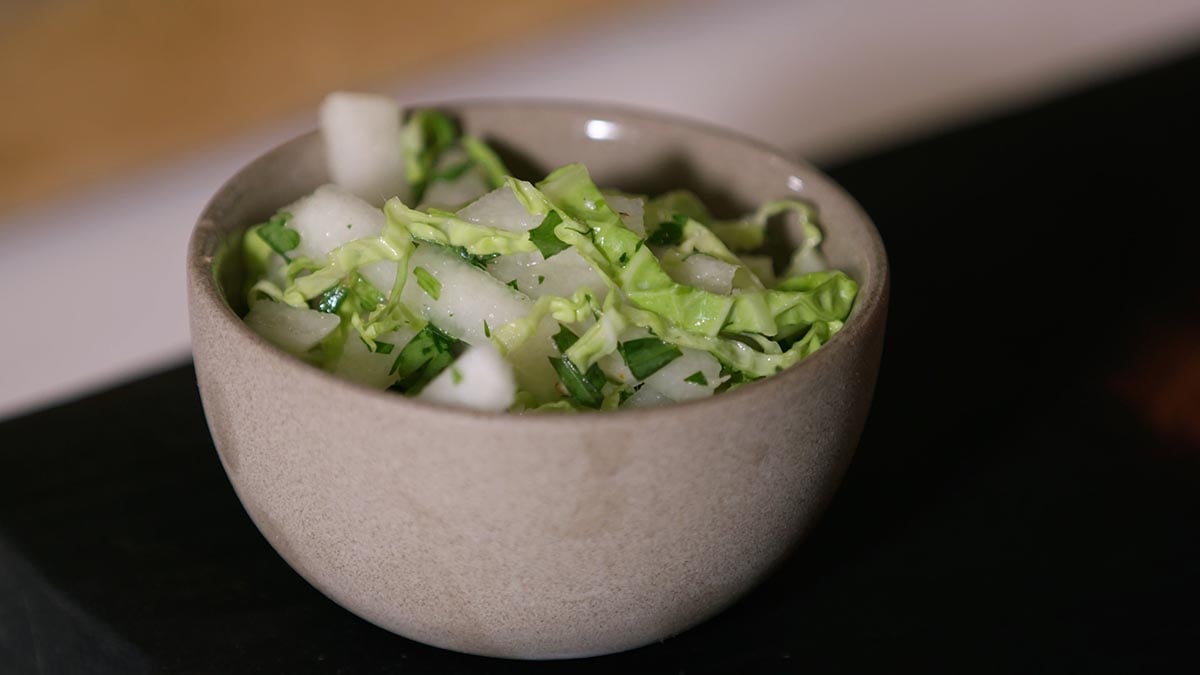
Bump up boring coleslaw with this creative riff. The Asian pear and cabbage bring a crisp sweetness and punch of bright acidity.
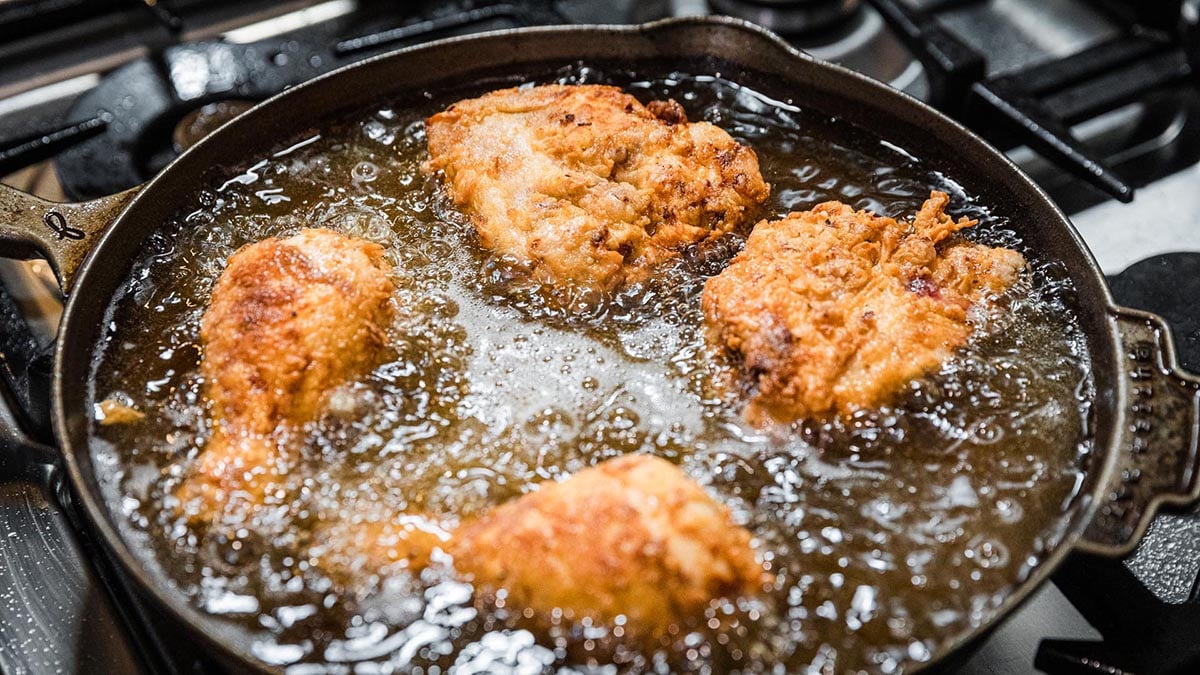
Follow these simple steps and your buttermilk fried chicken will come out perfectly juicy on the inside and crispy on the outside.
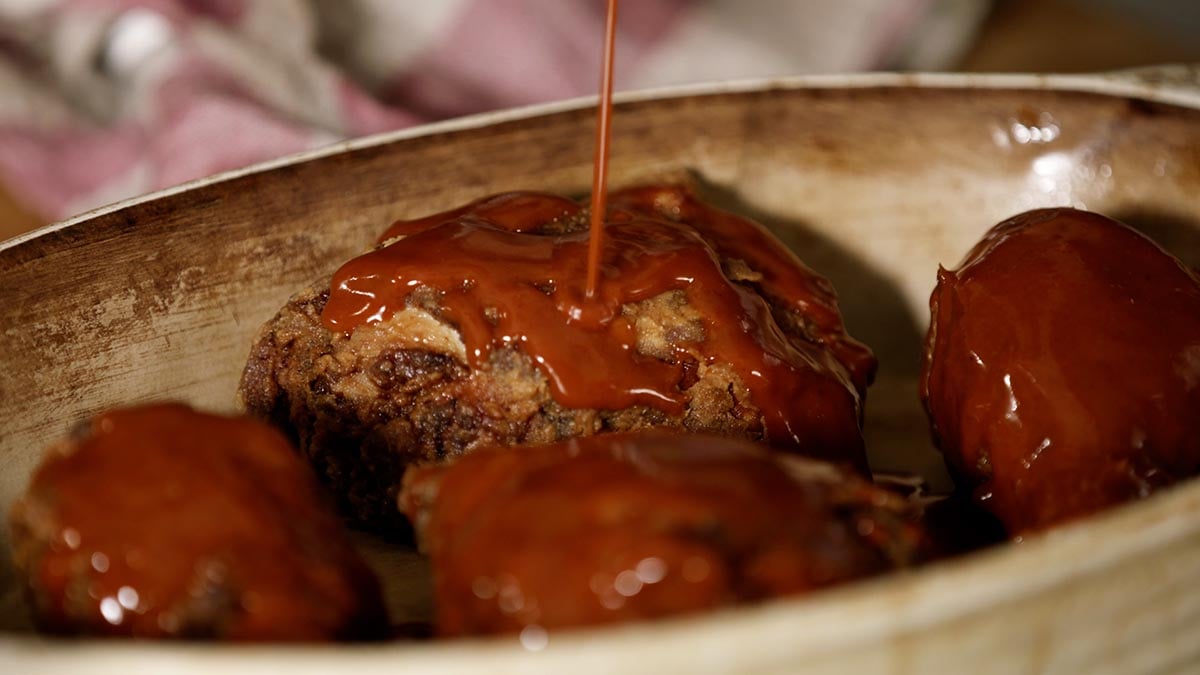
It’s spicy, tangy, sweet, and sultry – gochujang sauce hits all the right notes for the ultimate flavor bomb. Put it on fried chicken or keep it in the fridge to bring spice to everything else.
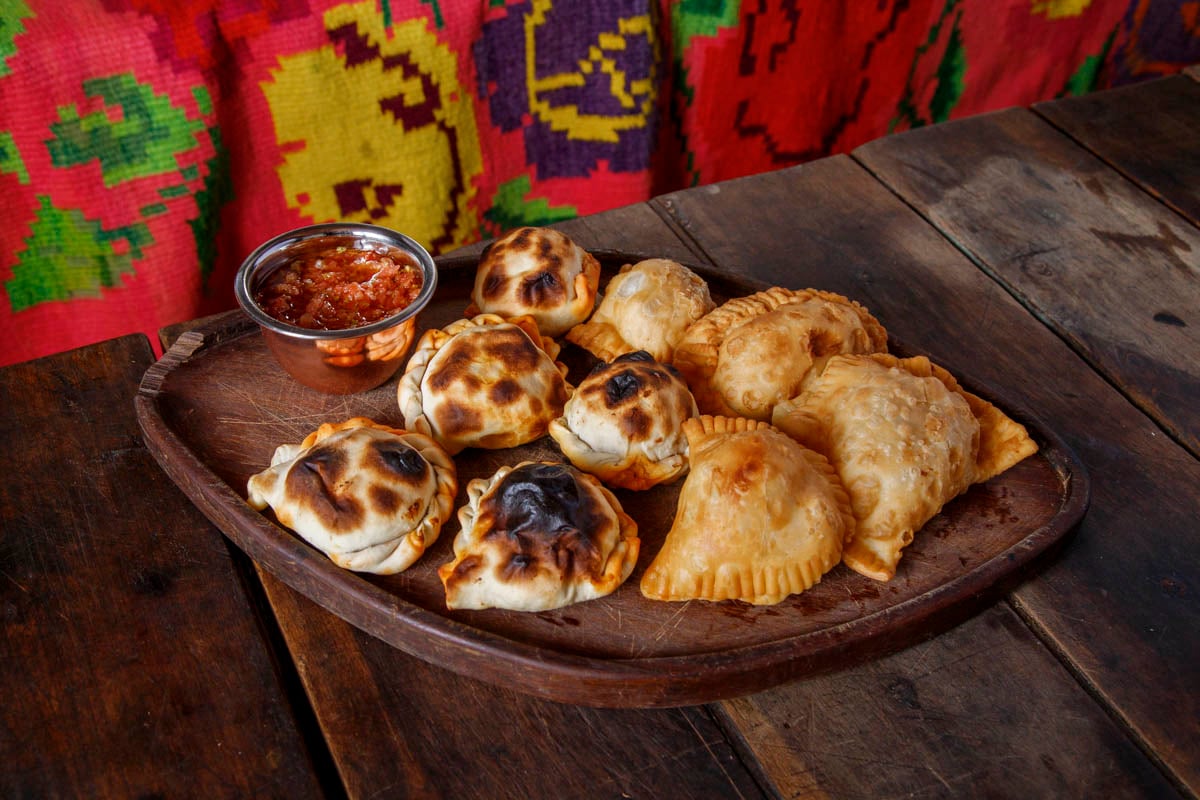
Not only is this family-friendly snack easy to make, but it’s also the perfect meal for the kids to get involved too. Learn the “repulgue”, how to properly seal and fold the empanada like a pro.
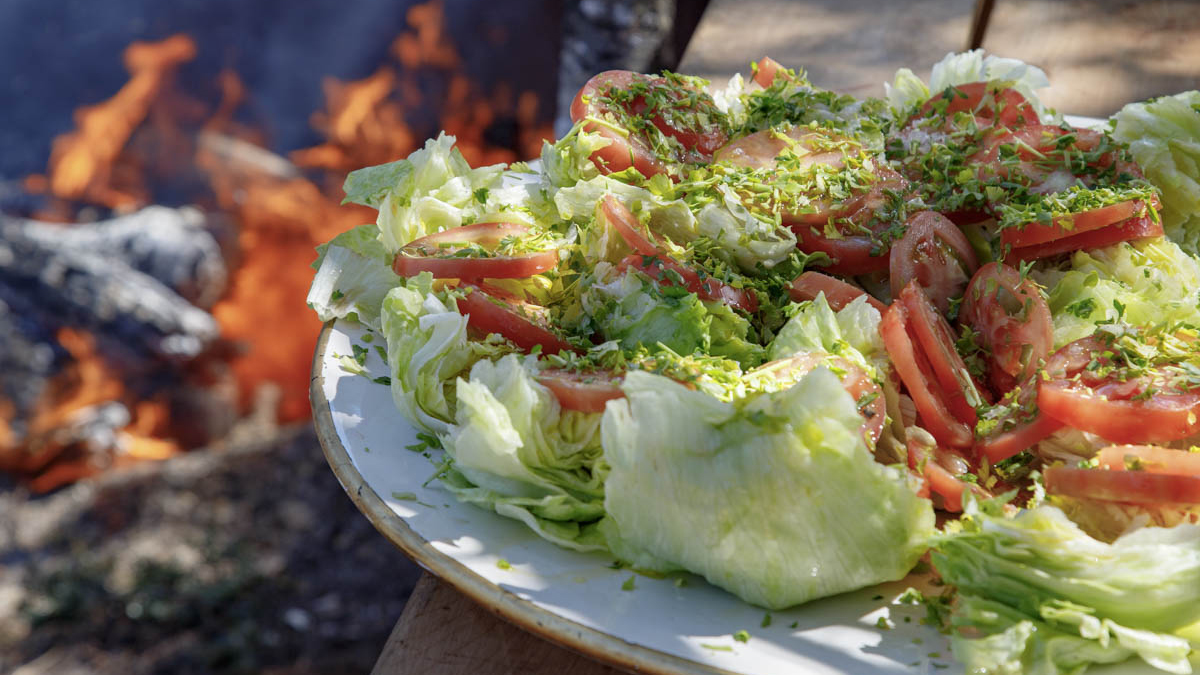
Francis doesn’t like salads that are busy and cramped on a plate. Instead, he leans towards the generosity of space. Learn how to make one of Francis’s favorite salads that he calls simple yet noble.
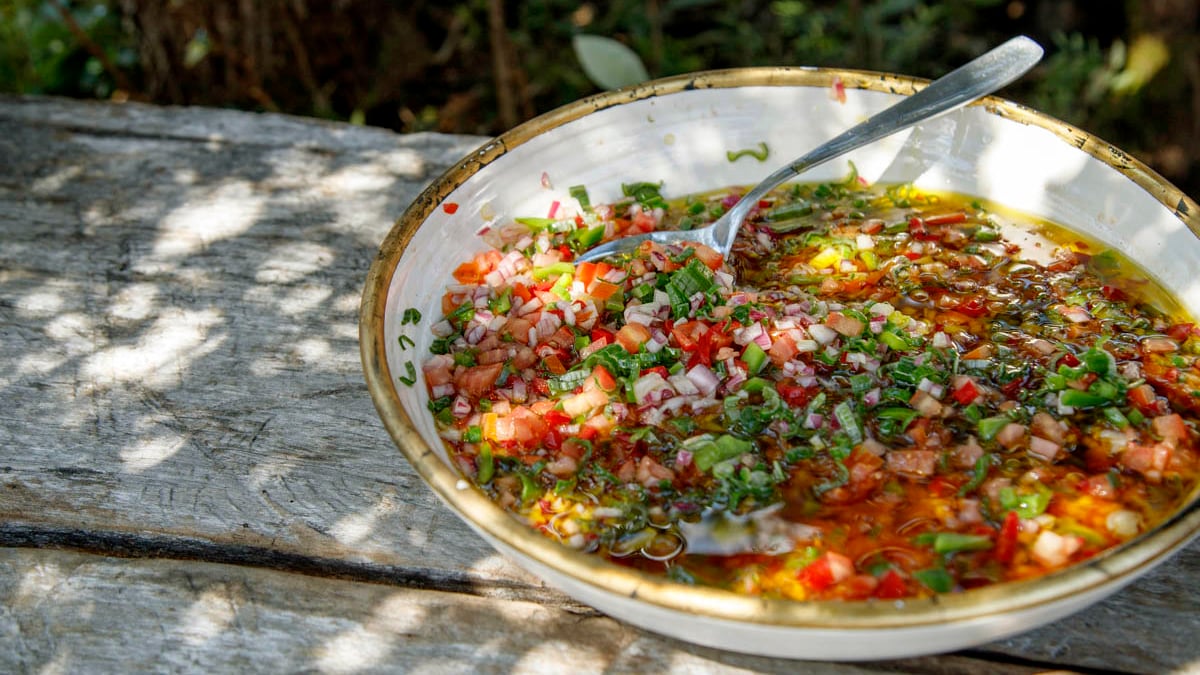
No Sunday Asado in Argentina would be complete without salsa criolla, the national sauce, alongside chimichurri, that is served at traditional Argentine barbecues across the country. Francis’s version calls for a fresh medley of chopped onions, colorful bell peppers, tomatoes, red onions, and spring onions drenched in acidic red wine vinegar.
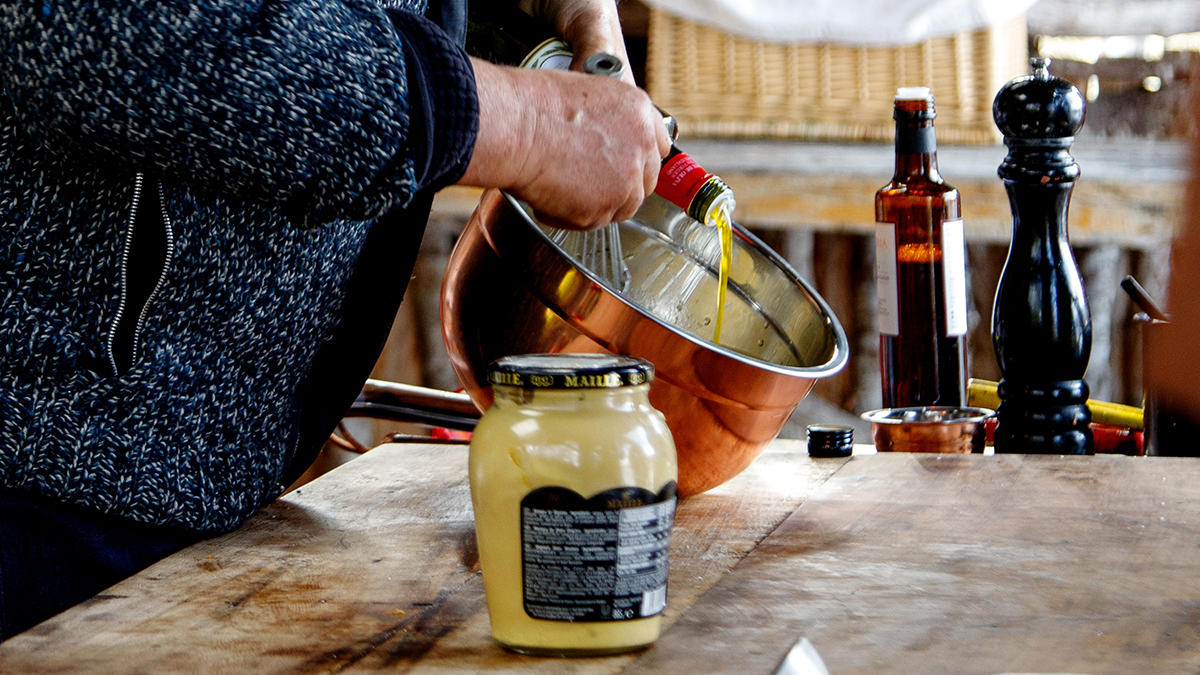
Create Francis’s creamy and tangy vinaigrette, which tops any roasted veg or acts as the perfect base for potato salad.
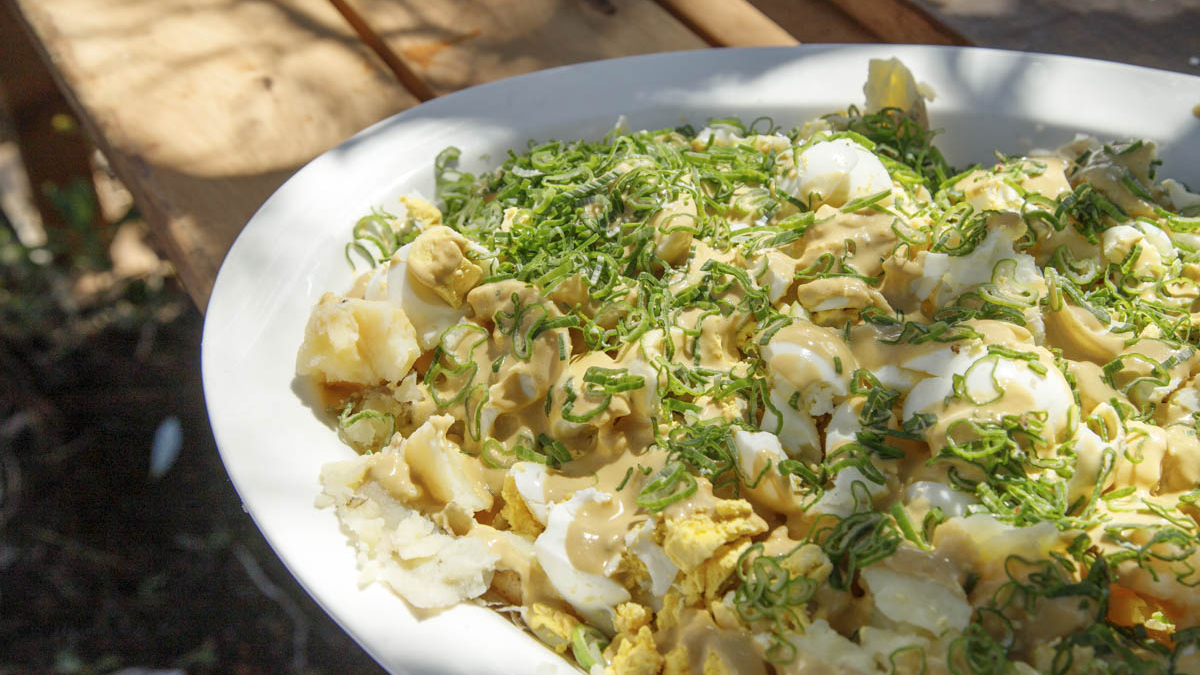
Never make another potato salad the same way ever again. Francis puts his spin on the Argentine barbecue classic side with a tangy mustard vinaigrette. While you can always use a knife, follow Francis’s motto and use your hands. “Everything you can cut and break with your hands, the better,” he says.
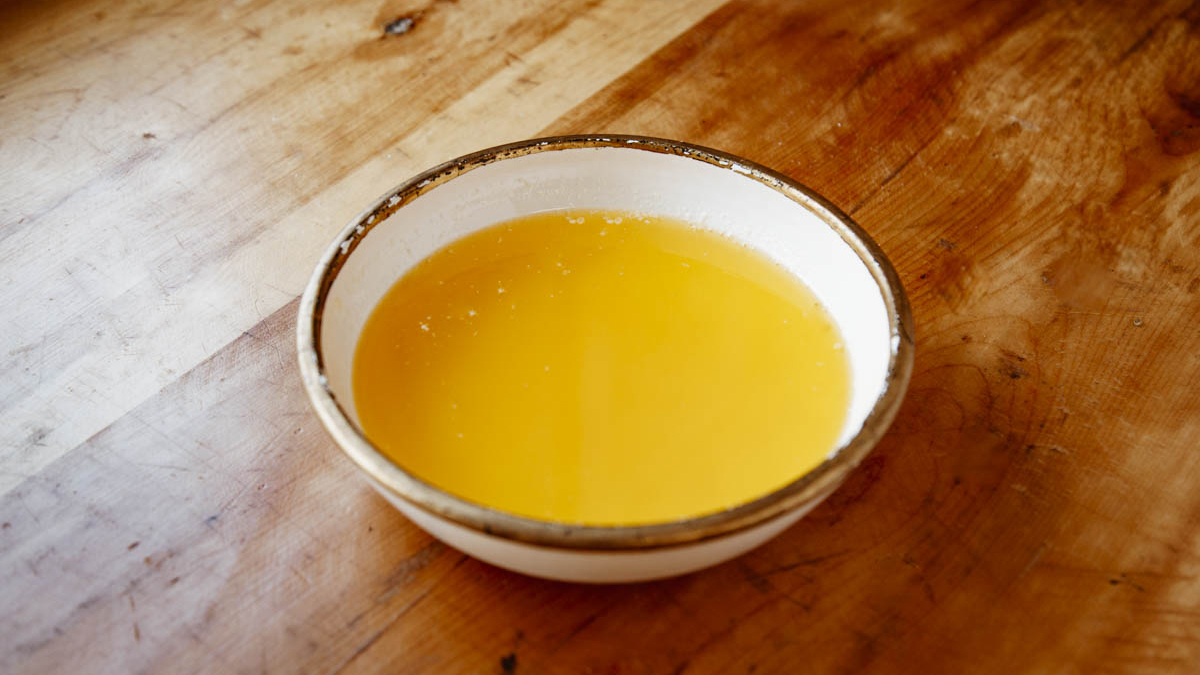
Clarified butter is the secret weapon Francis uses to make his food crispy and luxurious. Ricki Motta, Francis’s sous chef, teaches how to make this golden glory. Since Francis’s food tends to require open flames, the lack of milk solids in the clarified butter enables it to have a high smoke point, an ideal match for this style of cooking. The result? Crunchier potatoes, a perfect char on seared meat, and vegetables dancing in butterfat with little worry of it burning too quickly. Plus, clarified butter can last fresh for months in the fridge.
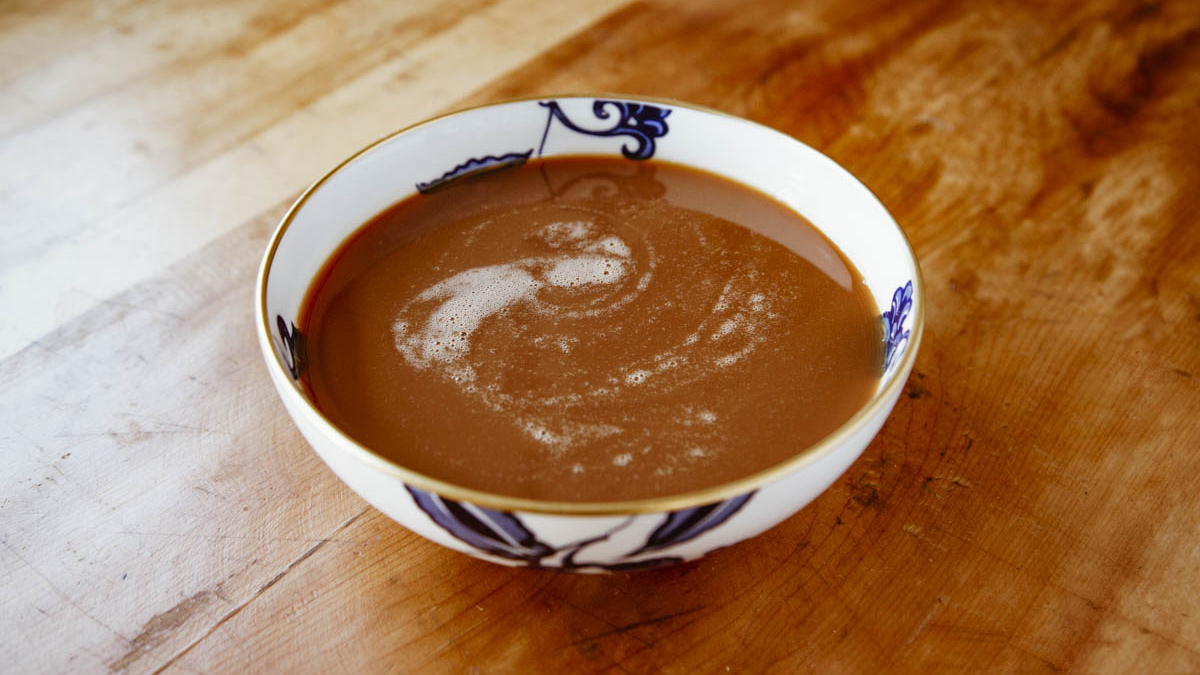
It’s hard to find a dessert in Argentina that doesn’t contain dulce de leche. Francis’s sous chef, Ricki Motta, teaches how to make this classic favorite that will sweeten up your life.
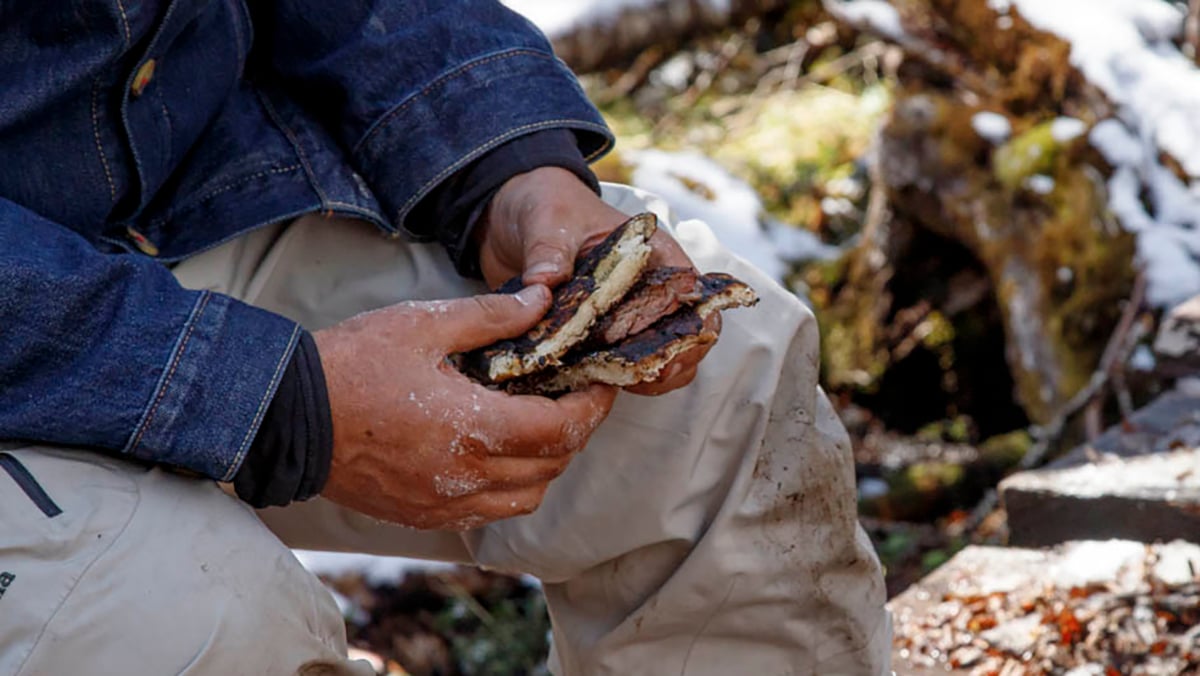
The next time you go camping, be sure to bring a bag of flour and a strip of beef, to create the best version of a Gaucho sandwich yourself over the heat of an open fire.
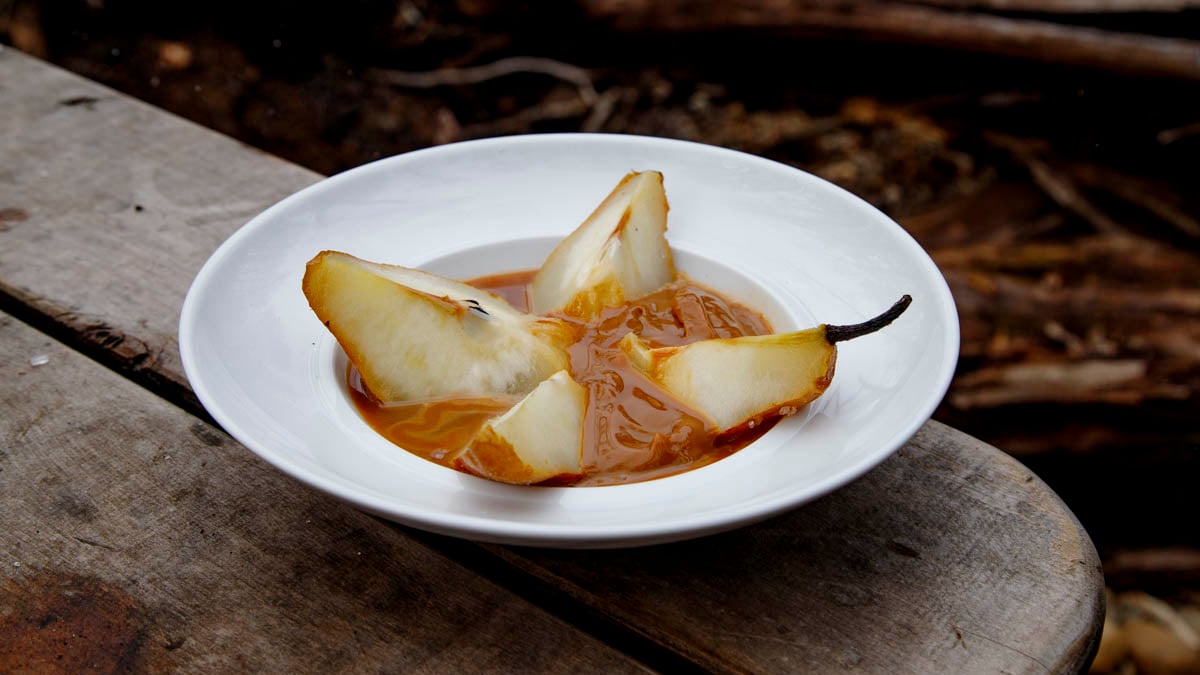
A simple dessert that only calls for 3 ingredients: Pears, salt, and dulce de leche. Francis cooks the pears in the infiernillo, also known as the little hell, an oven he made inspired by the Incan people who made stone versions high in the desert on the eastern slope of the Andes mountain range. “When you cook a pear like this, all of the humidity of the pear stays inside so it’s very, very delicious,” Francis explains adding that the slight amount of salt that remains on the outside pear skin will bring added interest and complexity.
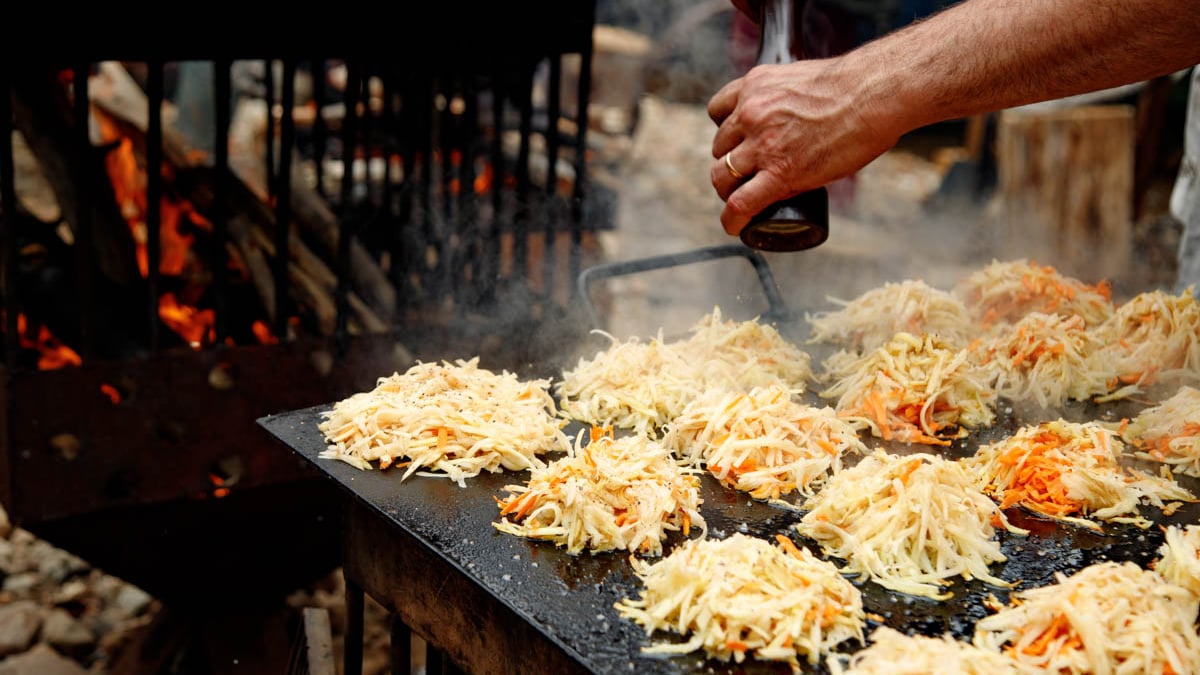
Grate your potato right on the cast iron surface, capturing the air to perfectly steam the inside while developing the crispiest, crunchiest exterior.
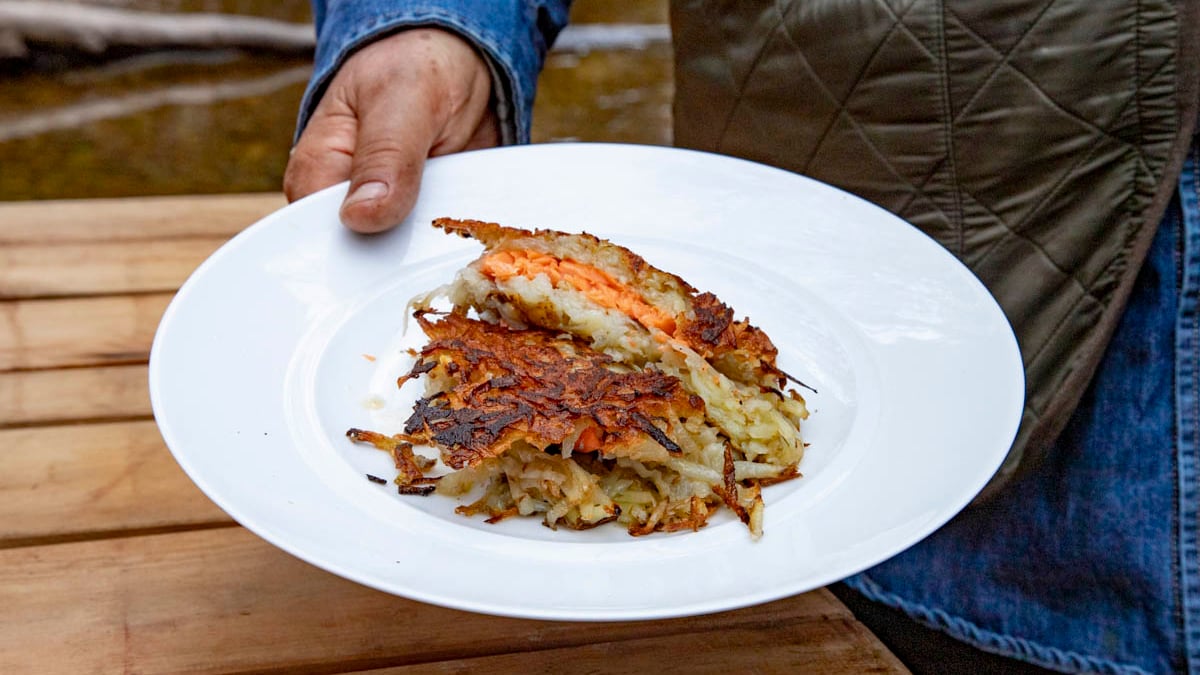
Francis brings us to one of his favorite places on the island, near a beautiful waterfall, to cook trout fillets sandwiched between two crispy potato cakes. Francis uses a freshwater brook trout, known for its vibrant pink color, but you can always substitute for different kinds of fish like flounder, snapper, and sole. Francis teaches techniques like the proper way to fillet a fish, using his favorite knife that he bought in 1978 in Paris. This simple recipe will be a total brunch crowd-pleaser for your family and friends.
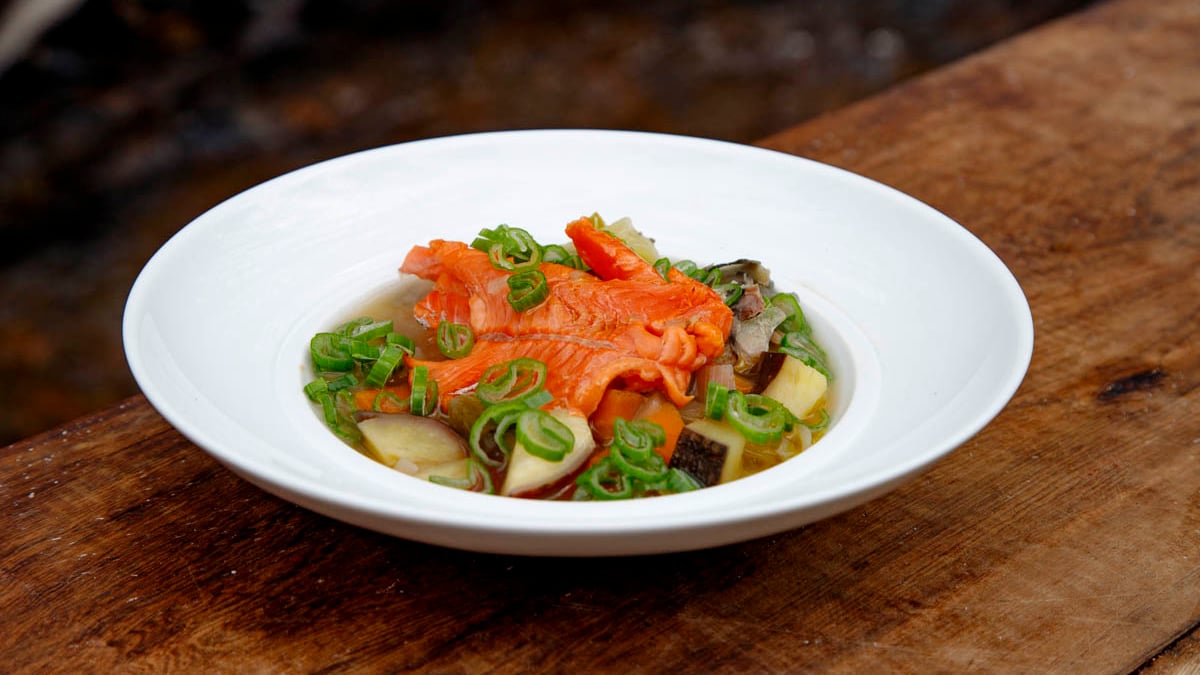
When there’s a brisk Patagonian chill that fills the air, there’s one comforting food Francis wants to eat: chupín de trucha, or Fisherman’s soup with trout. “Chupín is the most beautiful word for a soup of fish,” Francis explains. Chupín is also known as fish stew and is commonly found across the region near lagoons, rivers, and fishermen’s towns. The name chupín comes from the Spanish word chupar. It’s a word commonly used in the phrase, “Para chuparse los dedos,” which means “finger-licking good”. The true taste of the chupín comes from the bones and the head of the fish, plus a lot of love and care. Francis will teach the skills to make this incredible broth and how to truly build and layer complex flavors with simple ingredients. This is a dish proven to nourish the body and soul.
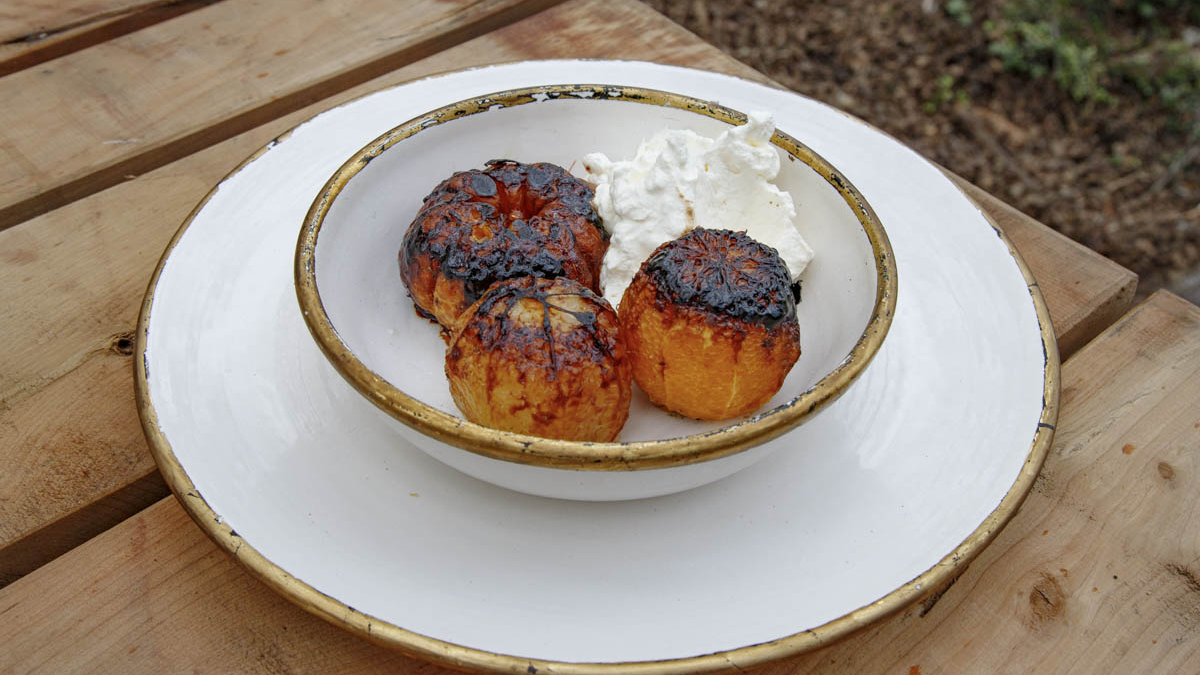
“Desserts in Argentina are important. We love very sweet things.” Francis teaches how to make one of his favorite desserts: Burnt citrus fruits with a sugary crust. Learn how to make this refreshing dish and add it to your dessert repertoire. It may seem simple, but it’s loaded with supremely fresh and complex flavors and textures.
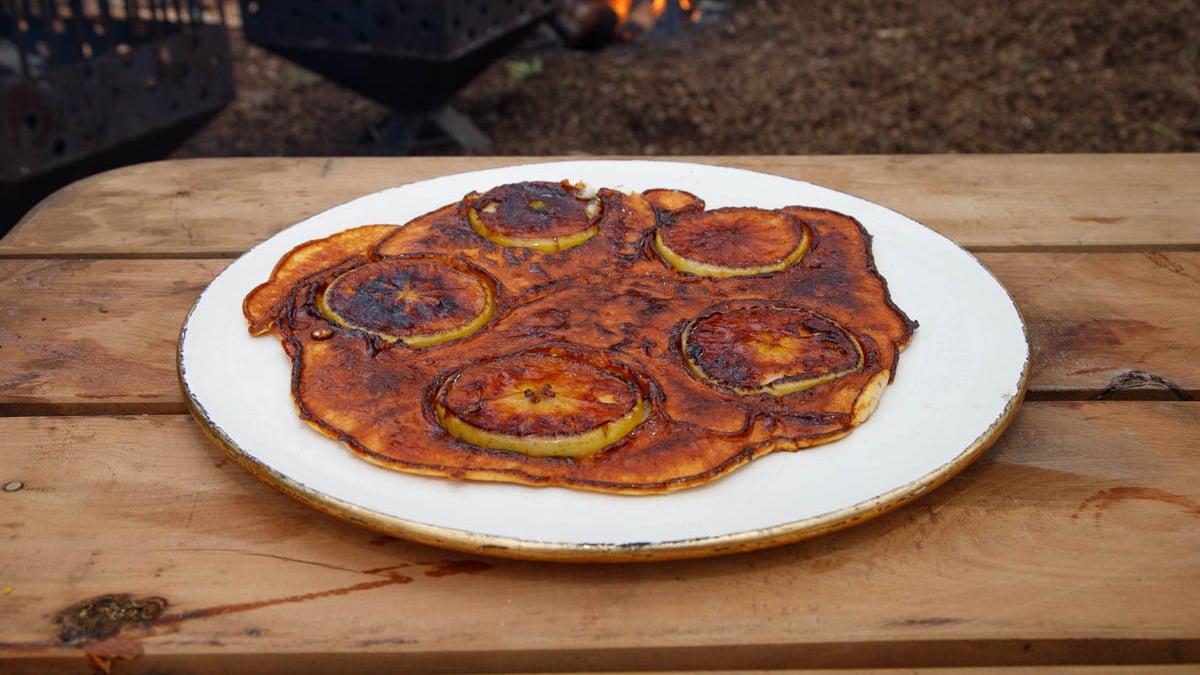
Caramelize granny smith apples right on a cast iron surface, then smother in Francis’s pancake batter, to recreate this Argentine favorite.
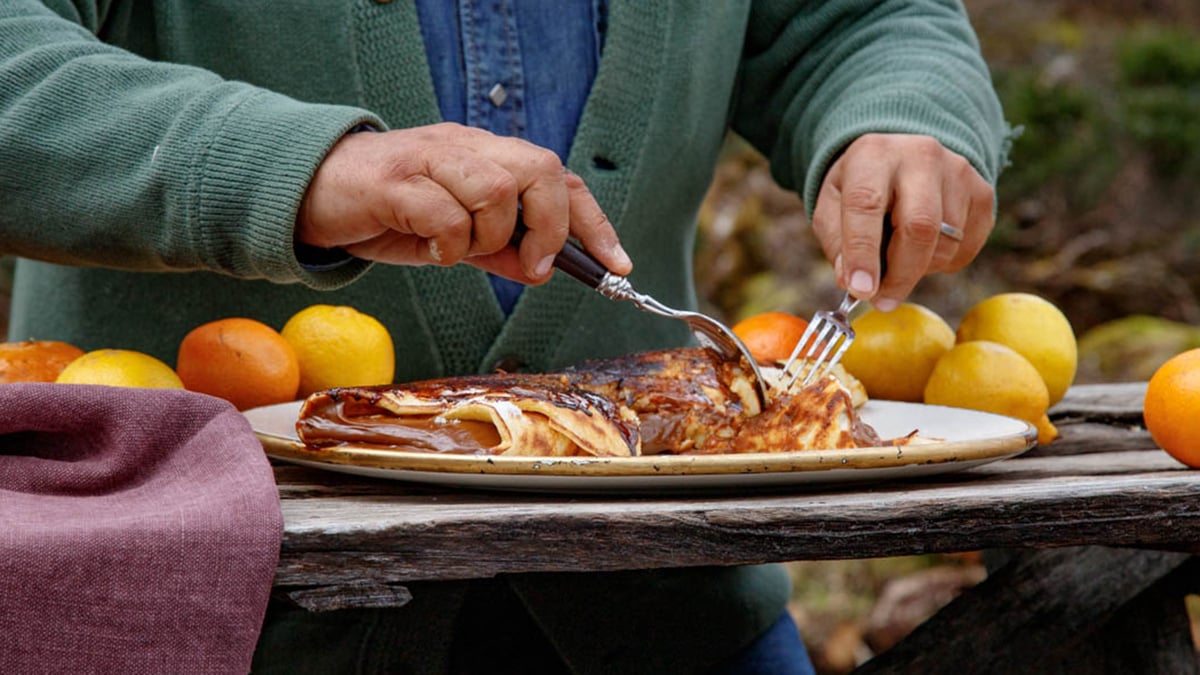
An Argentine classic and Mallmann favorite, this dulce de leche stuffed pancake is the perfect dessert or weekend brunch staple. Use homemade dulce de leche, or the store bought variety – it’s up to you.
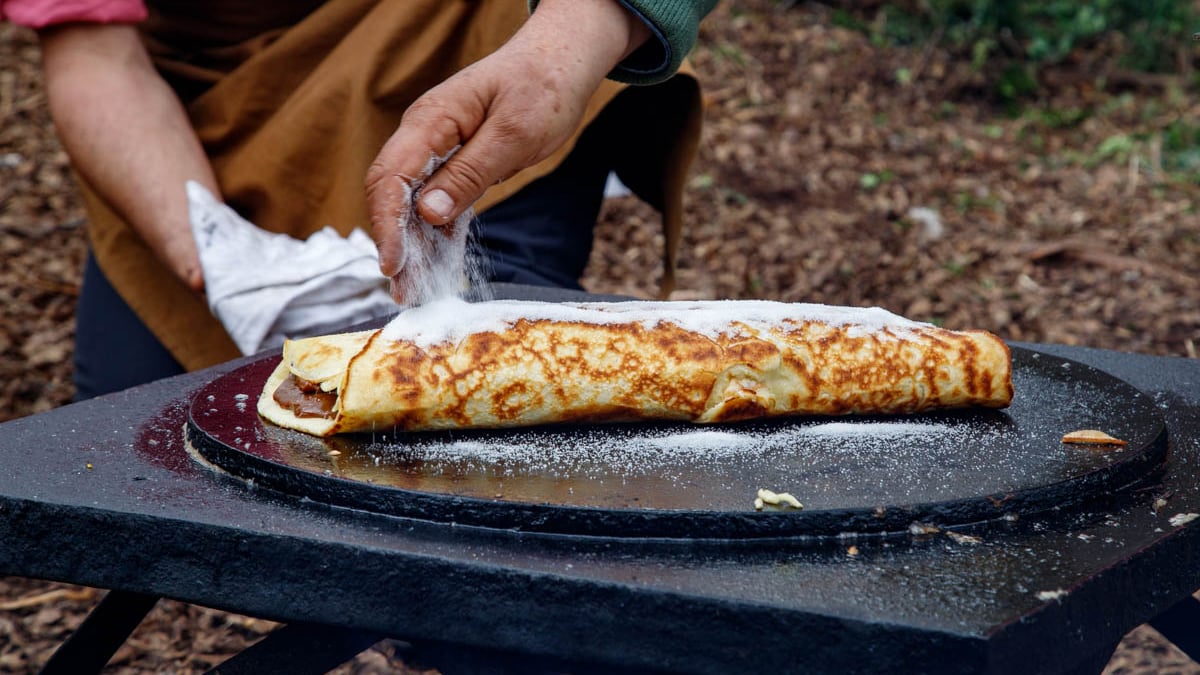
Make the best pancake batter using Francis’s simple recipe. Add dulce de leche, granny smith apples, or enjoy them plain – your weekend brunches will never be the same.
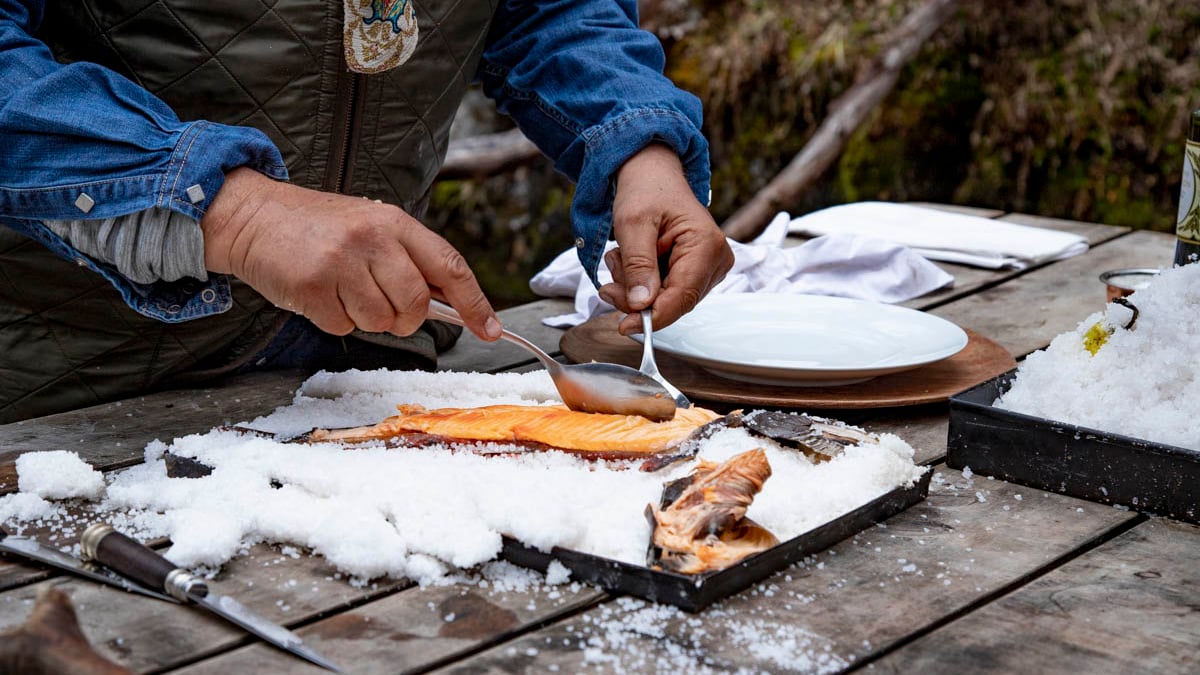
“Oh! It’s so beautiful! I love you trout!” – Francis Mallmann Francis invented the infiernillo or “little hell” oven about 20 years ago to cook fish outside. Today, he proclaims his love for Patagonian trout and its magical taste as he fires up his small inferno to teach you how to make freshly-caught salt-crusted trout. “Once we fish something or kill an animal to eat it, we must respect who he is. And try to get the best out of him,” Mallmann says. That’s why he doesn’t add anything else to this recipe other than olive oil and salt. “Even adding lemon would be sacrilege,” he proclaims. If you don’t have access to an outdoor space to build the two-tiered fire oven, Francis teaches you how to make this fish encased in salt inside your kitchen, too. And just remember: “There’s nothing sadder than an overcooked fish. It makes me cry.” So, don’t overcook your fish and make Francis Mallmann shed tears of sadness.
“It’s tempting. It’s full of desire. And they’re both very sweet.” – Francis Mallmann. In Argentina, panqueques are generally thin crepes and served as dessert with dollops of dulce de leche. Francis teaches how to make two different panqueque desserts on the plancha that make him “very happy”: Dulce de Leche Pancakes and Granny Smith Apple Pancakes. While Francis serves this for dessert, you can mix things up and surprise your family with a deliciously sweet panqueque breakfast.
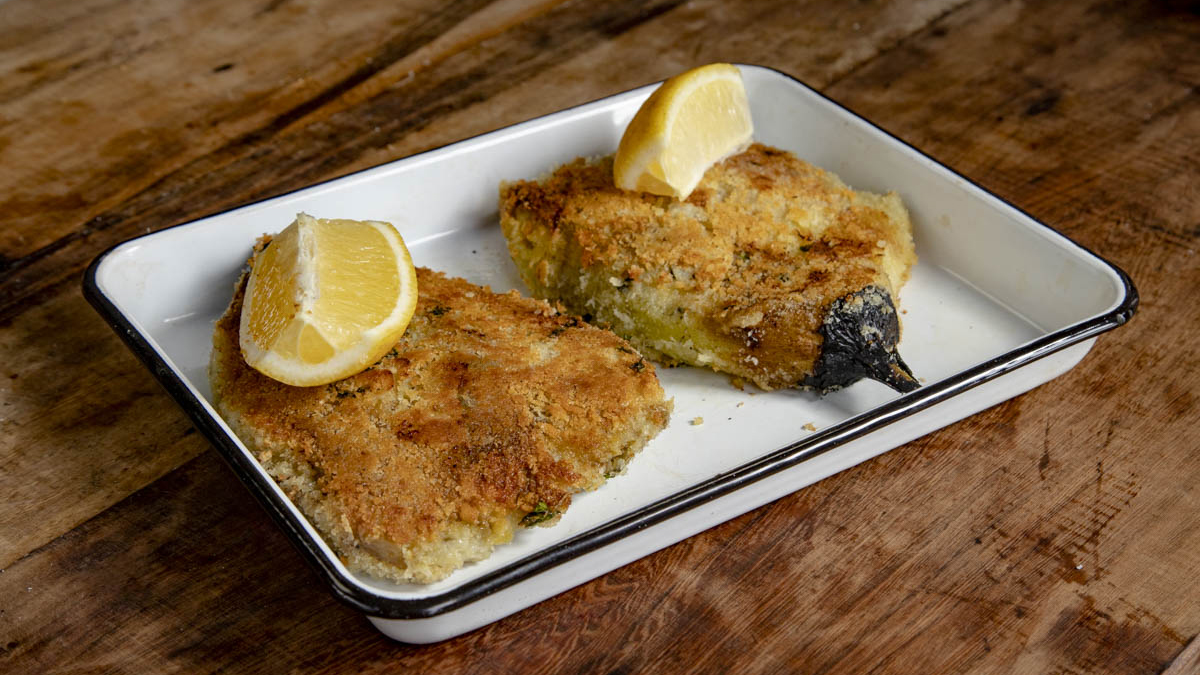
Learn how to make one of Argentina’s favorite comfort foods, the milanesa. Francis teaches his vegetarian spin on the humble classic by using the mighty eggplant. Francis teaches how to prepare the eggplant: He chars the whole eggplant directly in the fire, dips it in egg batter, covers it with seasonings and homemade breadcrumbs, and finally, pan-fries it with clarified butter on a hot griddle. The result? A delicious dish that is also a bestseller at Francis’s restaurants.
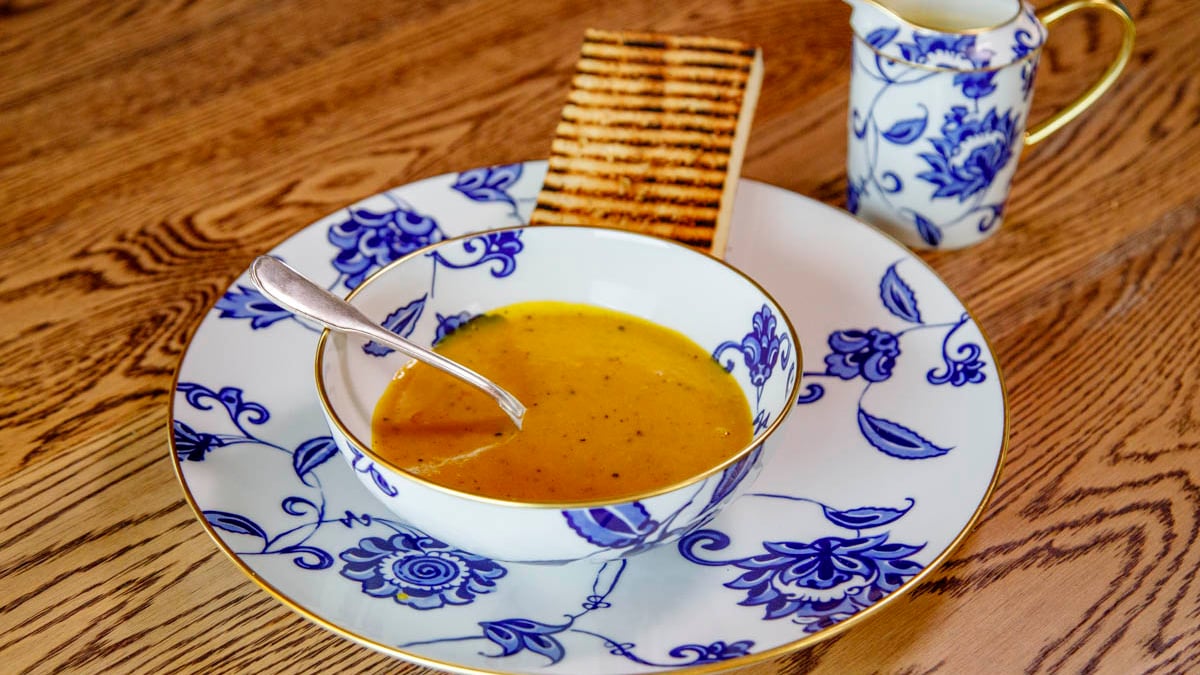
The egg is one of Francis’s favorite ingredients. Learn how to make oeuf brouillé, a rich and delicate French-style scrambled egg cooked in a bain-marie hot water bath.
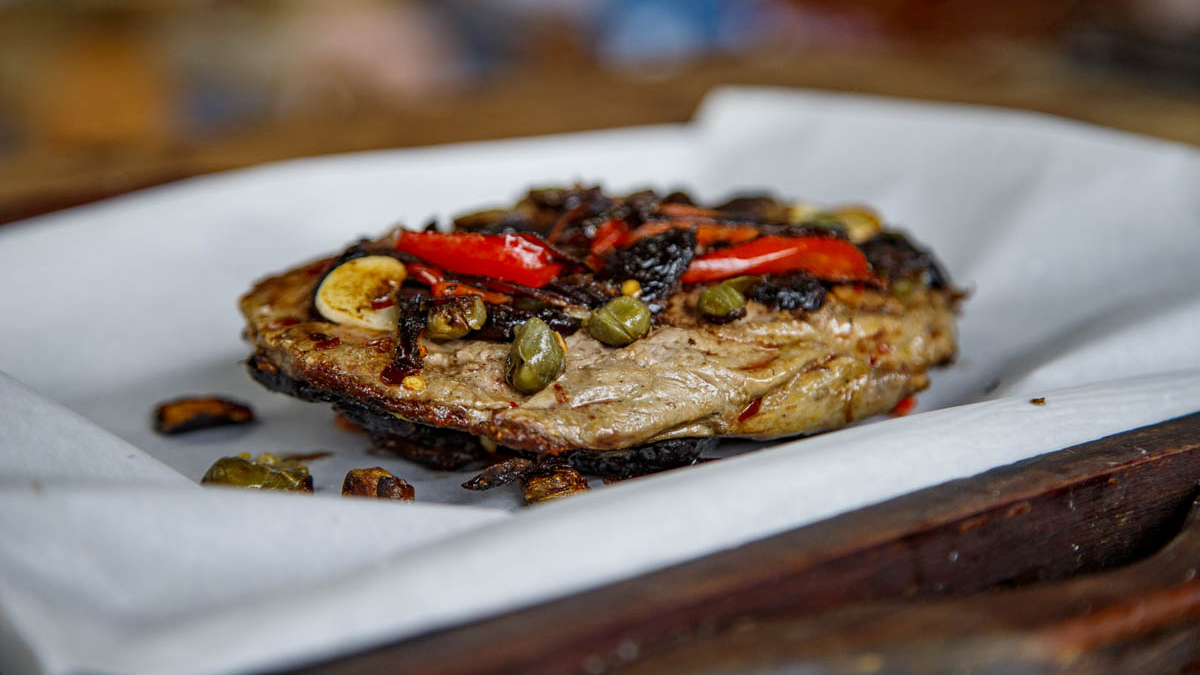
A beautiful steak dinner in under 20 minutes, you say? Francis loves to smash things, and here he teaches how to make this easy and unfussy steak, a dish that he began making over 25 years ago: Flattened tenderloin with capers, peppers, garlic, and black olives. You’ll learn how to respect the steaks’ placement on the grill and the importance of keeping it undisturbed with no “flipping and flopping.”
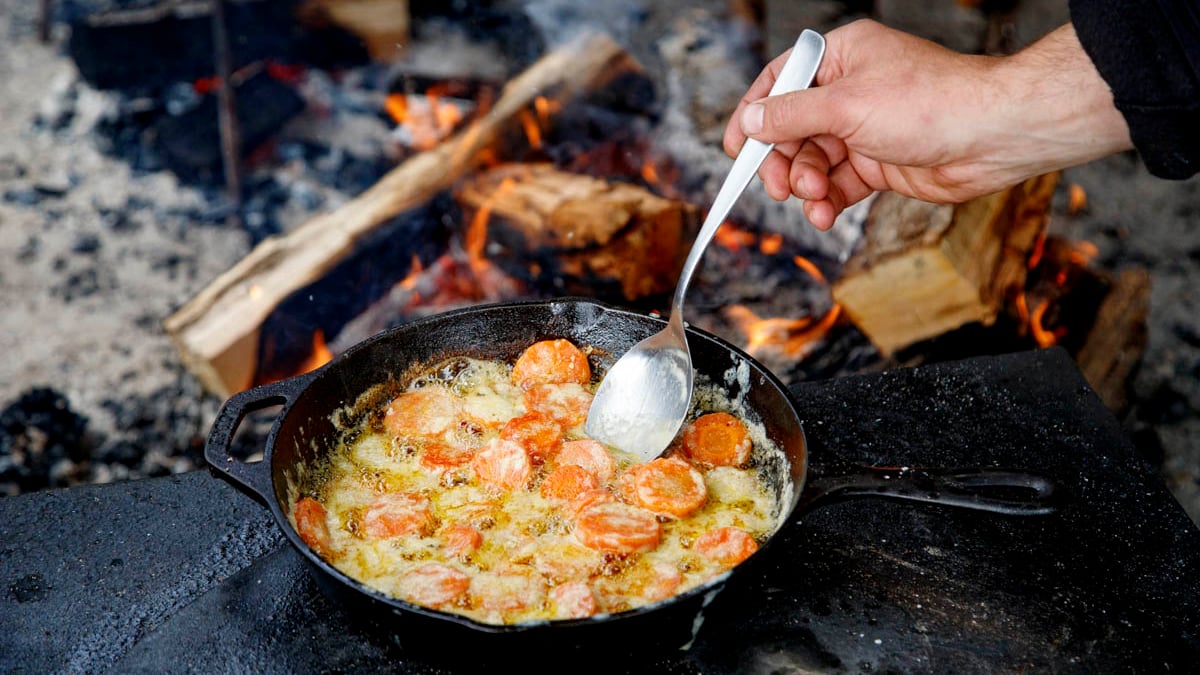
All you need is three carrots, a handful of thyme, a bit of cream, olive oil, and a cast iron pan to make Francis’s latest hit vegetarian recipe. You’ve never tasted carrots quite like these.
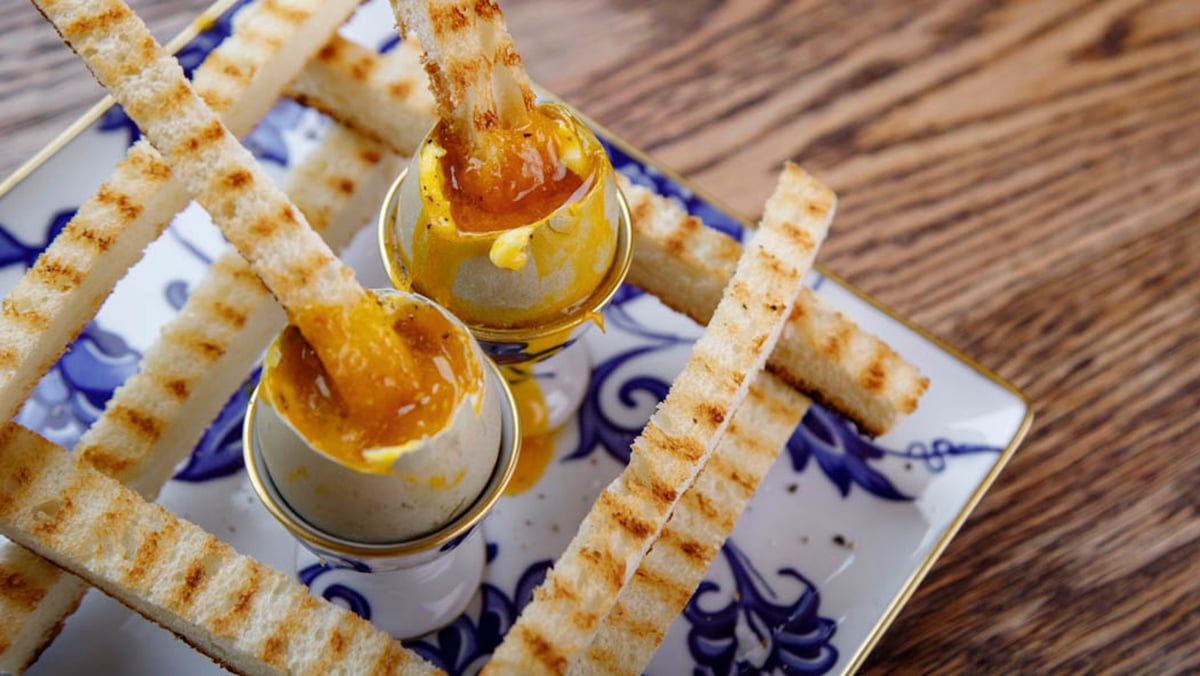
From Patagonia to Paris, Francis will transport you to Café de Flore, a famous café where the great intellectuals would gather and one of his favorite places in France. There, they serve glorious oeufs à la coque, soft-boiled eggs, a sophisticated yet simple breakfast that Mallmann regularly makes at home for his children. Not only does Francis teach the basics of boiling eggs, he also speaks about important life lessons like personal reinvention and how it’s never too late to start again.
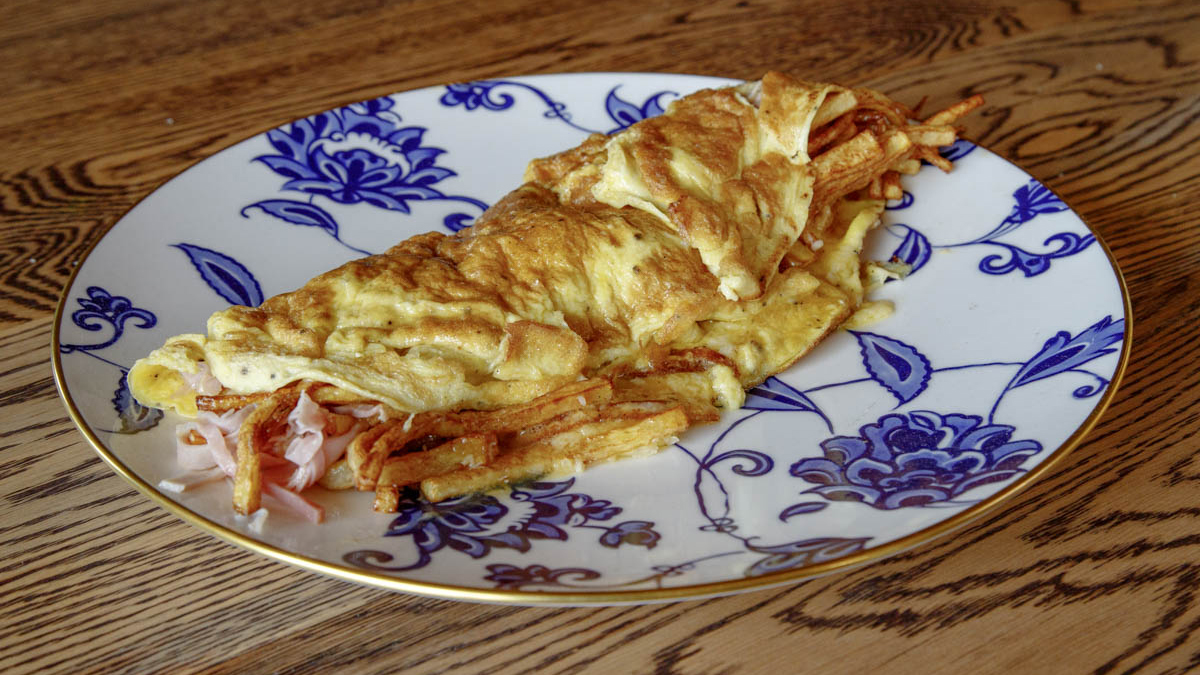
“Eggs, potatoes, cheese, ham, can’t get better than that!” – Francis Mallmann. Revuelto gramajo is a Buenos Aires classic, most commonly found across the country in neighborhood bodegones (Argentine cantinas). Francis puts his own spin on this scrambler-hash hybrid that resembles an omelette, but stays true to its original ingredients: eggs, ham, and fried shoestring potatoes. This dish, however, can be adapted to use ingredients on hand, including fresh peas and slices of chicken or prosciutto. Even though in Argentina revuelto gramajo is eaten for lunch or dinner, we bet this mind-blowing dish will be a total brunch game-changer to your cooking repertoire.
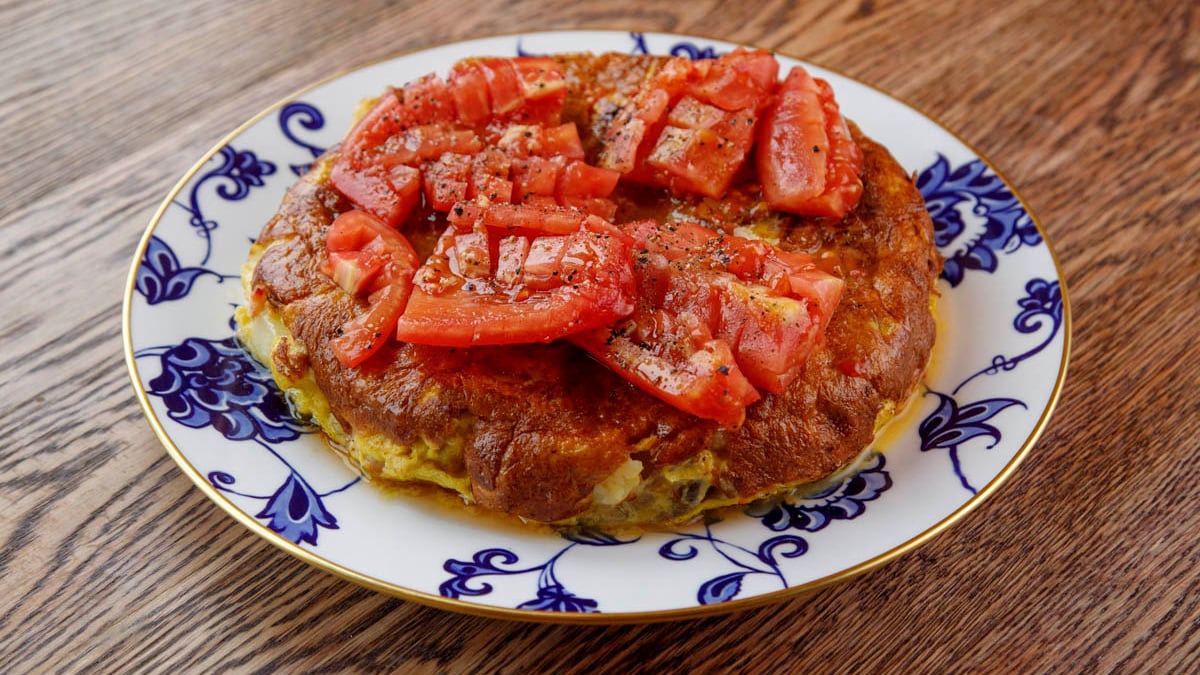
Argentina is heavily influenced by Spanish cuisine. It’s common to find the tortilla, a potato, onion, and egg Spanish omelette, at most every bodegón (Argentine cantina). Even though Francis has made many tortillas in his life, he says he only understood the true technique of the tortilla a few years ago when he observed a Spanish lady making it. Now, he shares this favorite tortilla recipe with you. While it’s possible to use any onions available, Francis’s secret is combining three types of onions. He also shares his tips on how to flip it and cook it to perfection.
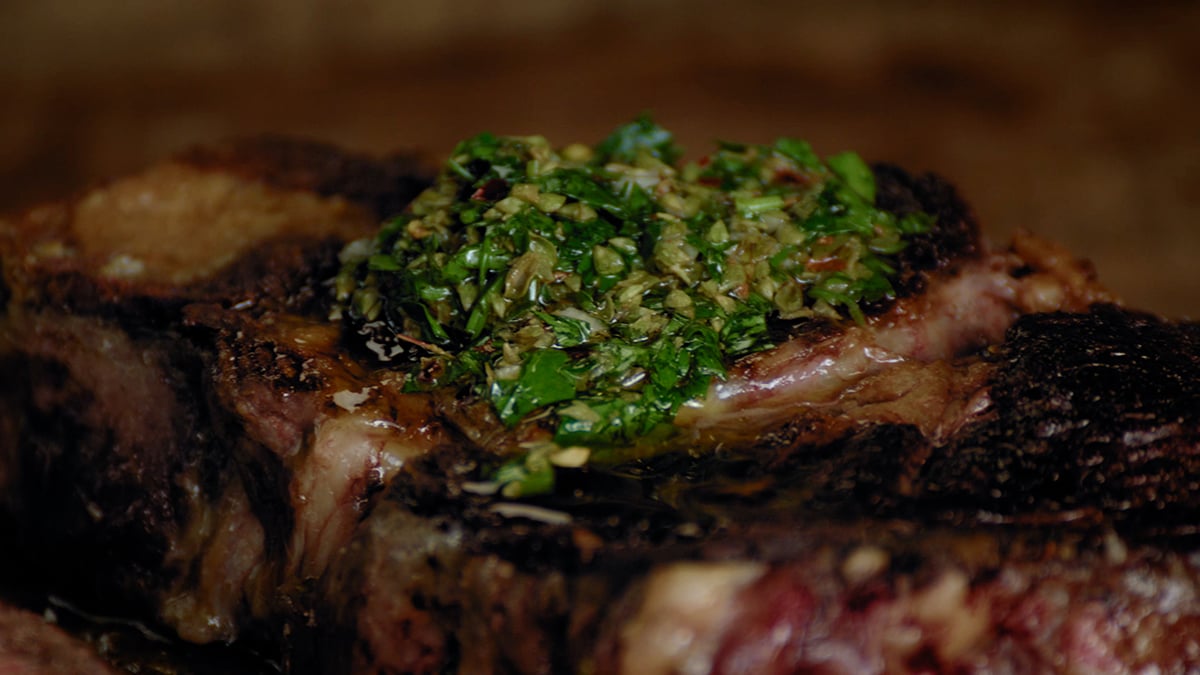
Learn how to make the traditional Argentinean herbaceous sauce that goes alongside any steak, or other grilled meats.
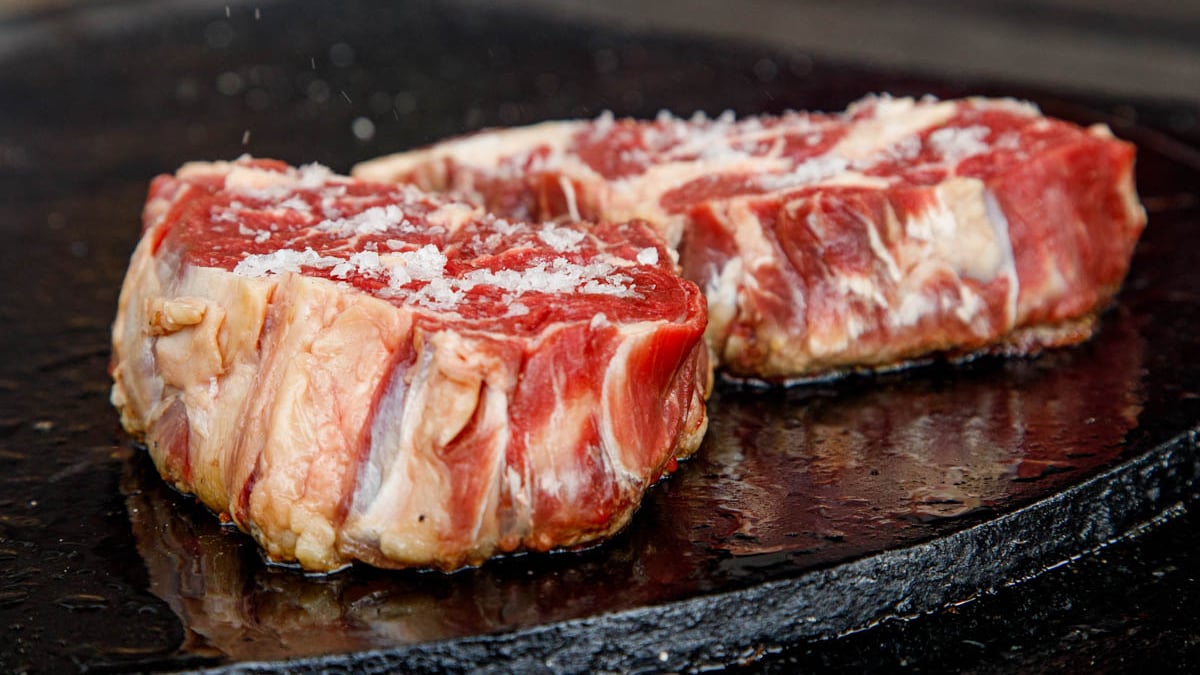
Watch and learn from the master of meat the core principles of live-fire cooking, using the cast iron surface to develop a perfectly caramelized exterior.
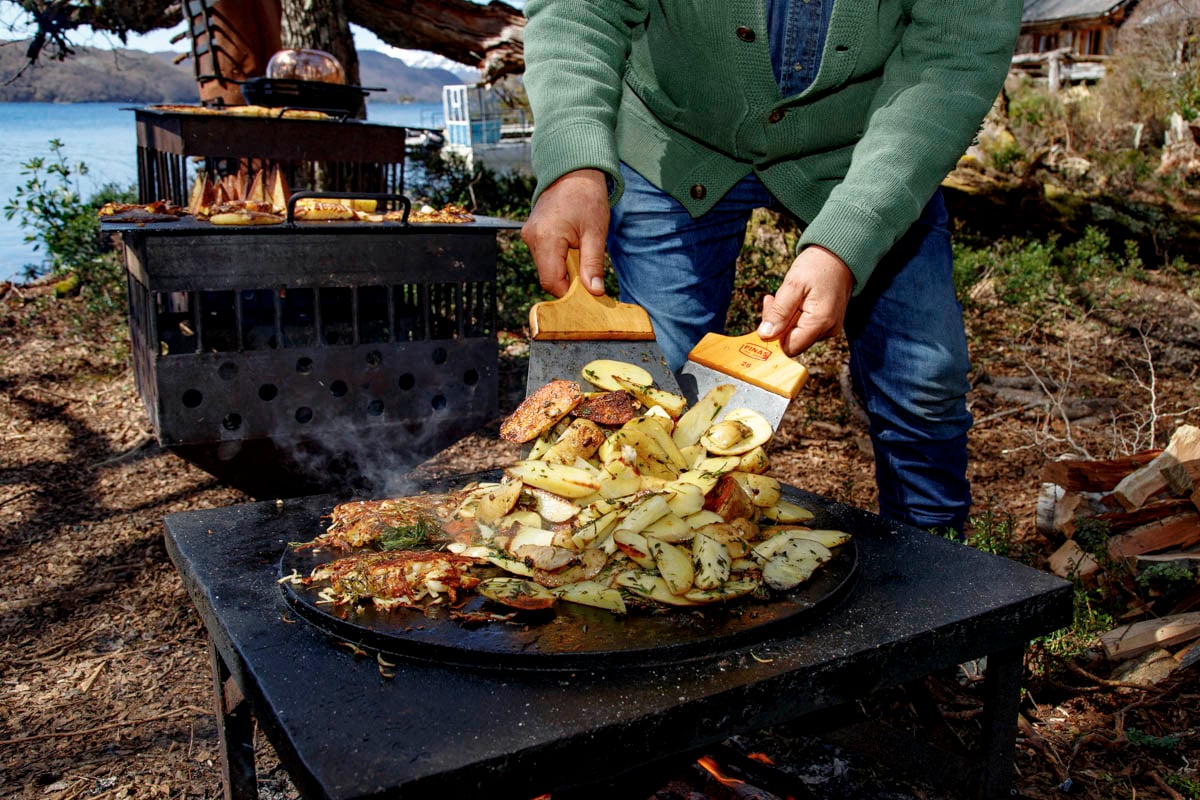
Don’t throw out your potato scraps, make a meal out of it! Zero waste is always the way to go.
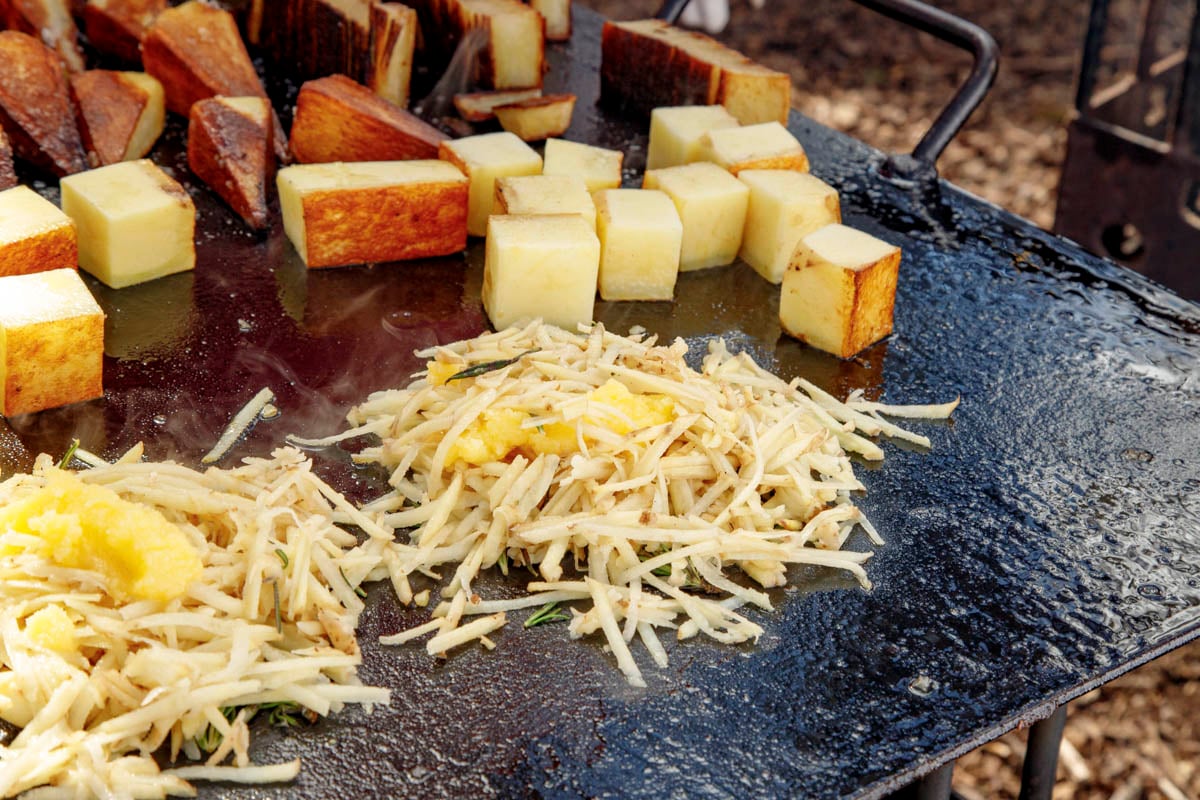
Looking for the perfect brunch potato? Here it is. Eat it plain or even top it with sour cream and smoked salmon.
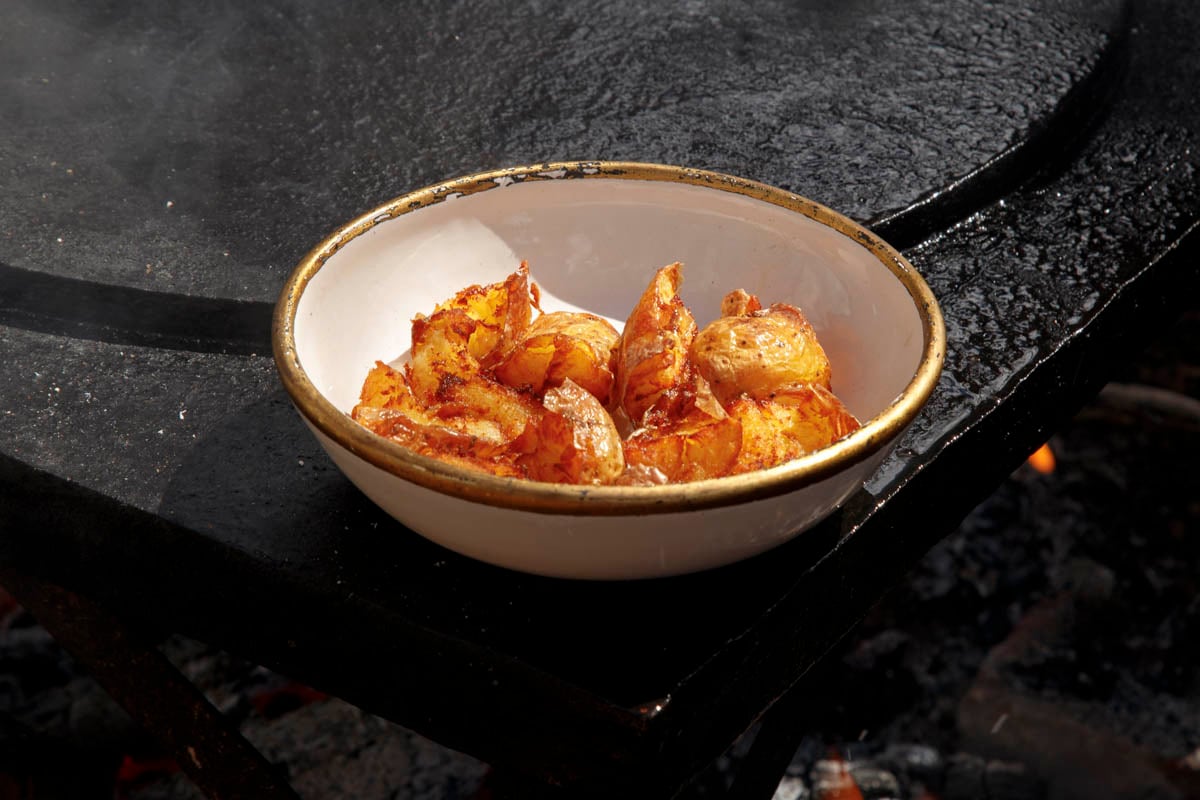
For the dreamiest potatoes with creamy insides and very crispy outsides, follow Francis’s easy recipe.
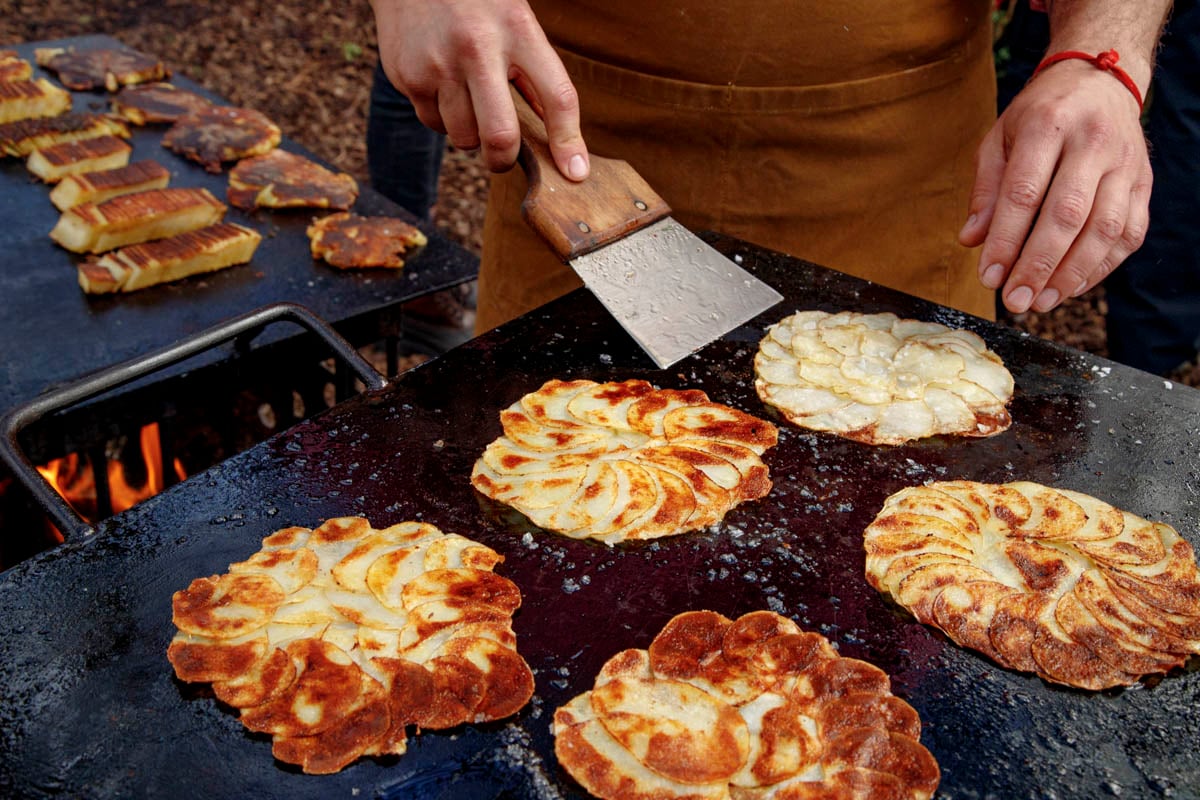
On the hunt for a stunning side dish? Place this cake-like potato dish on the table to totally wow guests.
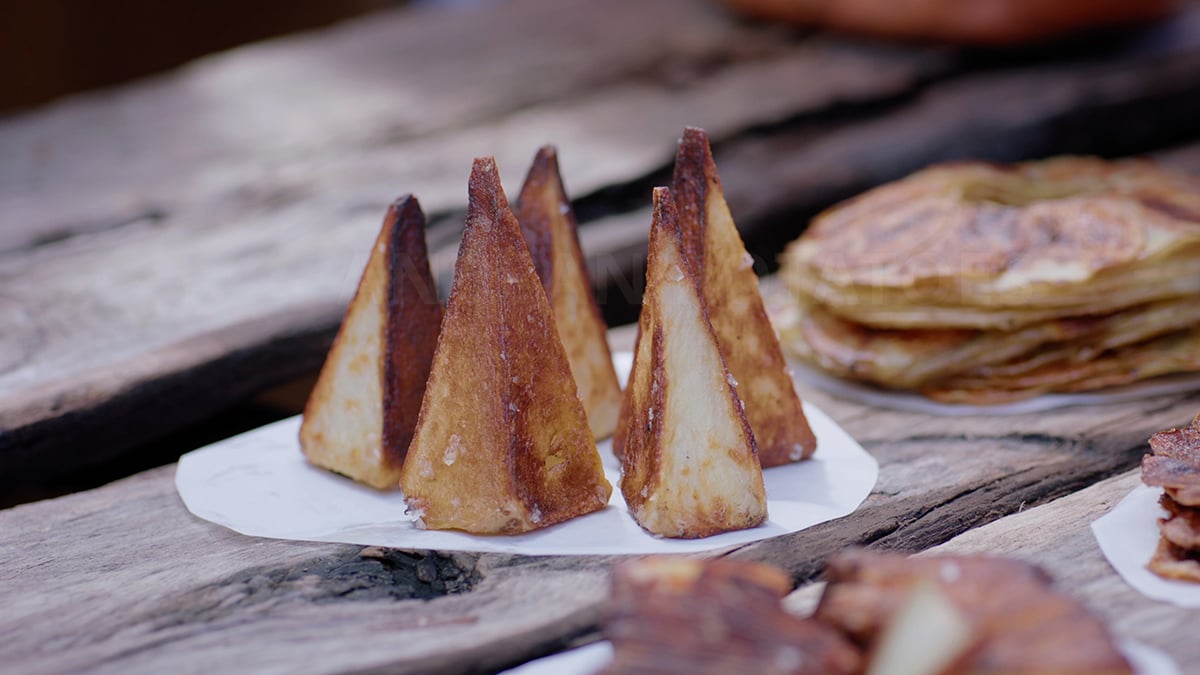
A tribute to the Andes Mountains. This hearty Andean potato dish can be cooked on medium-low heat on a cast iron pan.
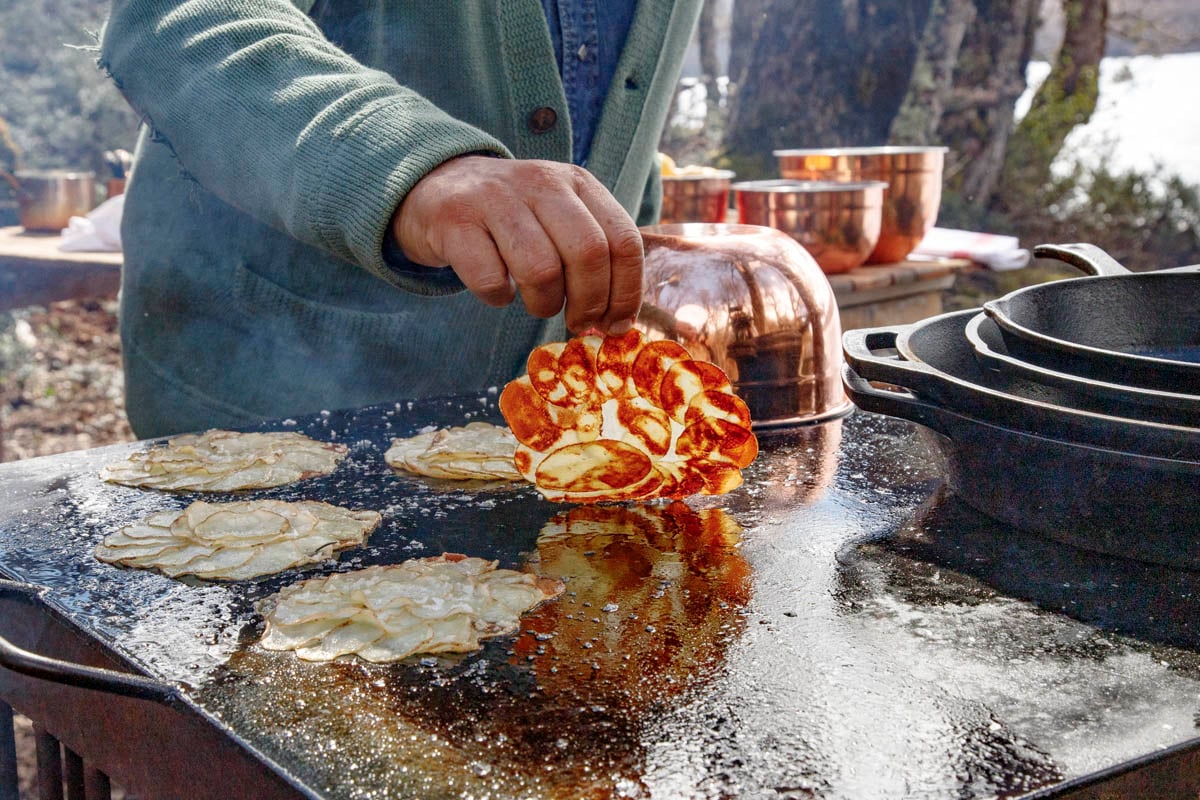
Practice your knife skills to thinly slice the potatoes, or use a mandolin. It’s incredibly easy to make and will turn simple potatoes into a showstopper.
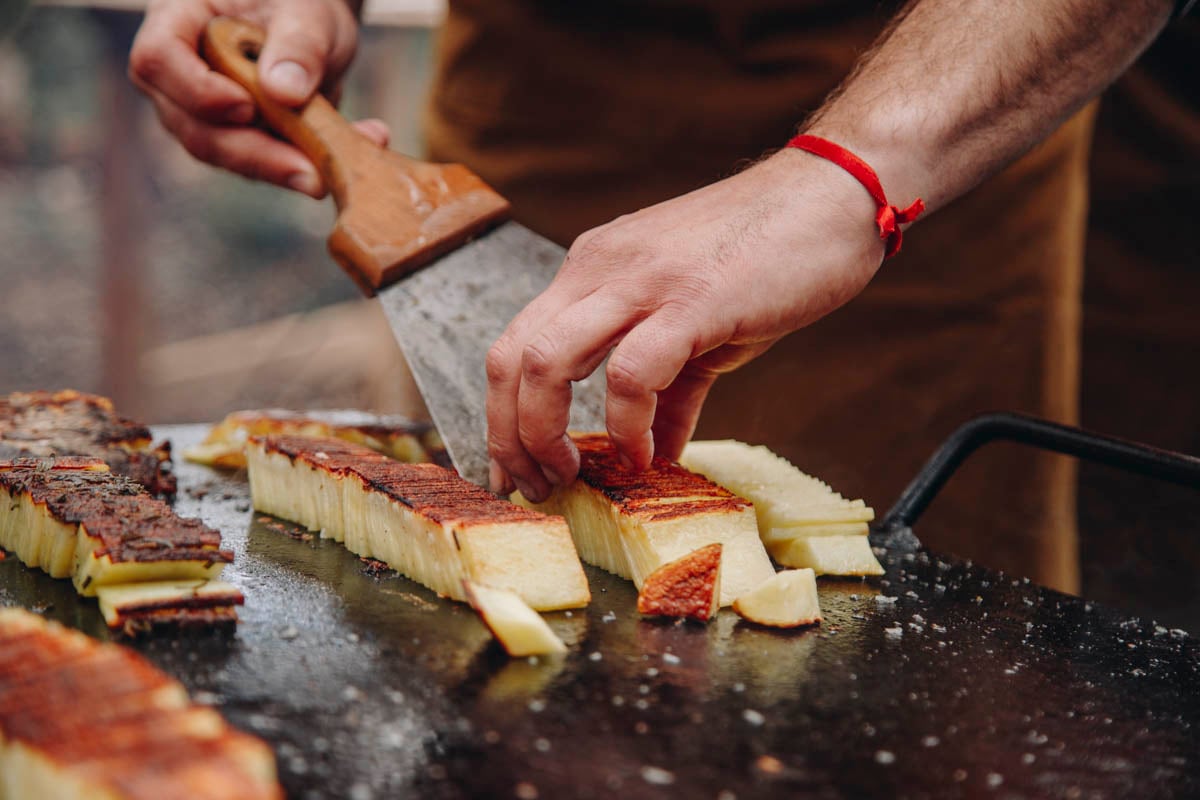
Francis cooks a lot of potatoes, but this might be his most famous. Learn how to thinly slice the potatoes and carefully cook them in butter. The result? A crisp potato with golden edges and tender insides that catches the eye.
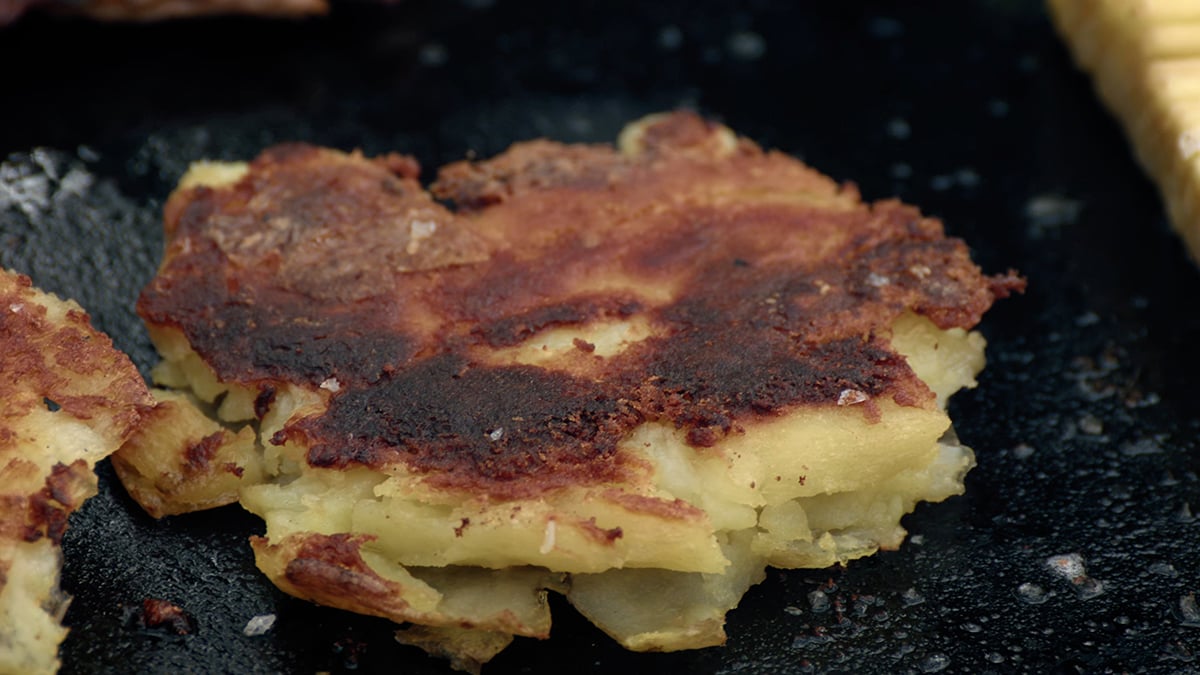
Smashed potatoes are the perfect crispy side dish. Serve alongside steak, fish, or chicken.
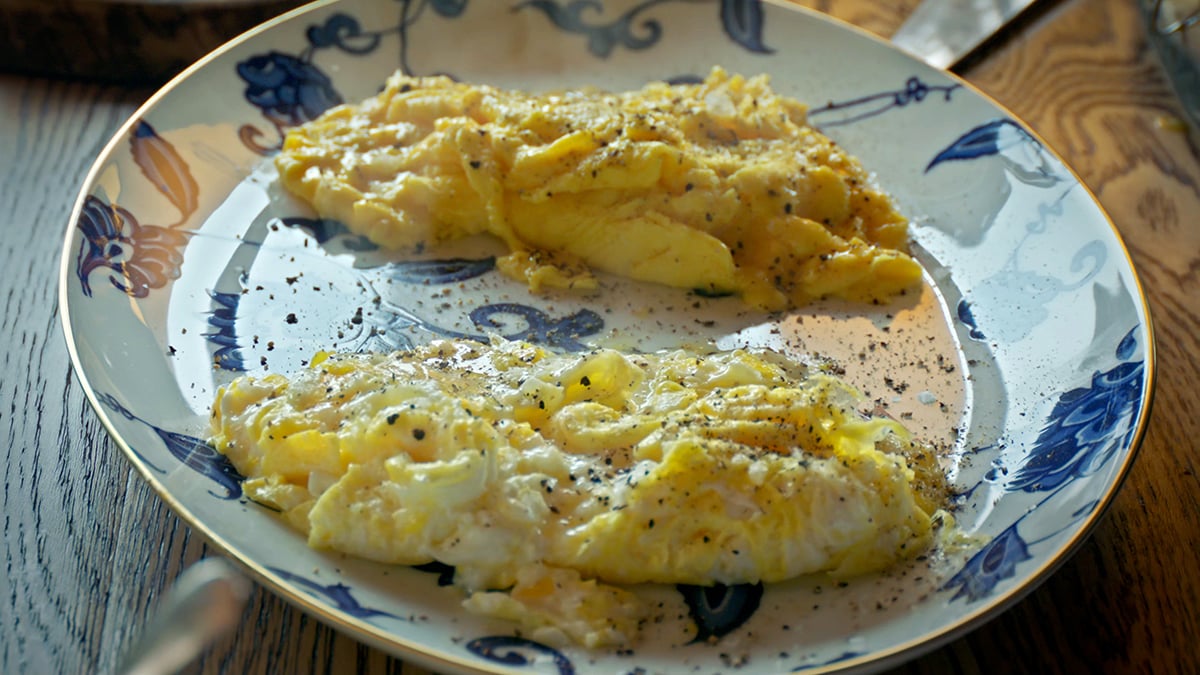
Francis shows you his broken style scrambled eggs, which you do right in the pan with a fork.
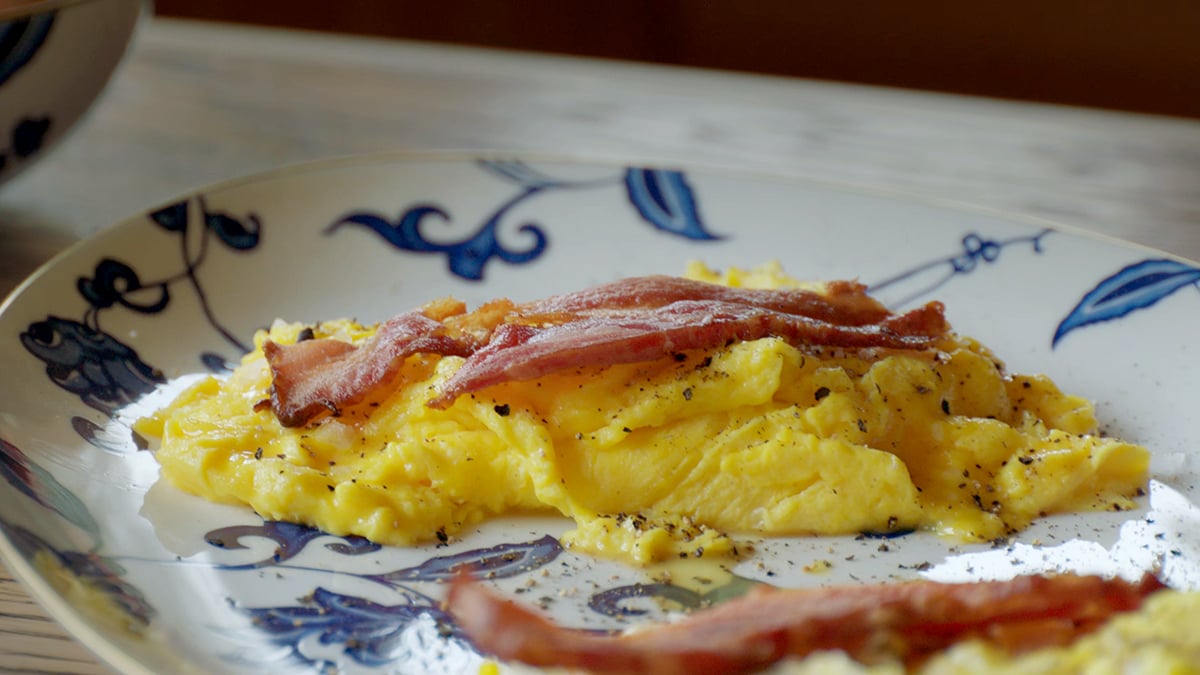
Francis shows you how to make the classic style of scrambled eggs, complete with some crispy panceta on top.
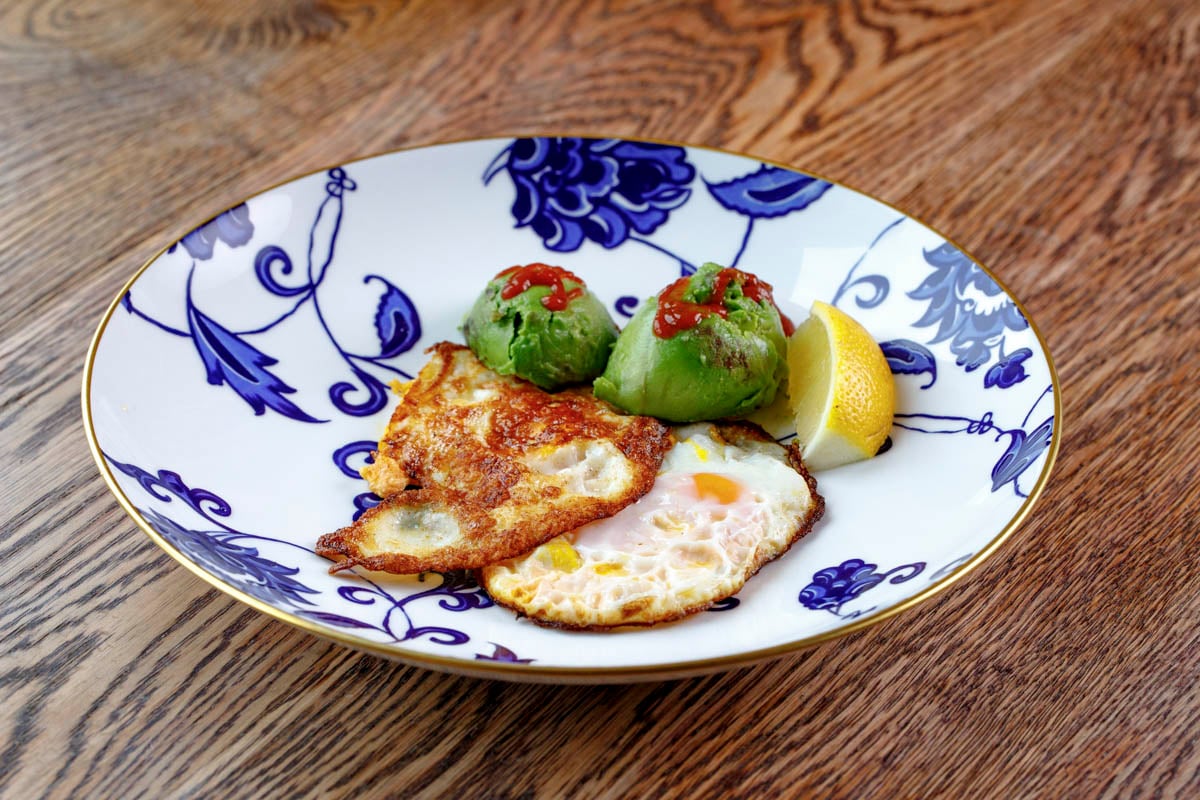
When it comes to fried eggs, he likes to serve them elegantly in butter and fry them until crispy. The crispy fried eggs are then served with angelic avocado and devilish sriracha to give the dish some balance and contrast.
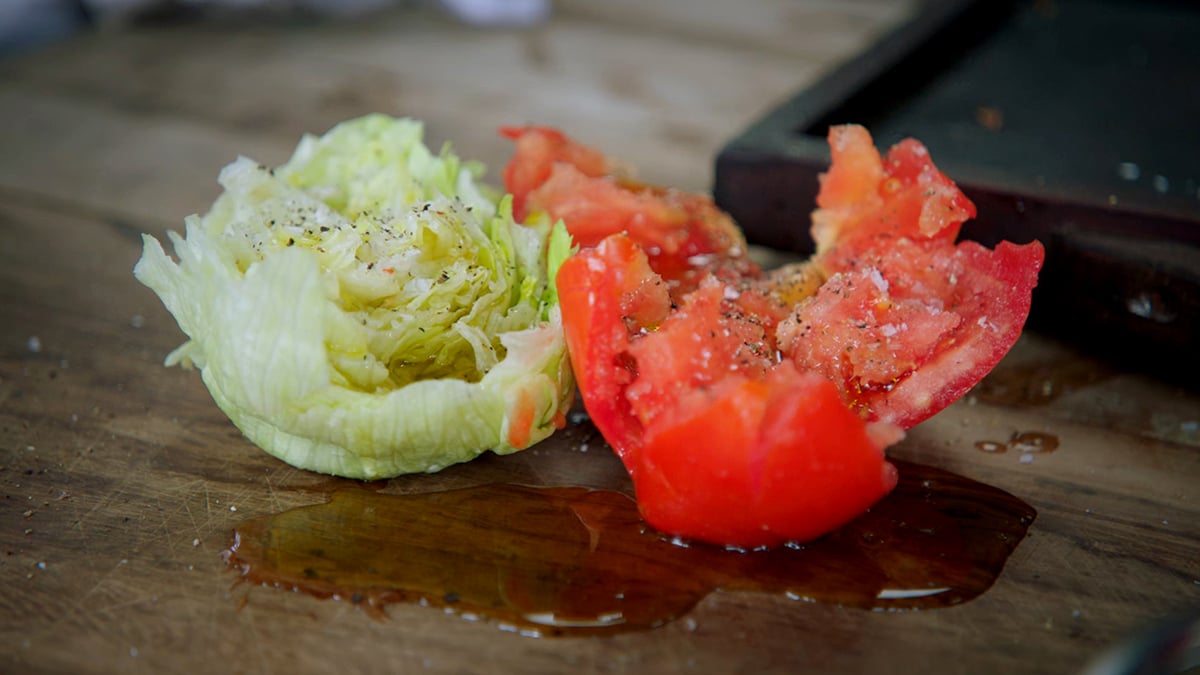
In quintessential Mallmann fashion, serve the milanesa alongside a simple, fresh, and untidy with a “Picasso”-style lettuce and tomato salad.
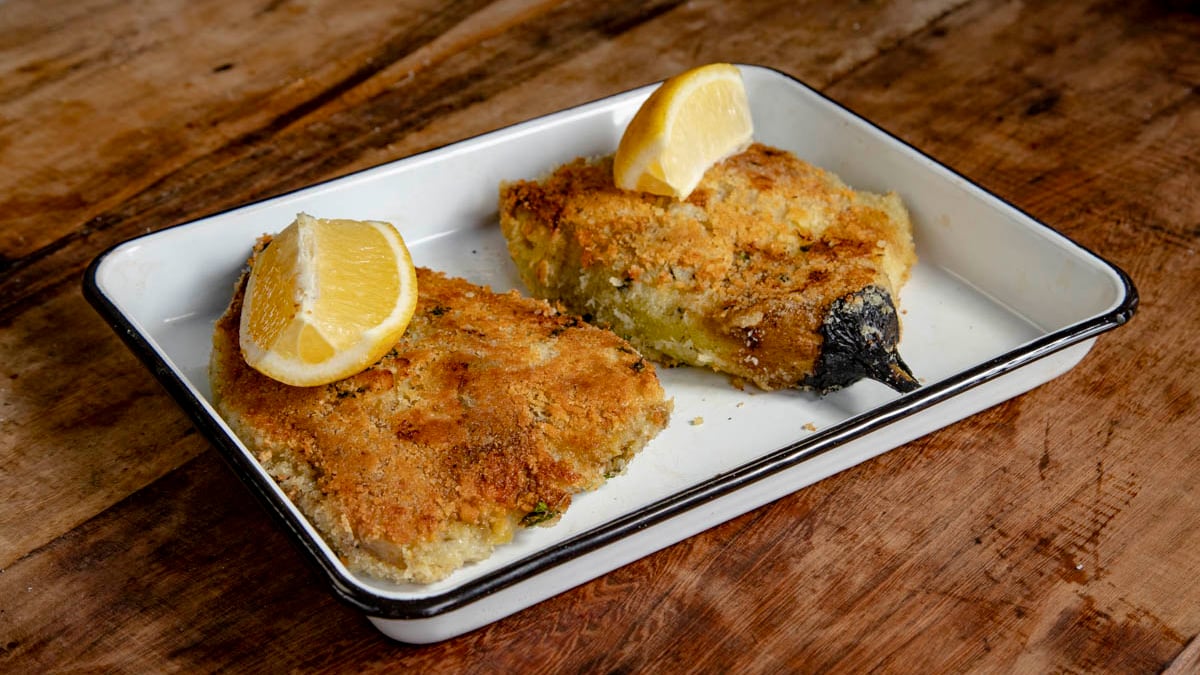
Join Francis as he teaches all the secrets of how to make his version of the humble bodegón (Argentine cantina) classic including which cut of beef is best to use, the techniques of how to pound it, how to make homemade breadcrumbs, and the steps to pan sear it in clarified butter.
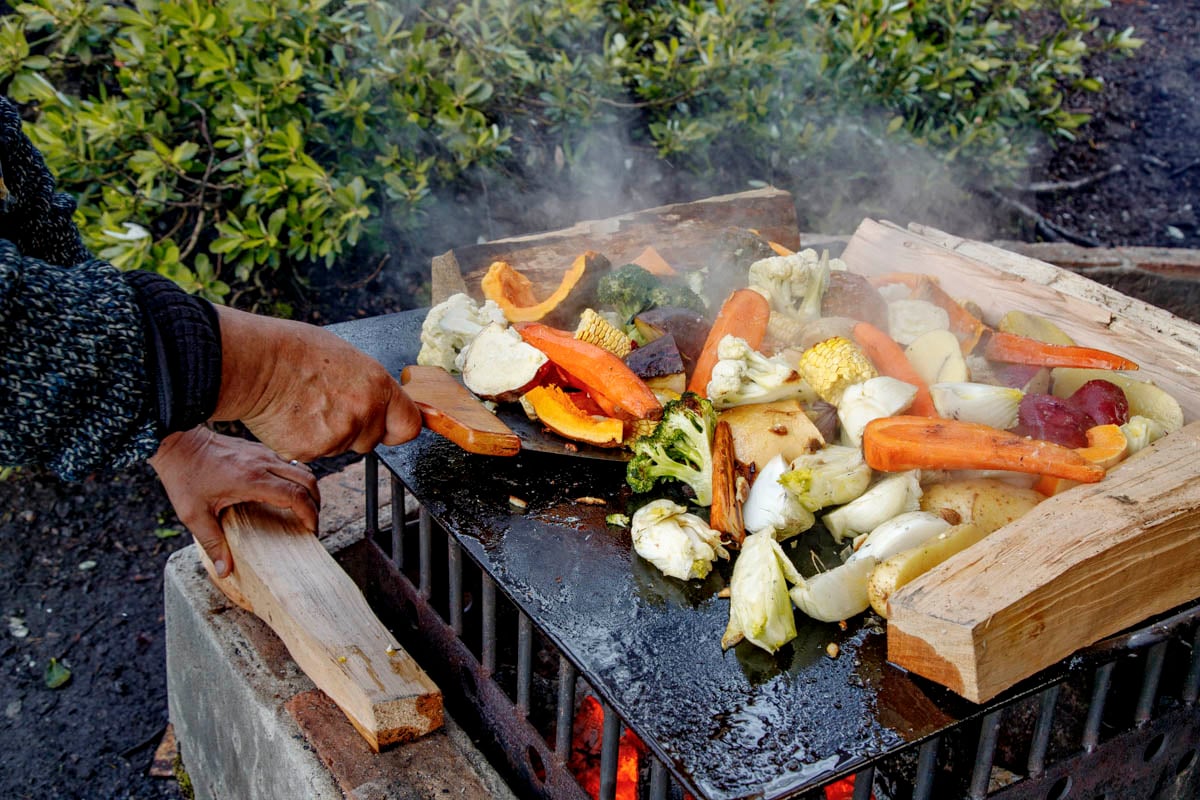
Learn how to perfectly choose, cut, and cook fresh vegetables on the plancha. Feel free to swap any veggies for your personal favorites or whatever you have in the fridge.
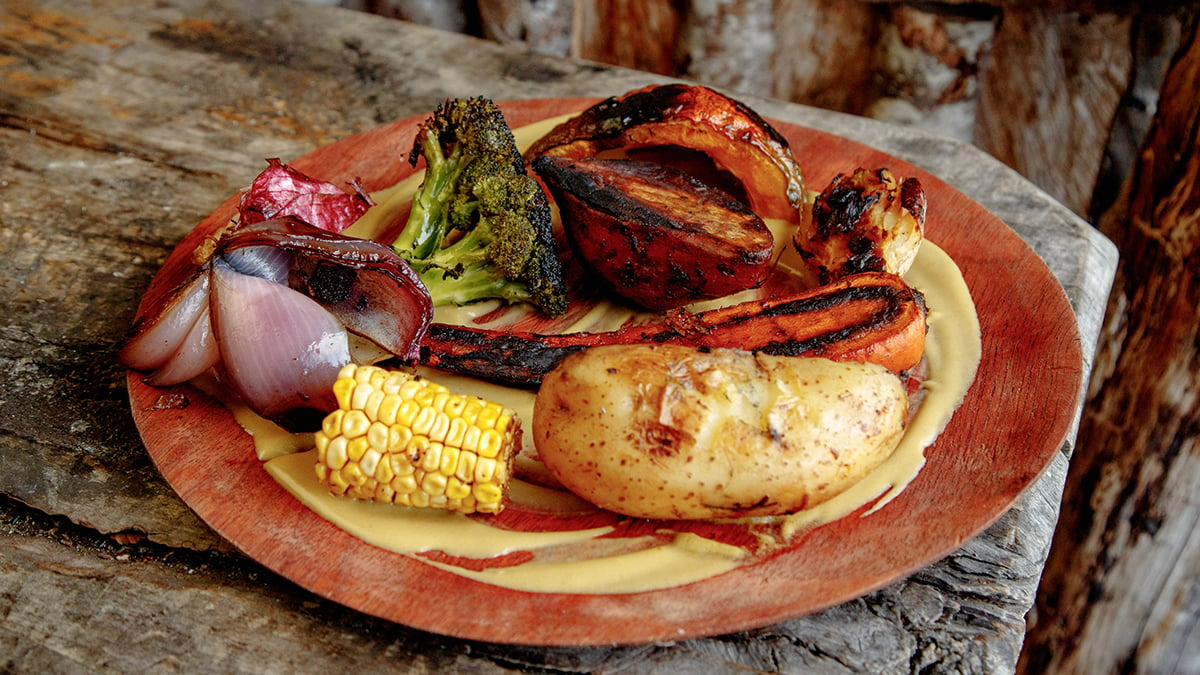
Whip up a wonderfully versatile mustard vinaigrette that you’ll want to put on everything.
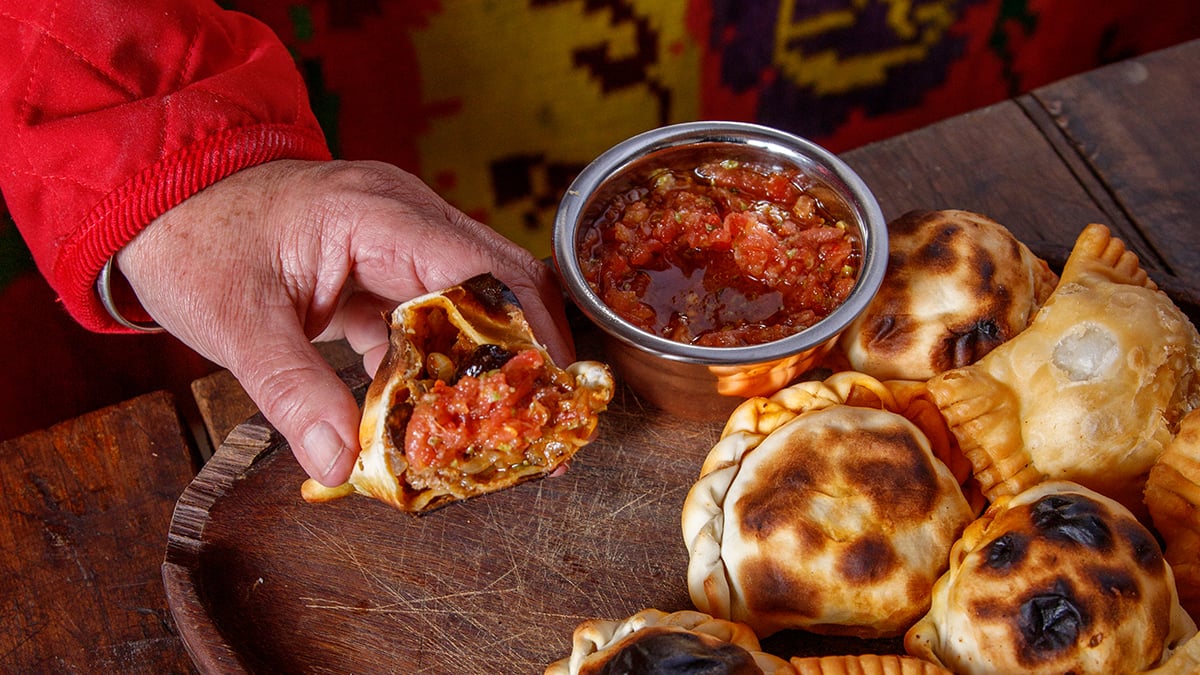
No empanada is complete without llajua sauce, a spicy empanada dipping sauce popular in Northern Argentina and Bolivia. It’s simple to make and incredibly flavorful, bringing an added punch to the empanadas.
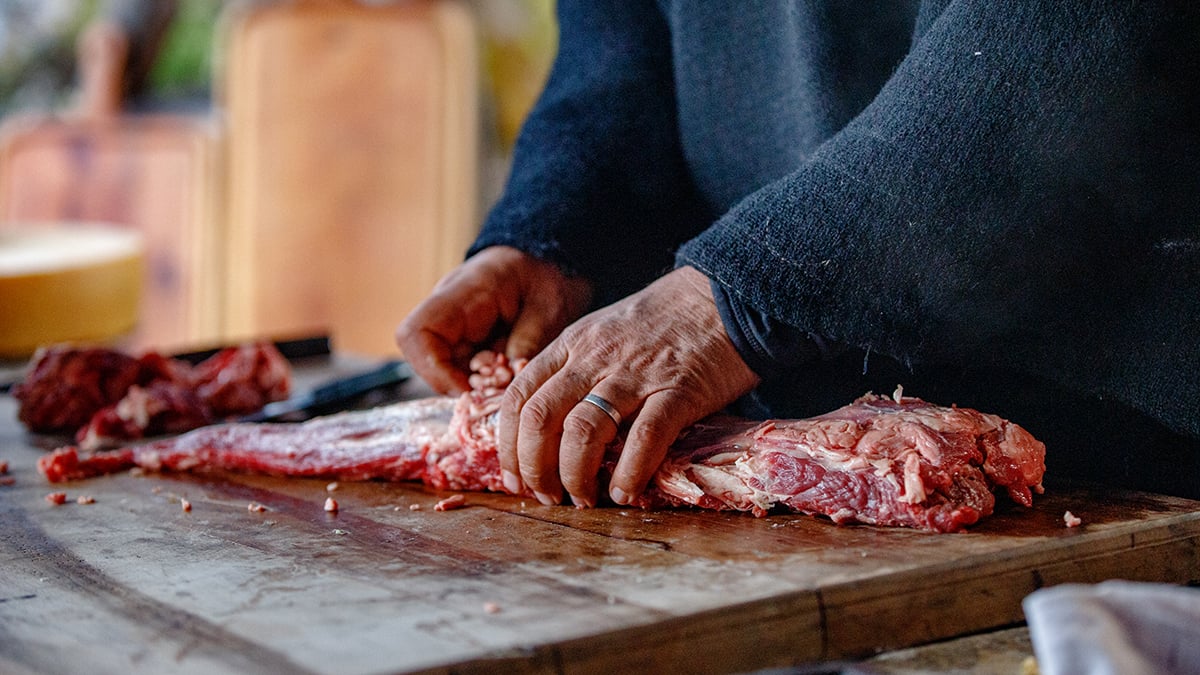
Venture across Argentina and you’ll find meat empanadas everywhere. Make Francis’s favorite recipe — it’s easy, delicious, and bursting with juicy flavor.
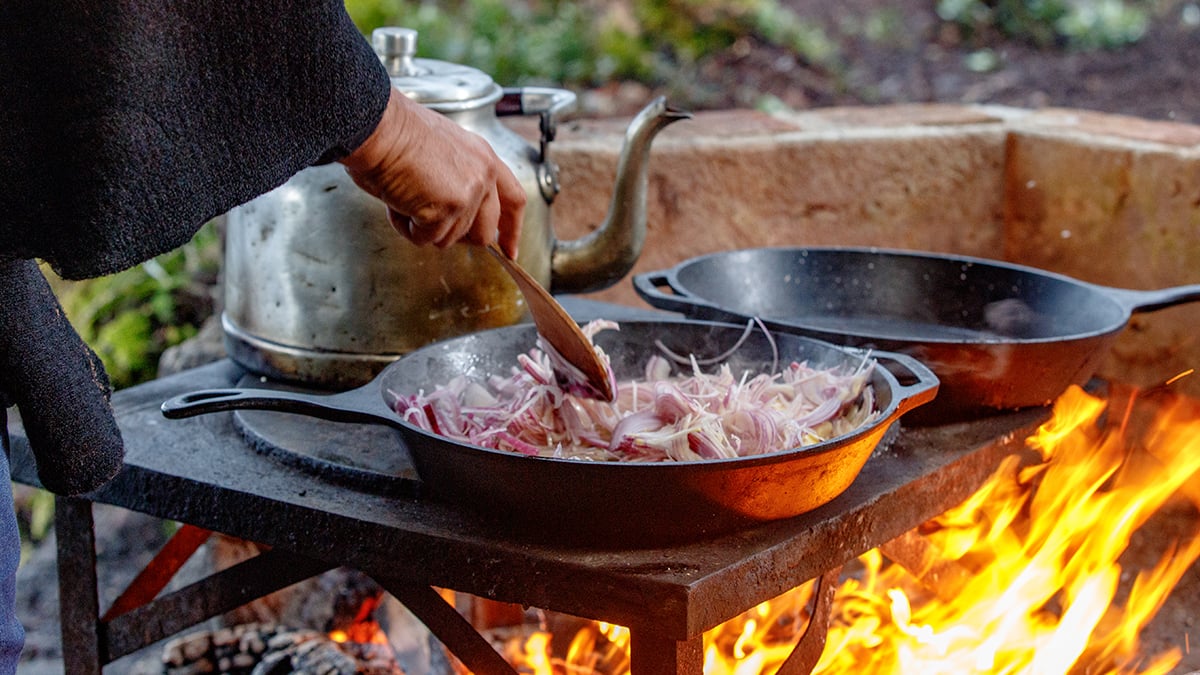
A classic filling for empanadas in Argentina, stuff the dough with a sweet and savory cheese and onion mixture. After it cooks, it will be oozing with delicious cheese.
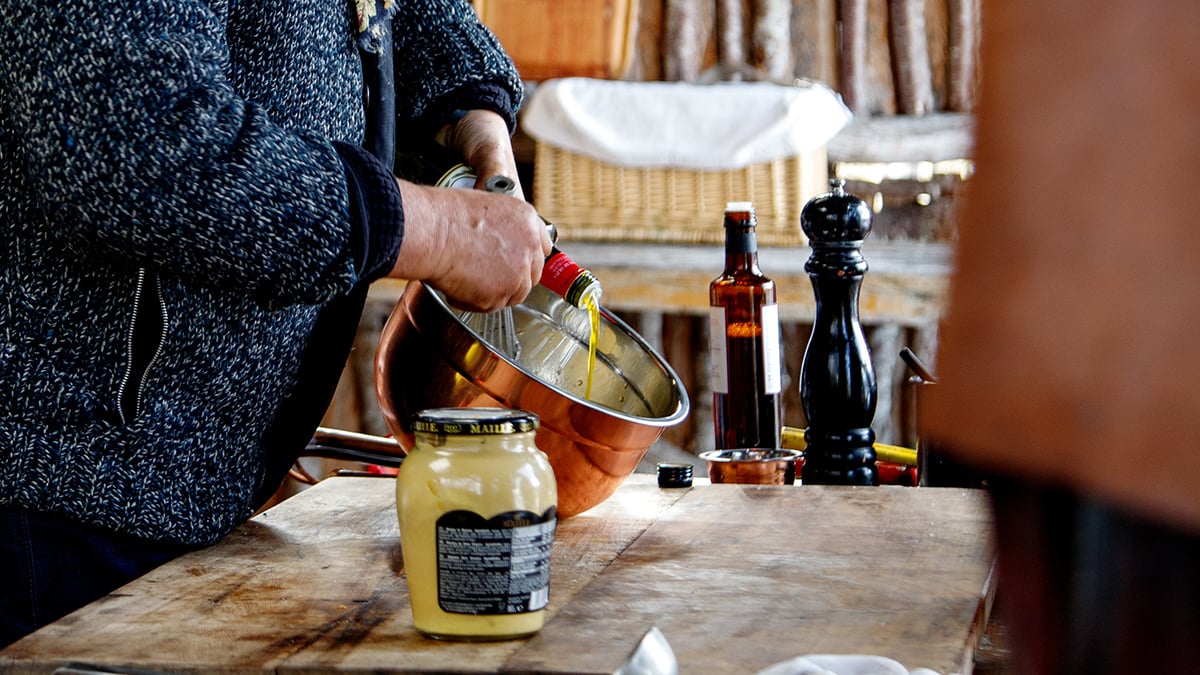
Learn to make a wonderfully versatile vinaigrette dressing that you’ll want to put on everything.
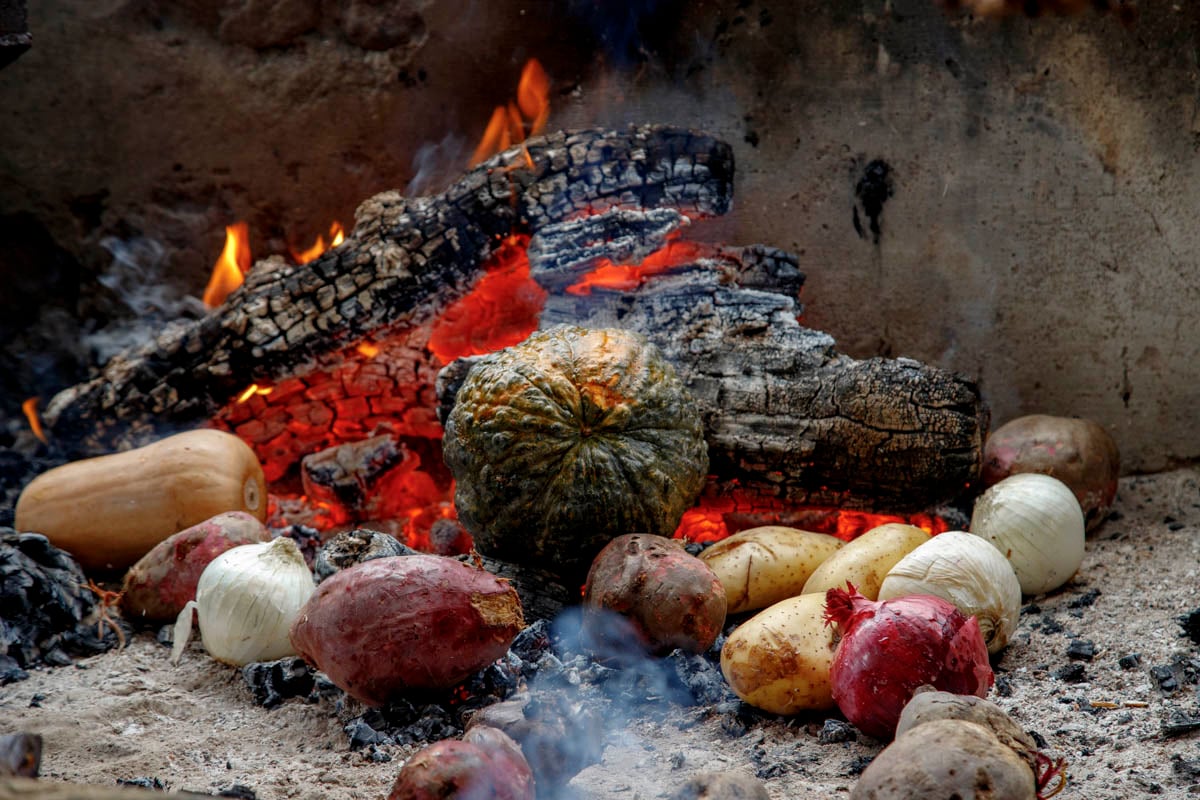
A great vegetarian side that will have everyone wanting more. Learn about the rescoldo method of cooking, burning vegetables in ashes.
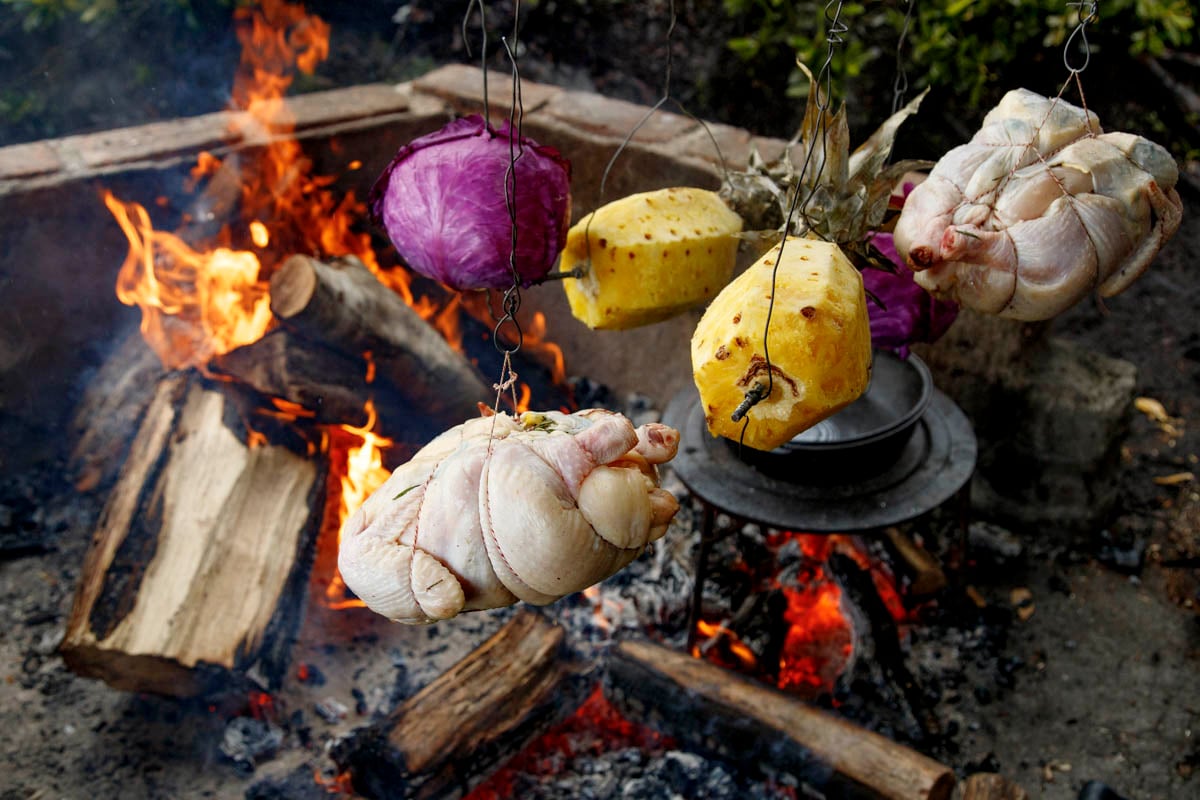
Join Francis in his quincho, the outdoor kitchen, as he teaches two of his seven live-fire signature cooking techniques: hanging and slowly roasting pineapple and cabbage over hot embers. Don’t have a vertical grill? No problem. He’ll teach how to cook it in the oven, too.
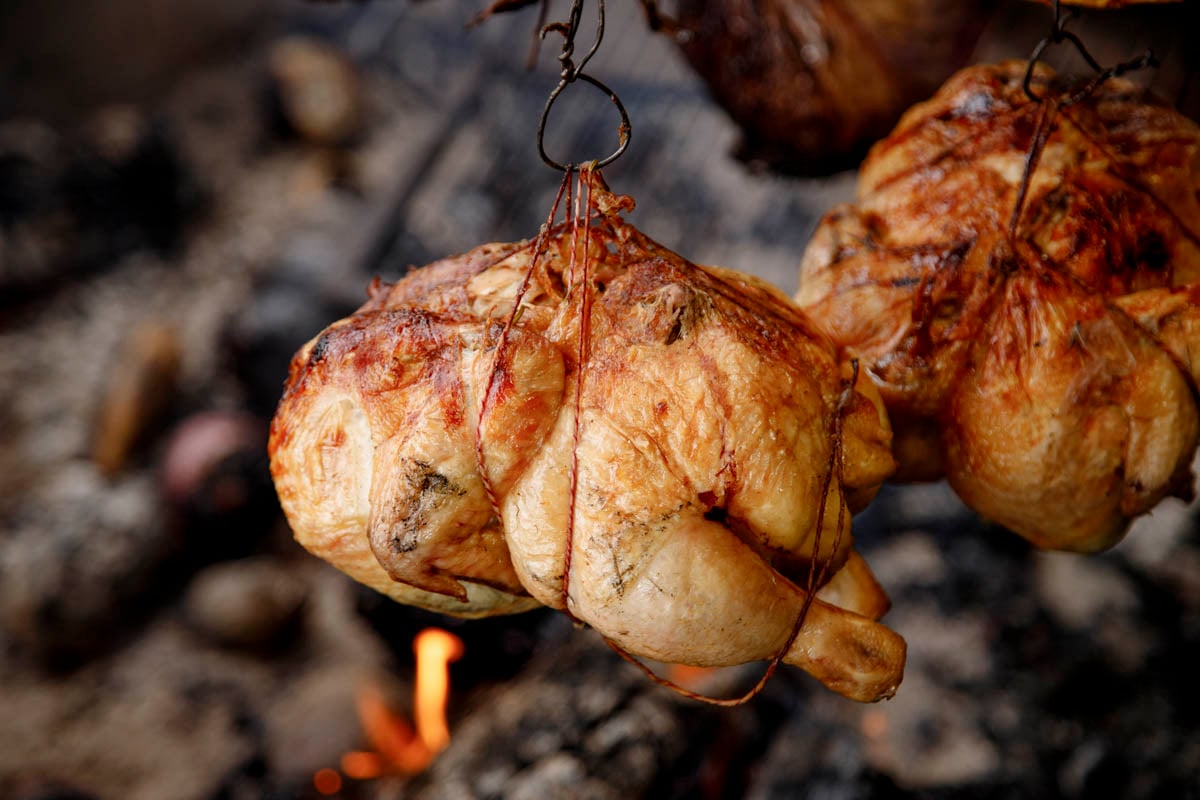
Whether you’re hanging the chickens over the open-fire like Francis, or roasting it in your own home oven, you’ll learn how to make this festive and comforting dish that is ideal for the holidays or any special occasion.
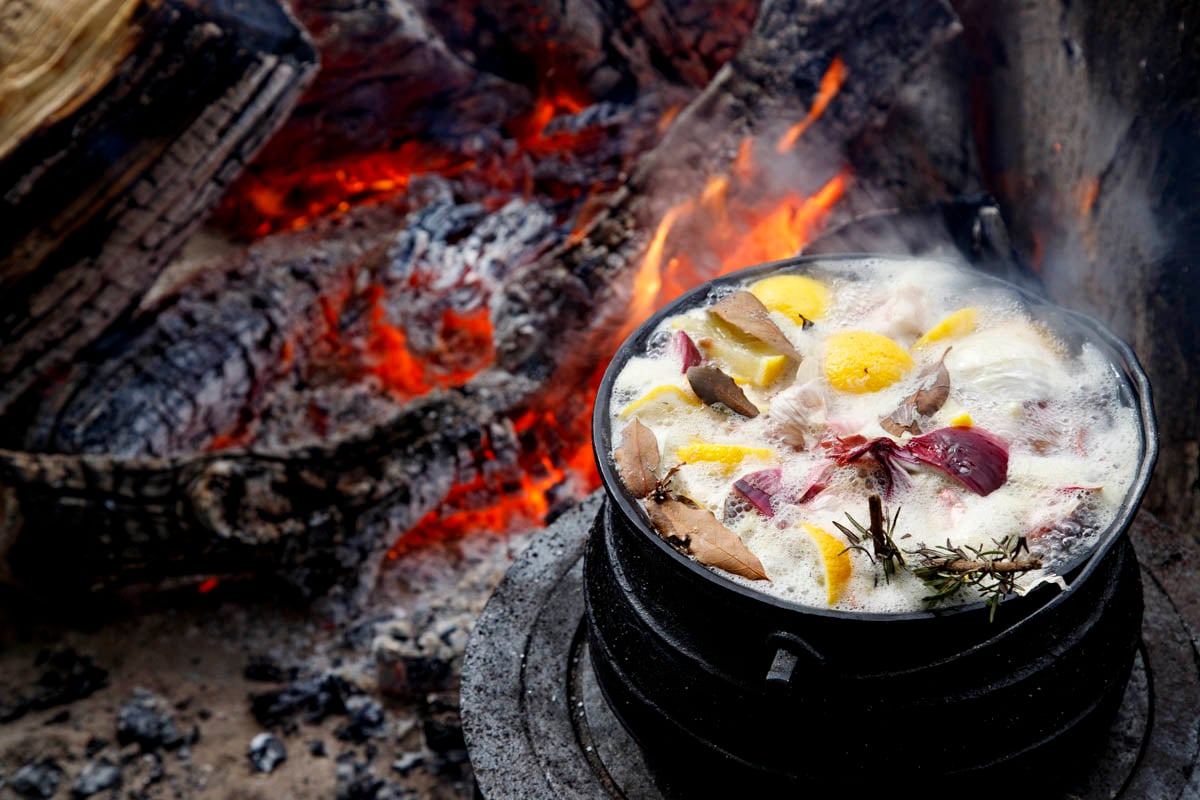
Prepare an easy brine to ensure the juiciest chicken, which you ladle over as the bird roasts.
“Asado on Sundays is more like a ceremony than a meal. Asado is a religion in our country.” – @Francismallmann. It’s Sunday on the island and Francis and his team are preparing for a barbecue feast: Chorizos, steaks, ribs, sweetbreads, salads, and free-flowing red Argentine wine abound the table. In this short documentary, Francis takes you into his Patagonian world to see the true meaning of this sacred ritual that defines Argentine culture. Francis shows you how to grill, make all the barbecue sides and sauces, and most of course, the importance of being in good company.
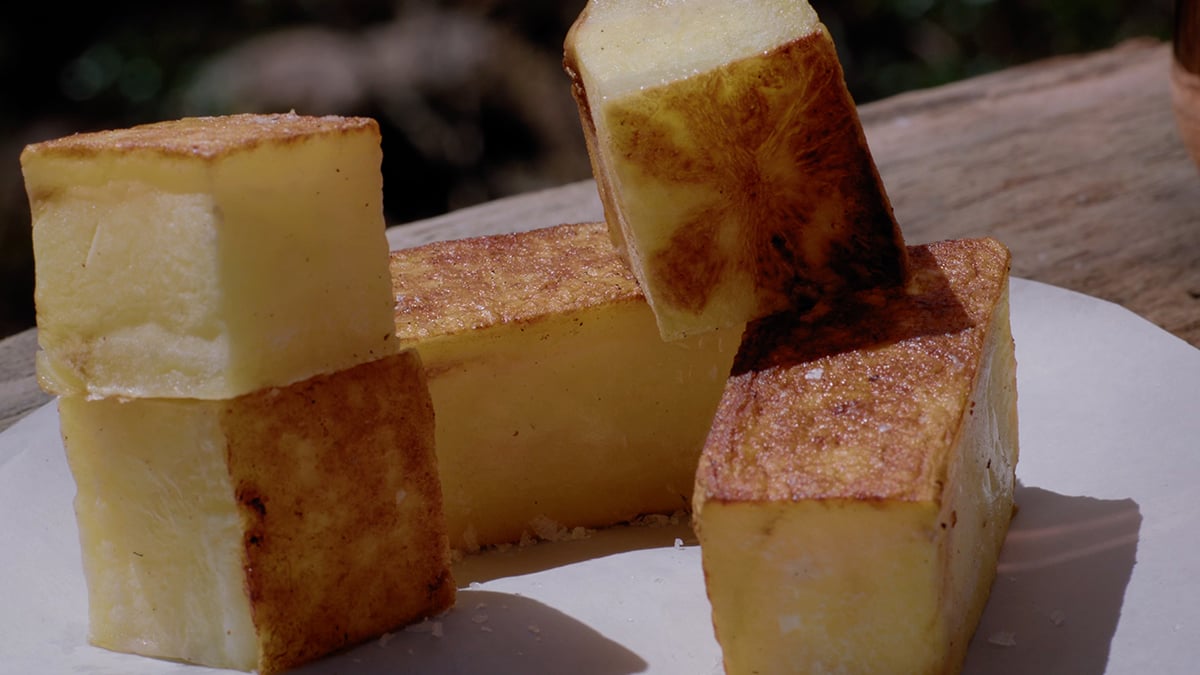
A wonderful riff on roasted potatoes, just be sure not to rinse potatoes because the starch is what will give them texture and color.
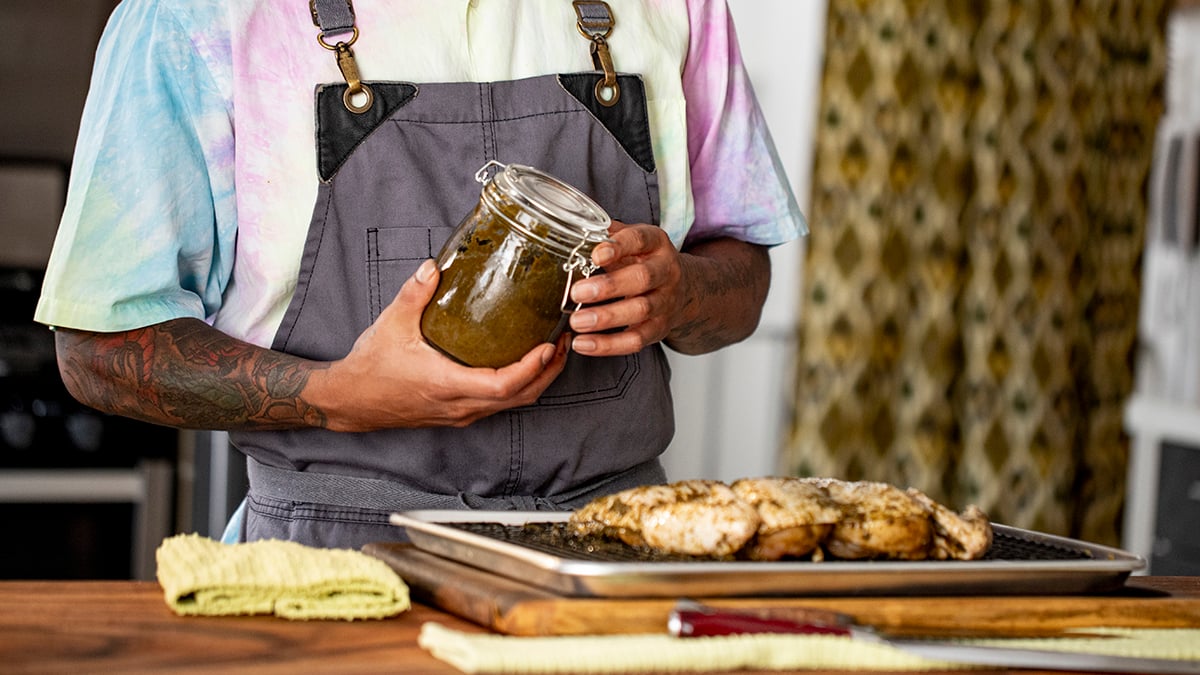
A deep, flavorful, and spicy marinade to create the perfect Jamaican jerk chicken at home. Kwame shows you how spending a little extra time in prep will lead to the most delicious jerk you’ve ever tasted.
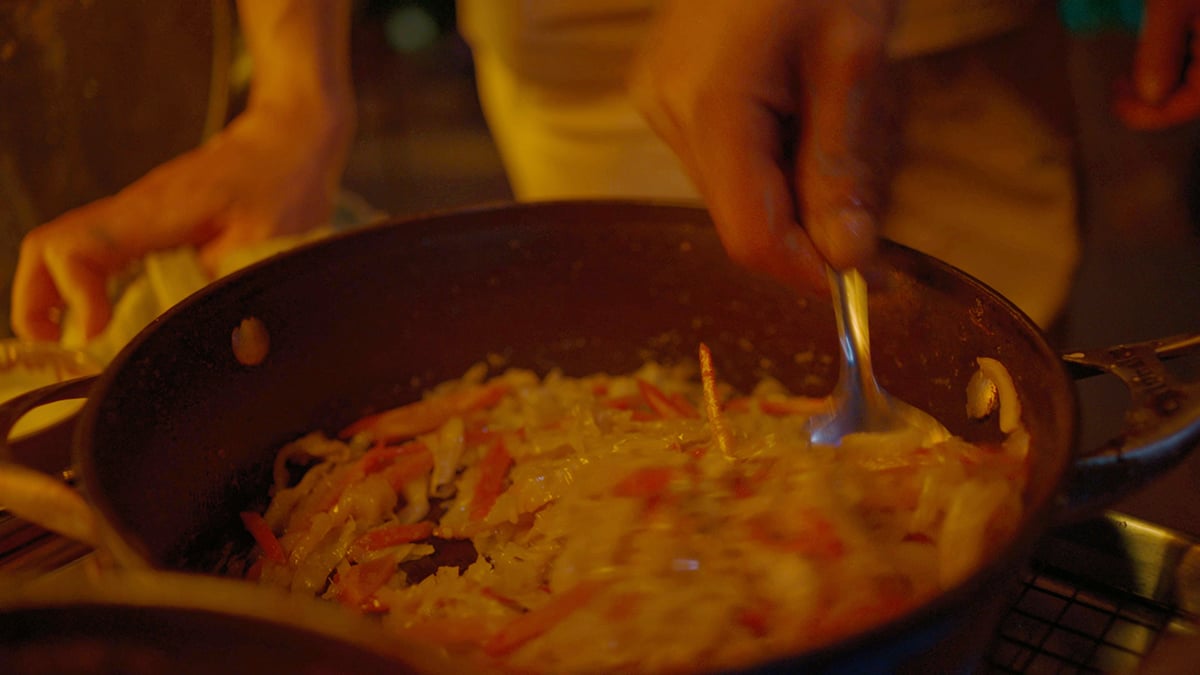
Kwame’s right hand man, Paz, teaches you how to create this beautiful accompaniment to jerk chicken. Prep it on the stove or make right on the grill.
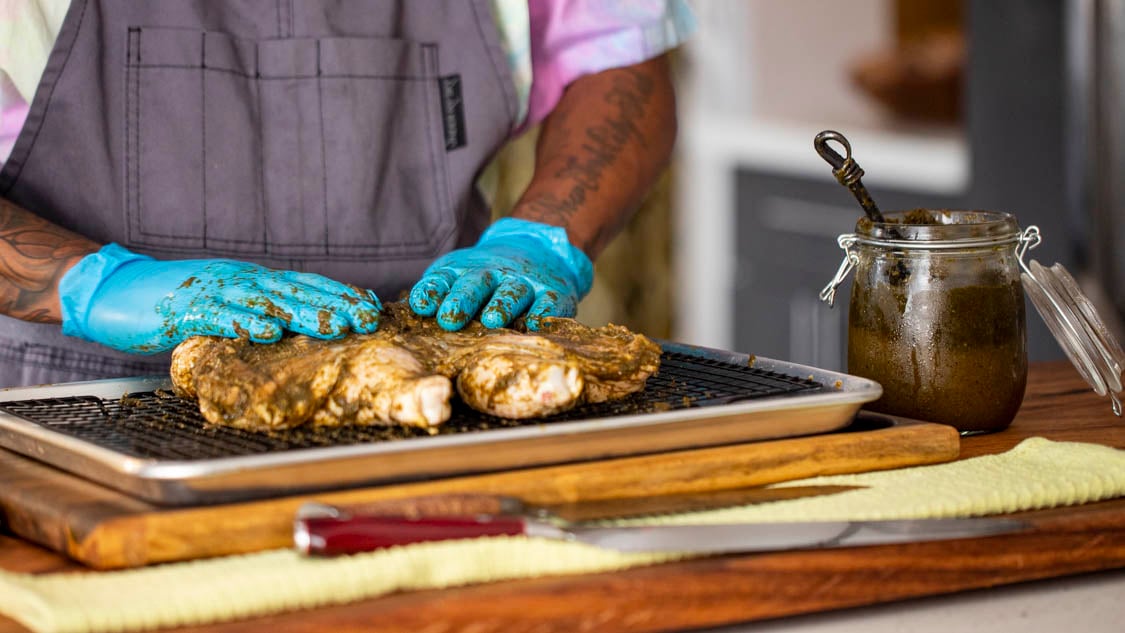
Jerk is a symphony of flavors, encapsulating the finesse, attention to detail, and all of the nuances of Jamaican cooking. Learn how to make Jamaica’s most famous dish that is known for its intense depth of smokiness, heat, spice, and flavor. Kwame has been eating jerk chicken his whole life, and shares with you his secret recipe – a three day process – that tells the story of the history of Jamaica.
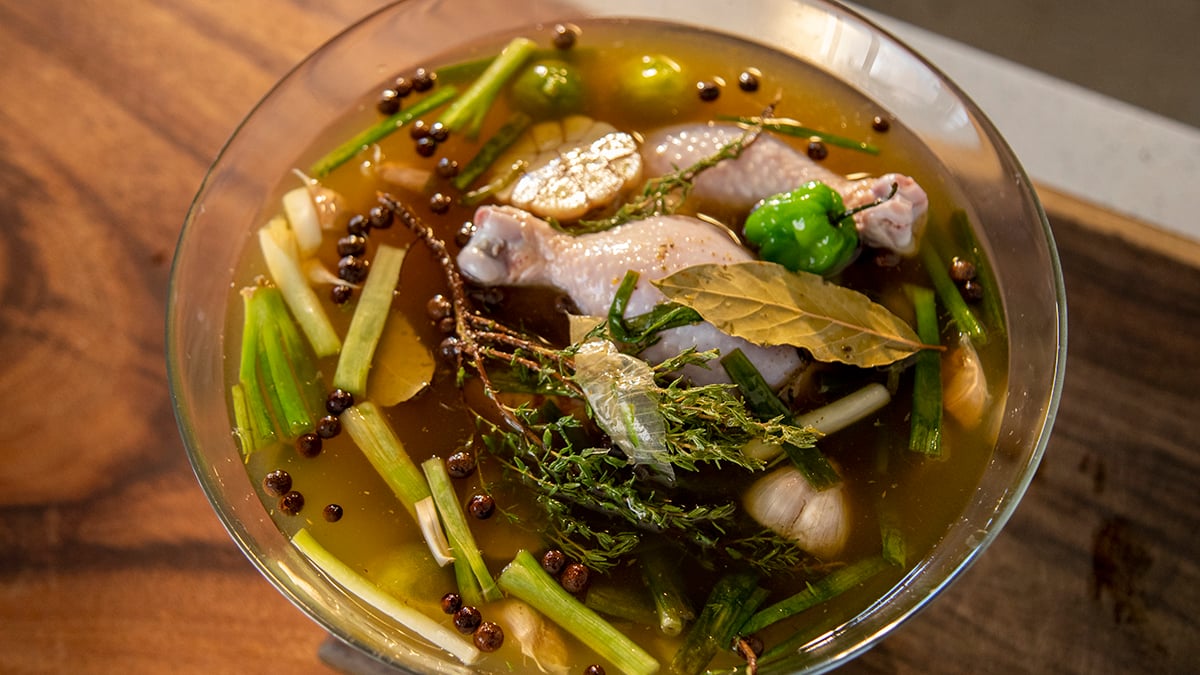
Learn to make this simple brine to ensure the juiciest, most flavorful chicken. Soak the meat in the brine for 12 to 36 hours, the more time the merrier (and juicier).
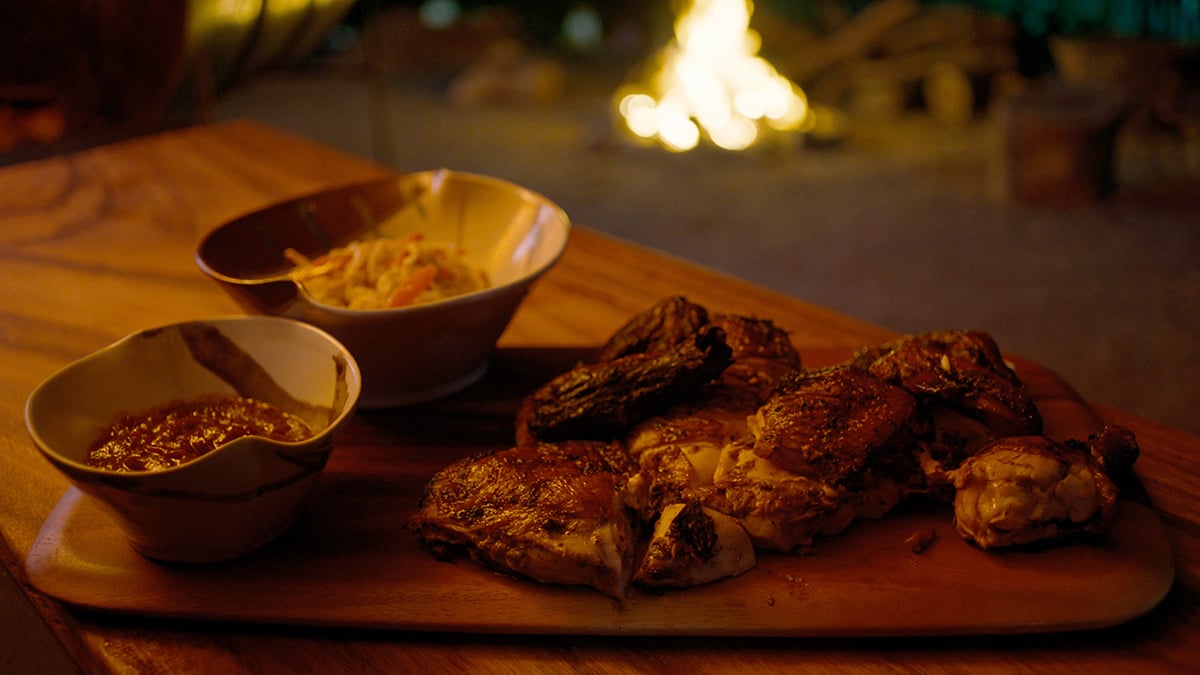
This barbecue sauce will add just that extra bit of tangy, spicy flavor to your jerk – or any grilled meats – that will have everyone praising your rise to BBQ greatness.
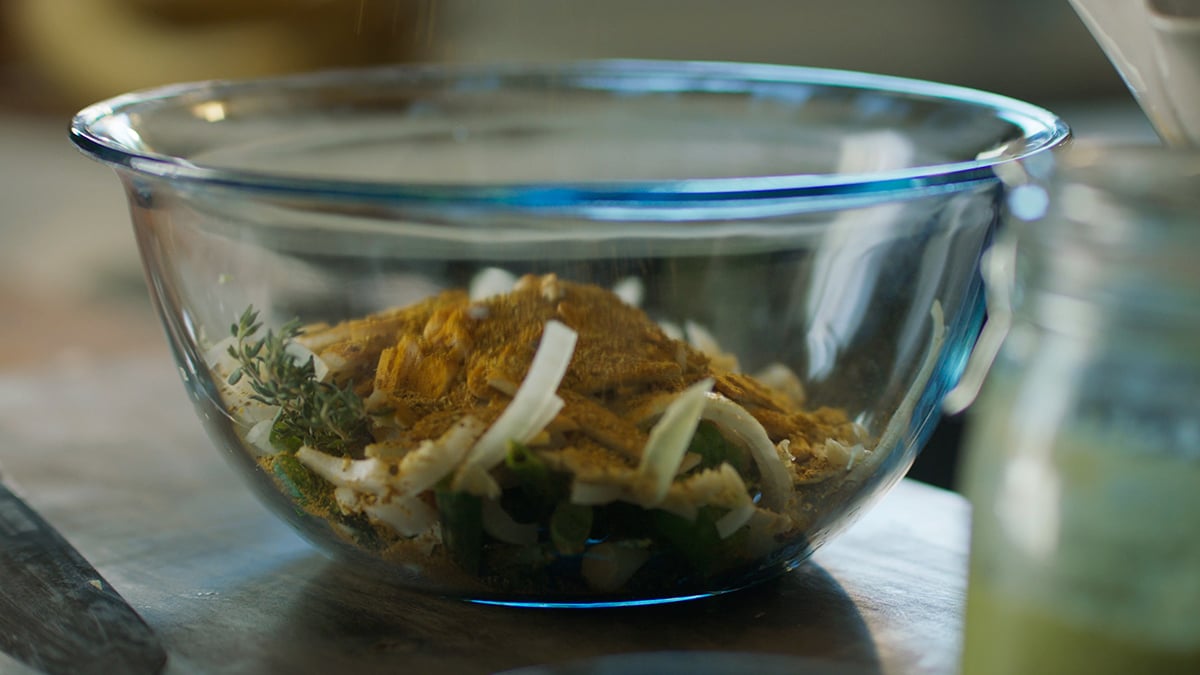
The story of curry goat is rooted in the history of Indian immigrants to Jamaica, who brought their layered spice mixes to the Caribbean capital. Kwame teaches his version of the classic, which will have mouths watering and coming back for seconds.
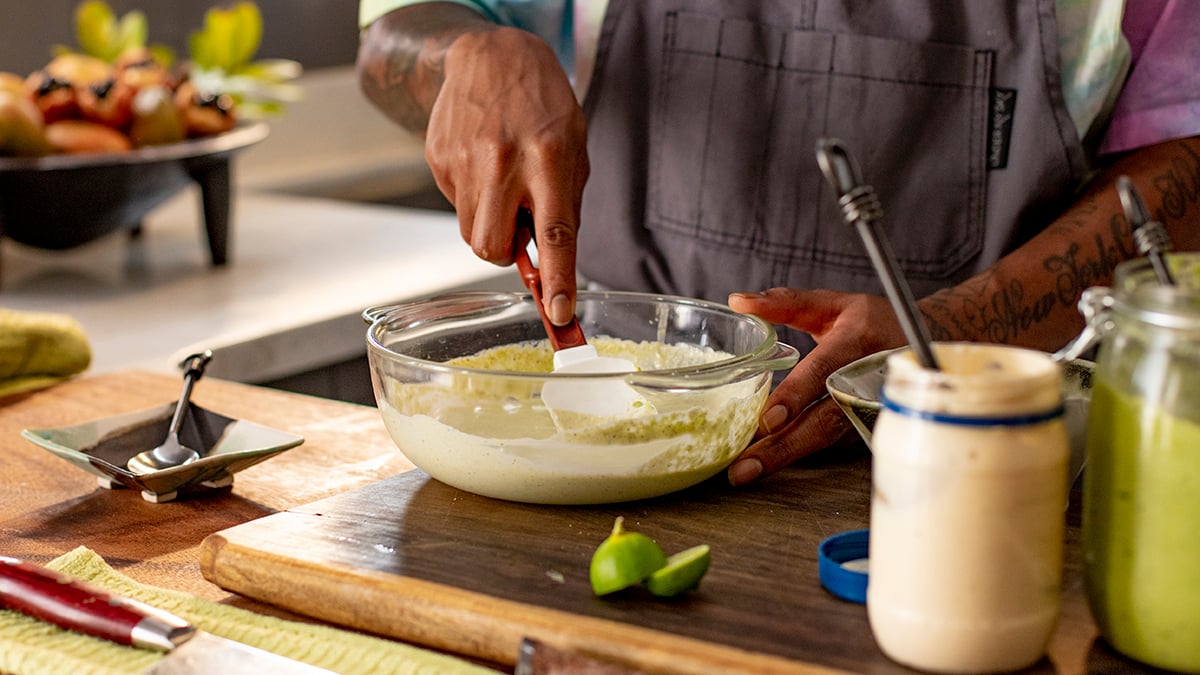
Enhance mayo with all-purpose seasoning, marination, and tangy lime juice. Then, smother green seasoning aioli all over the golden brown delicious potatoes.

What chefs in the industry call Golden, Brown, and Delicious potatoes, Kwame teaches you the method to making this french fry alternative. Parboil, cool, smash and fry, you’ll be shocked how simple, and fantastic these potatoes are.
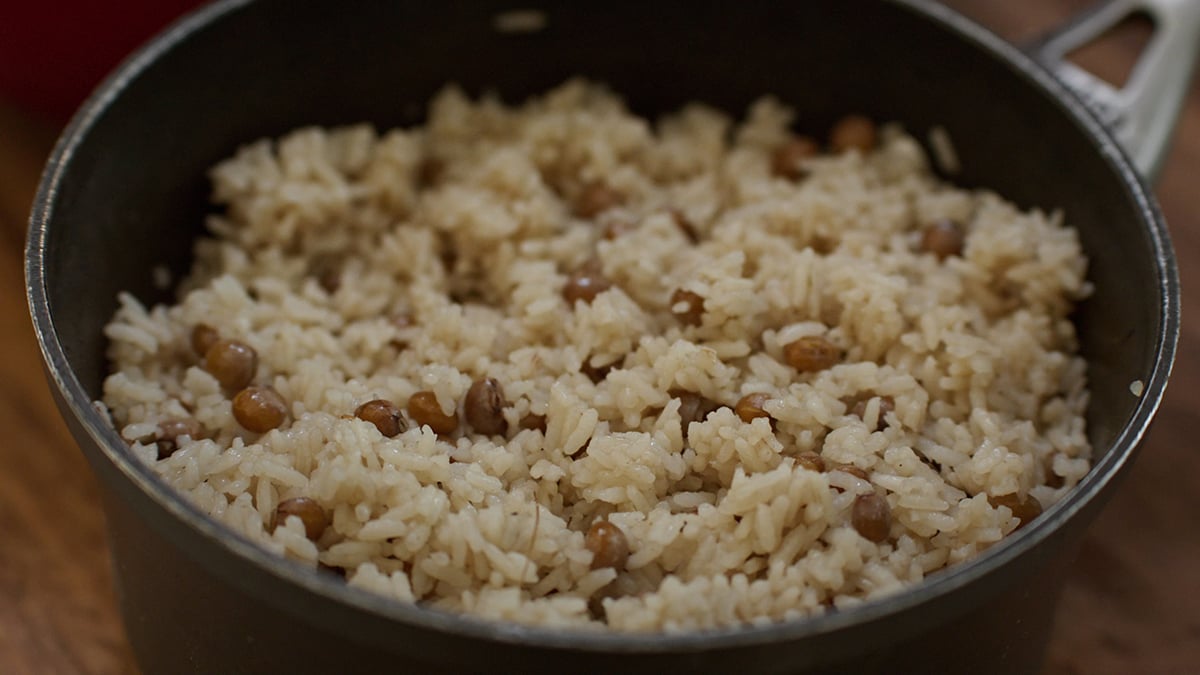
This tropical pea dish works wonders alongside savory mains. Kwame shows you how to perfectly cook the peas and season to delight.
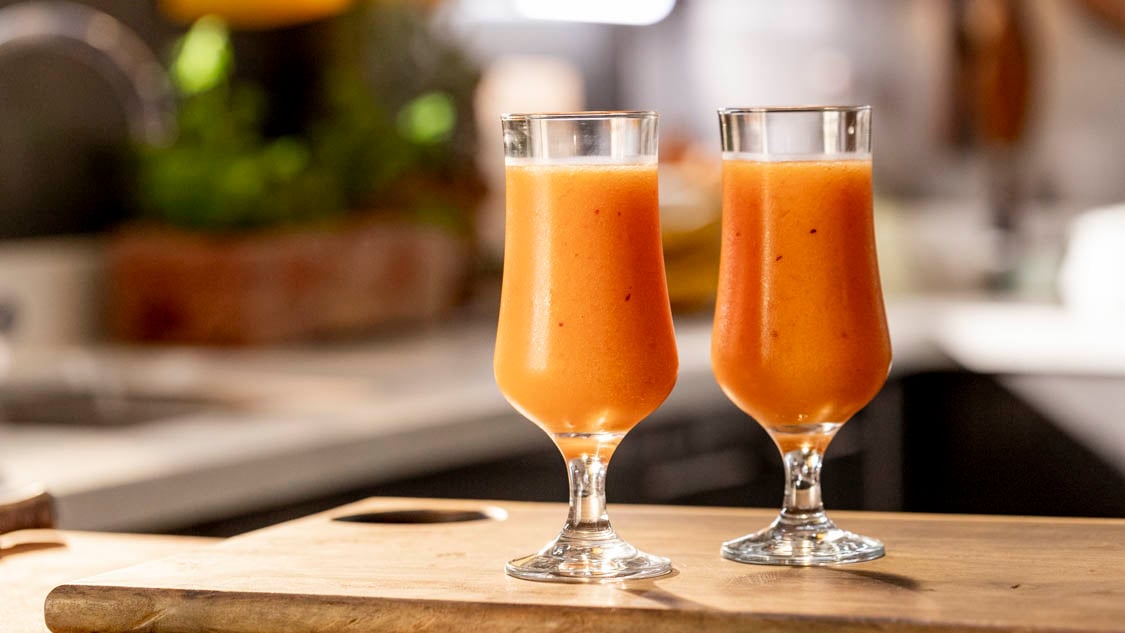
We’re not going to lie, this is by far one of the most satisfying libations you can make. Use a variety of fresh fruit and both white and dark rum to elevate the normal rum punch to new levels.
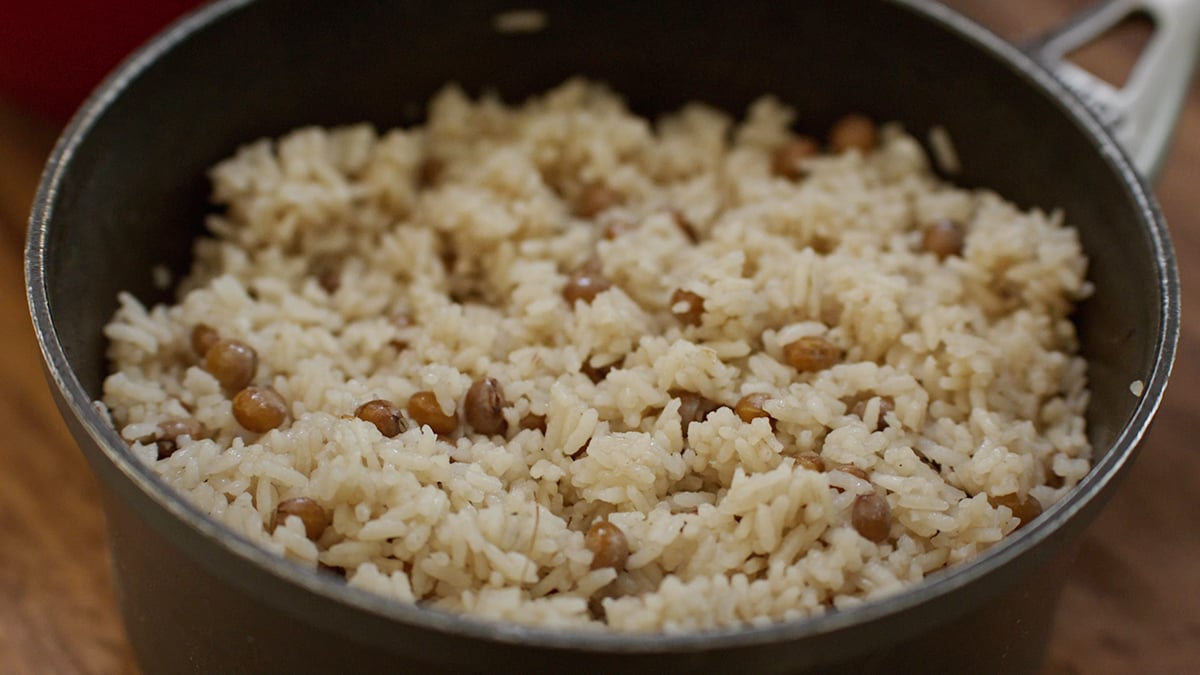
An island classic that will become your new favorite white rice. The coconut milk has a creamy, slightly sweet and nutty profile, and brings the perfect balance to a spicy dish.
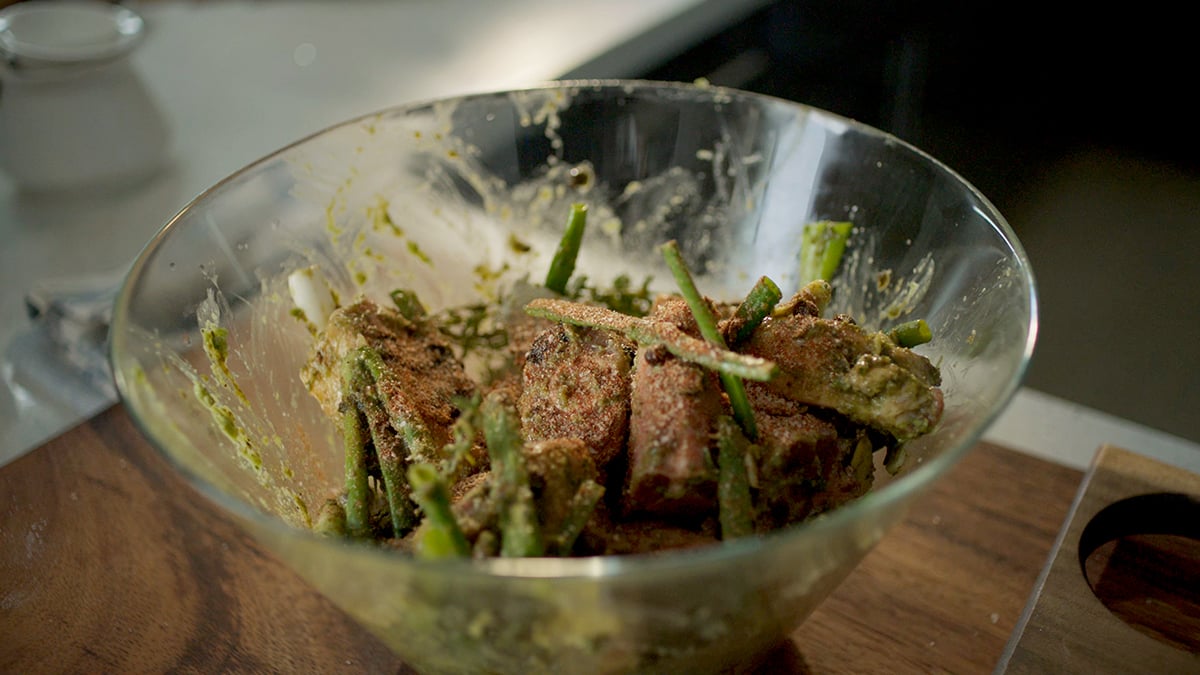
Learn Kwame’s secrets to making the most savory braised oxtails you’ve ever tasted. Based off his mom’s recipe, Kwame takes it to a whole new level with the layering of flavors and time.
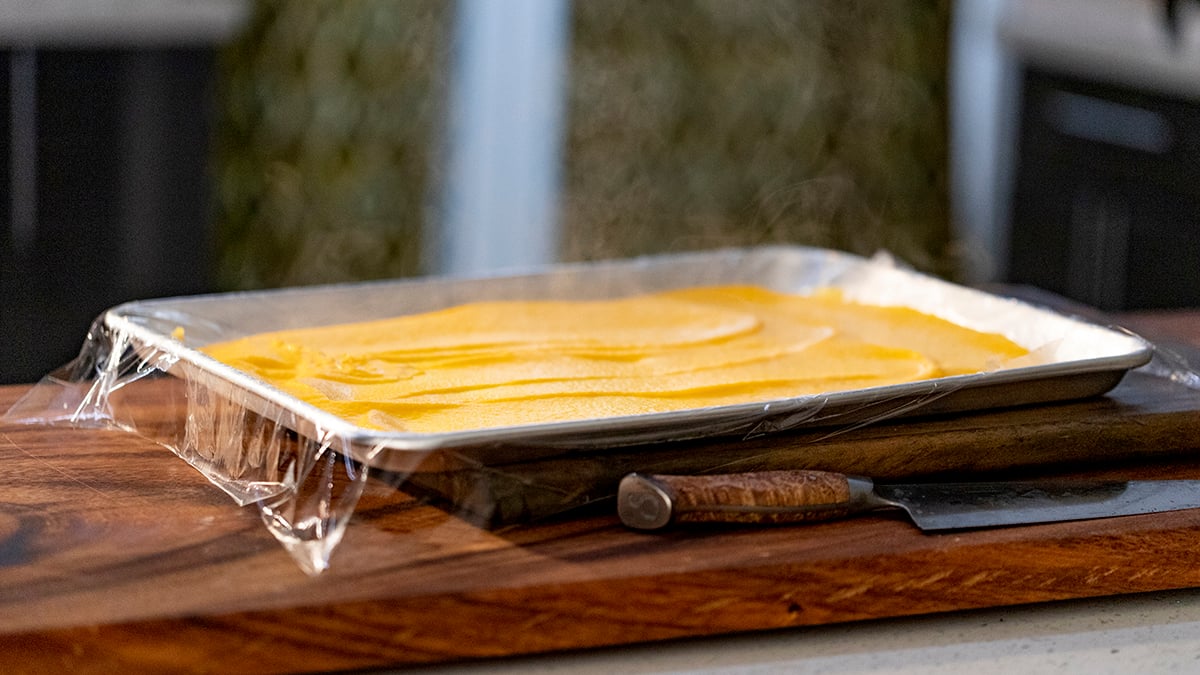
Take your mayonnaise game to the next level, with Kwame’s Afro-Caribbean inspired aioli. It goes with a wide variety of dishes, from potatoes to sandwiches to savory proteins.
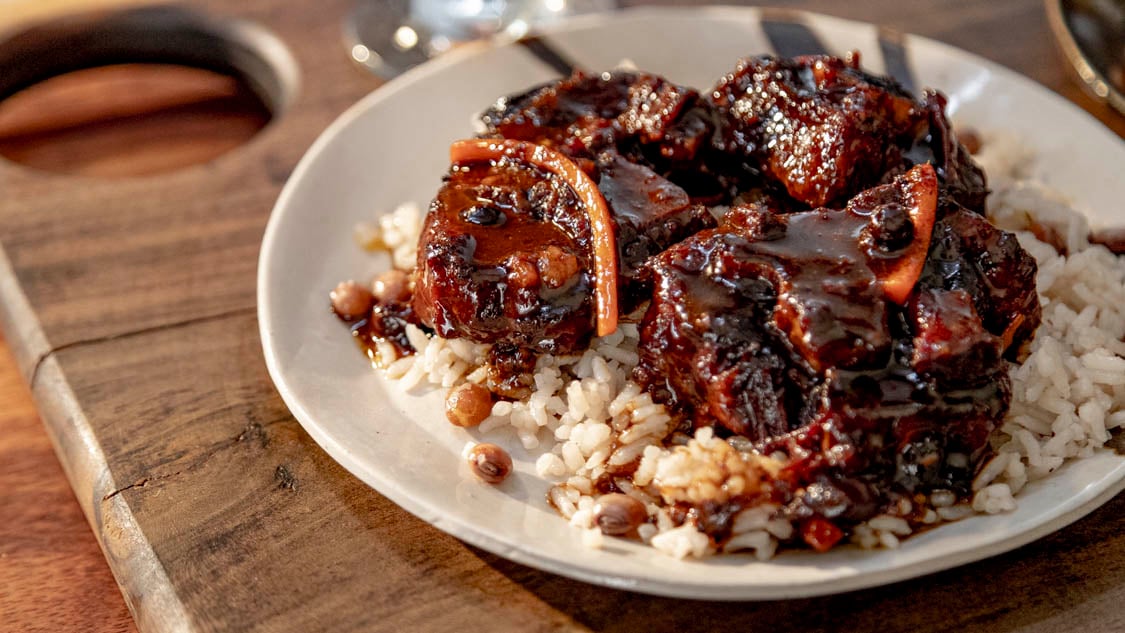
Jewel, Kwame’s mom, just arrived on the island and they are ready to cook together for the first time in Jamaica! In order to properly celebrate Jewel’s visit, they make a Jamaican classic, which is also her favorite dish: Braised oxtails with coconut rice and pigeon peas. And of course, no family gathering would be complete without a cocktail, so they whip up a refreshing rum punch packed with fresh Jamaican fruits.
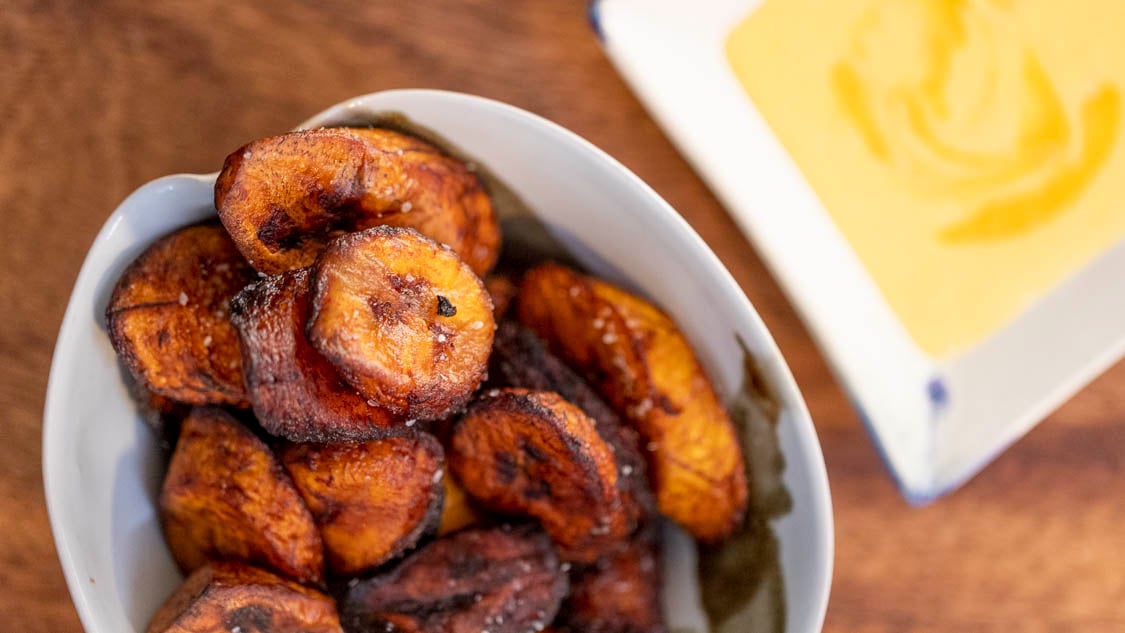
No Jamaican feast would be complete without this starchy, crunchy and satisfying side.
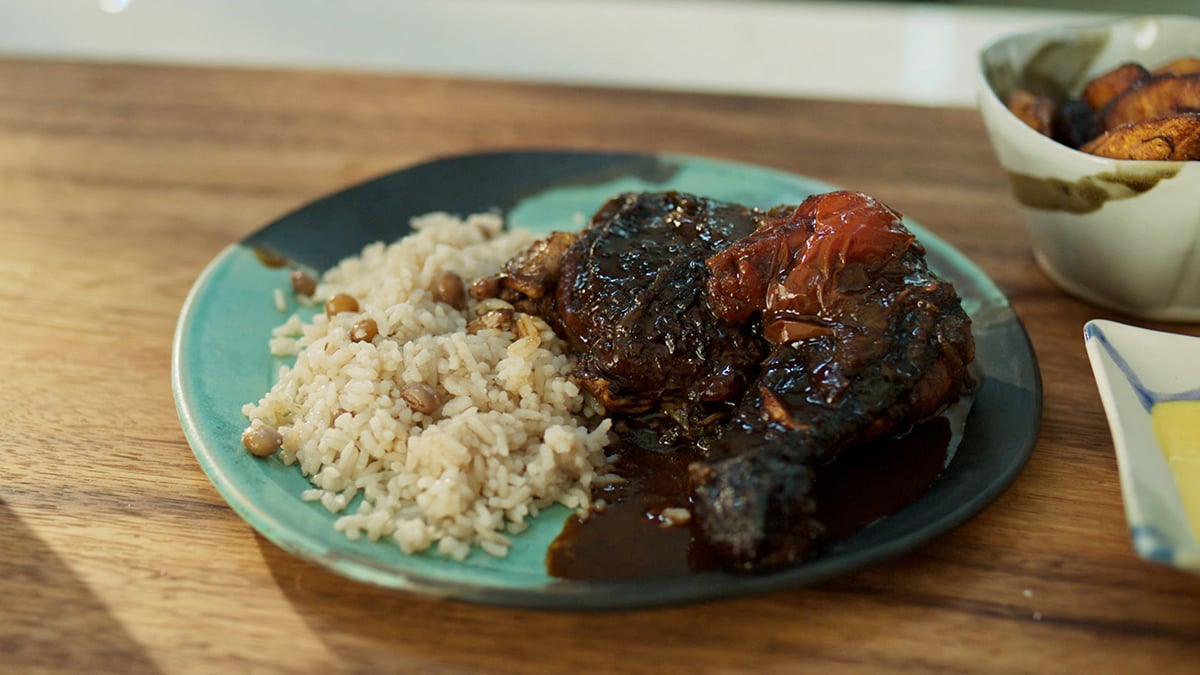
A Jamaican essential, this savory braised chicken will wow taste buds with its brown gravy and spice.
Learn from the World’s Best Chefs.
Create your account to get started
By signing up you accept our Terms and Privacy Policy.